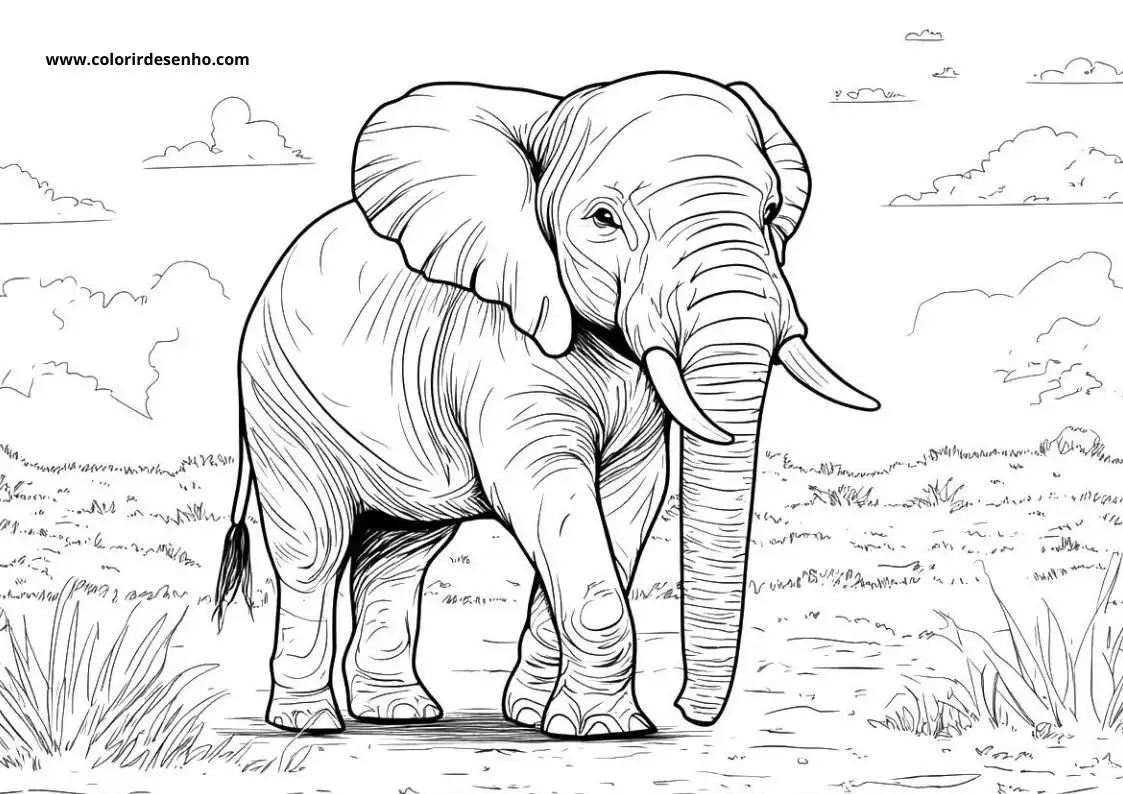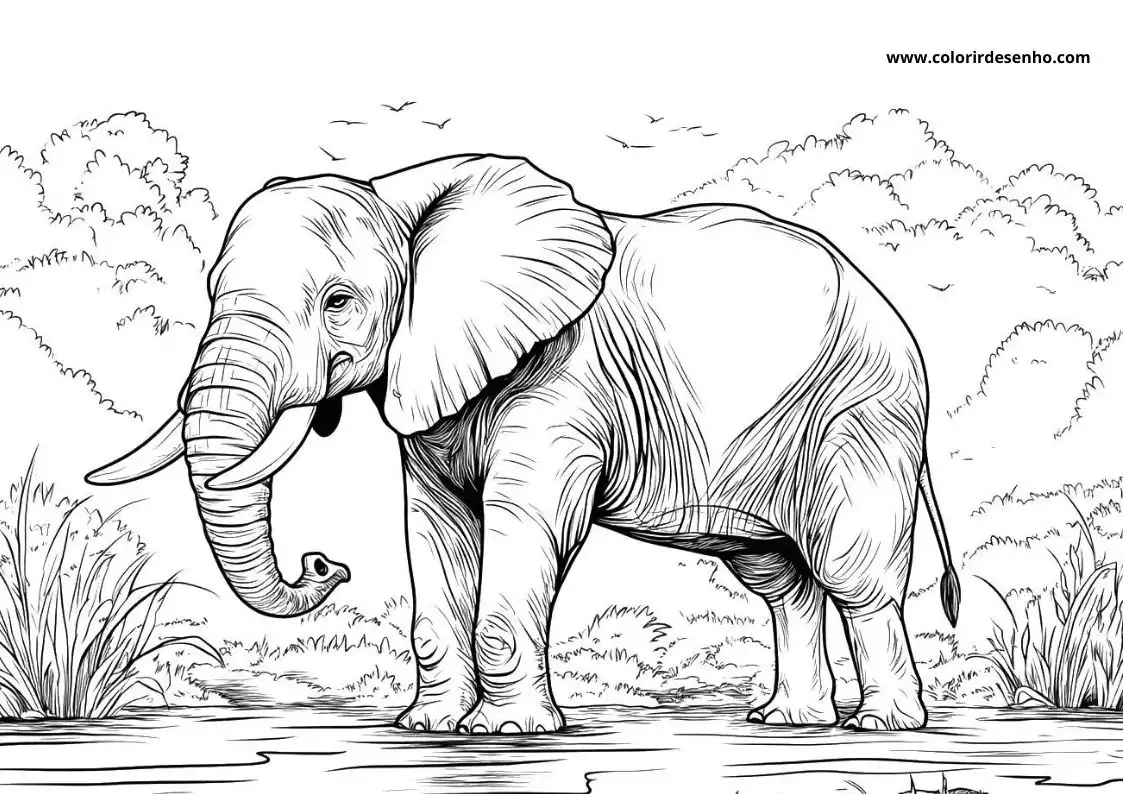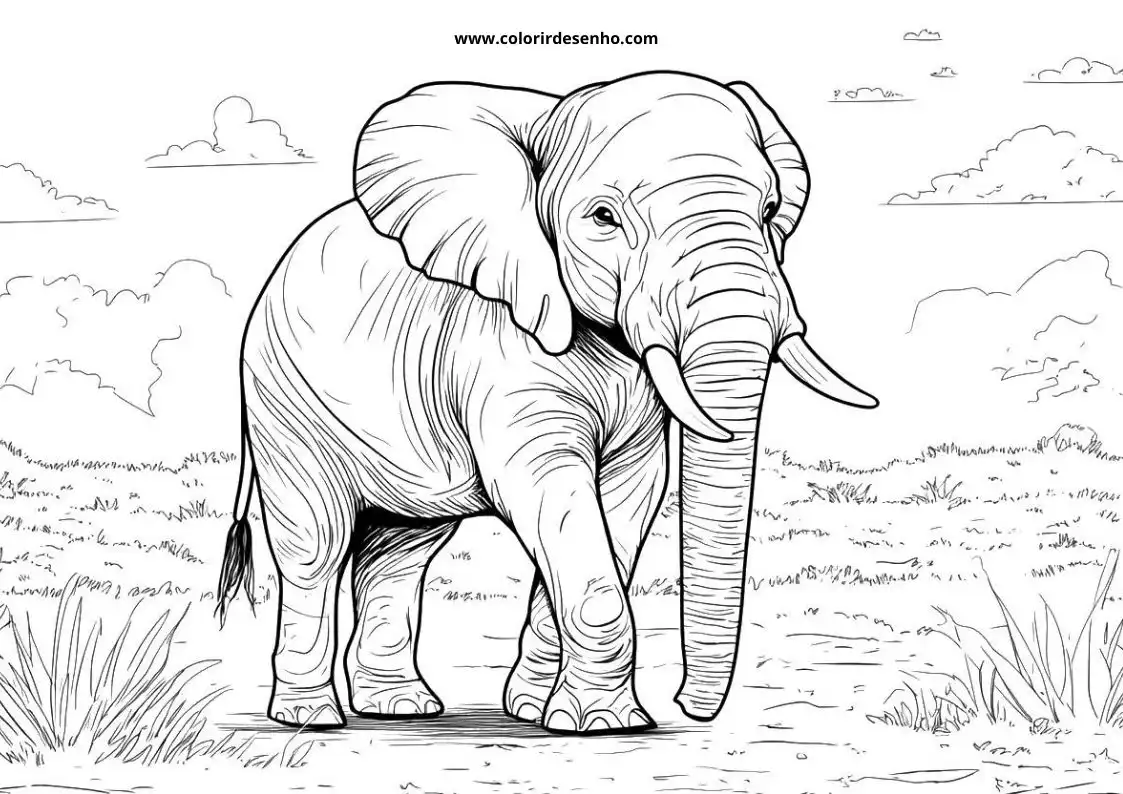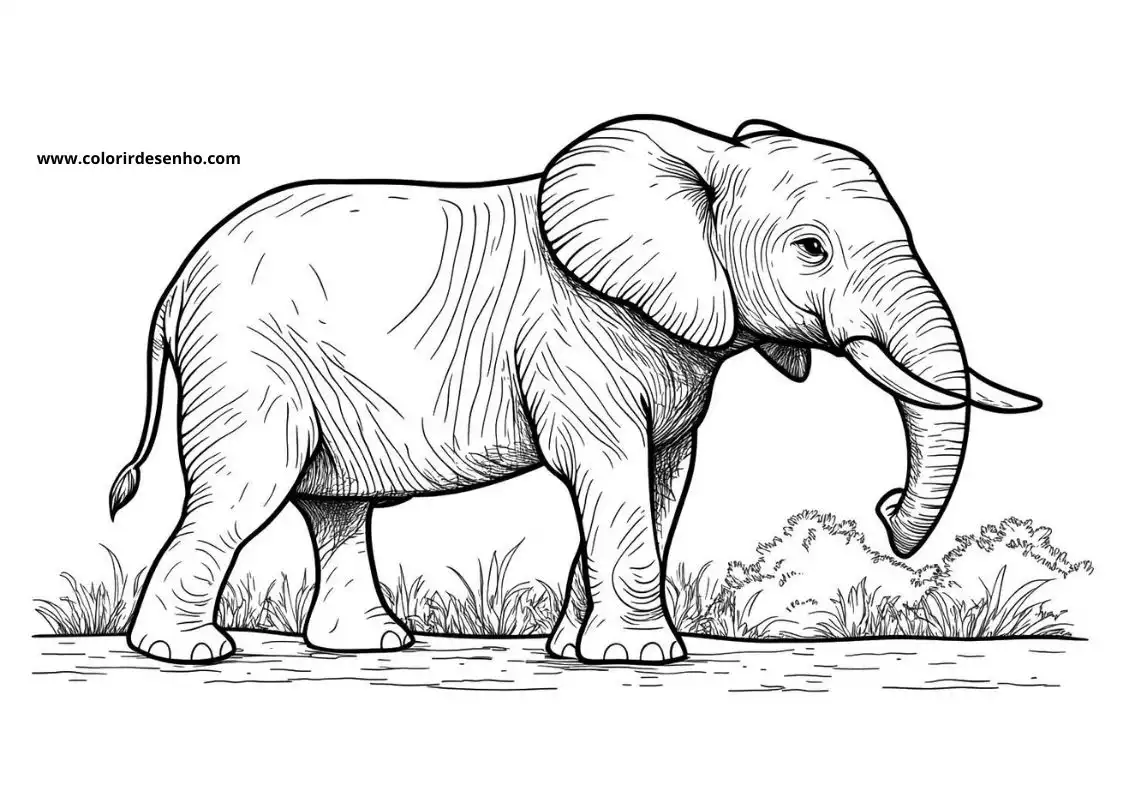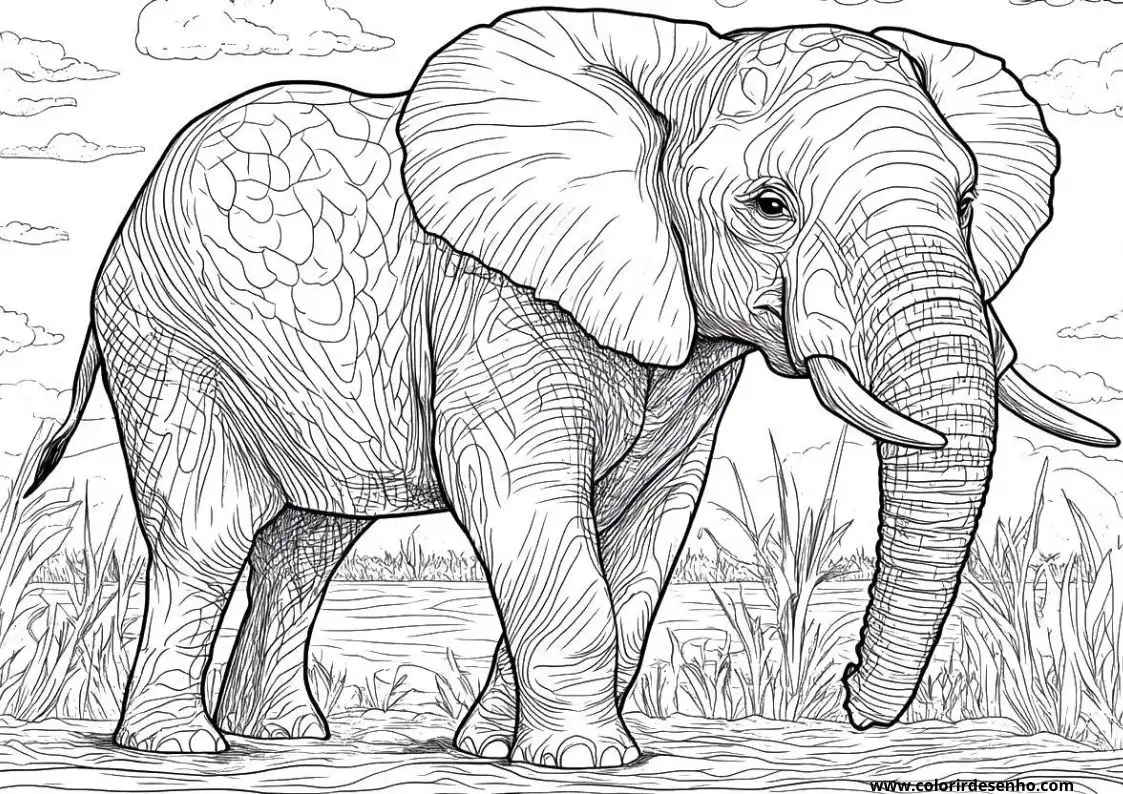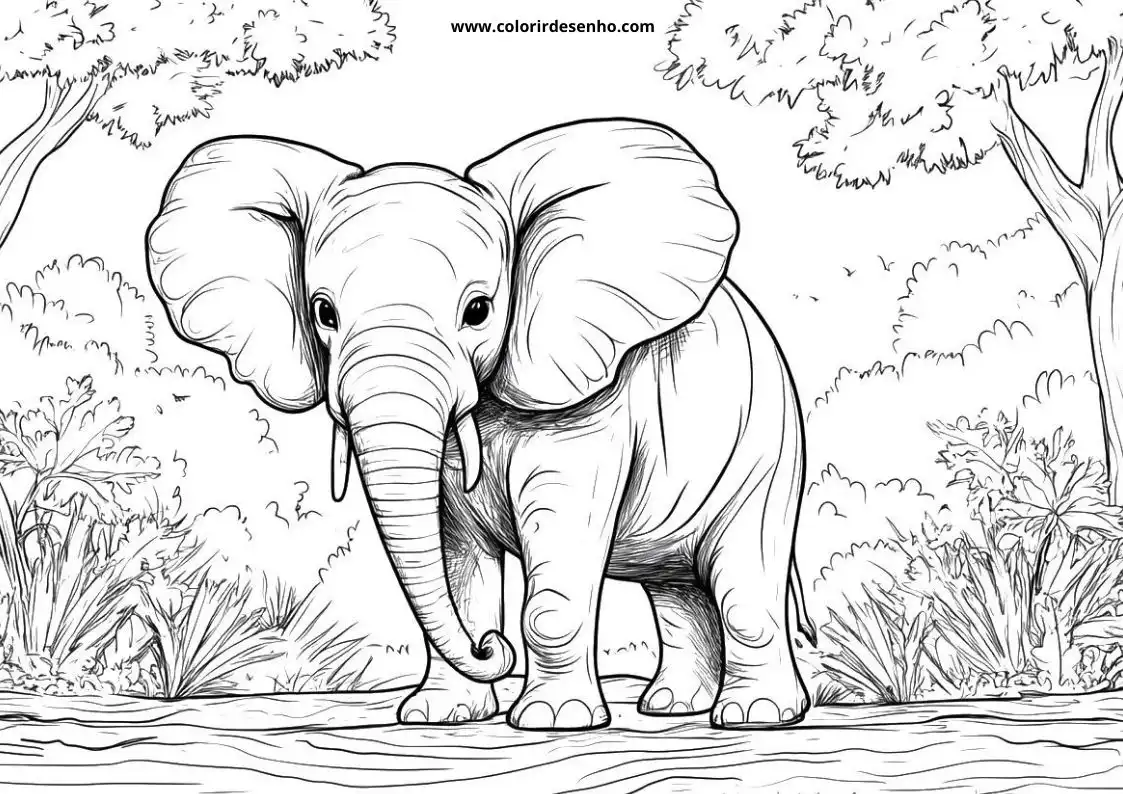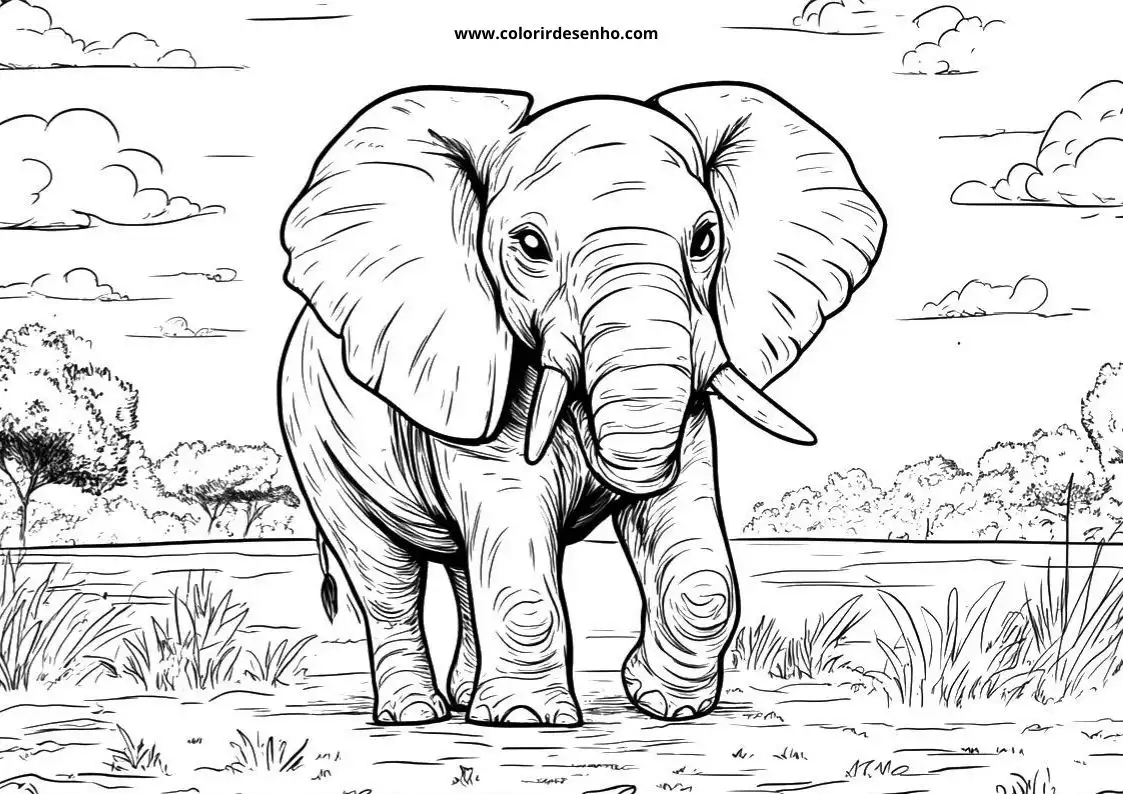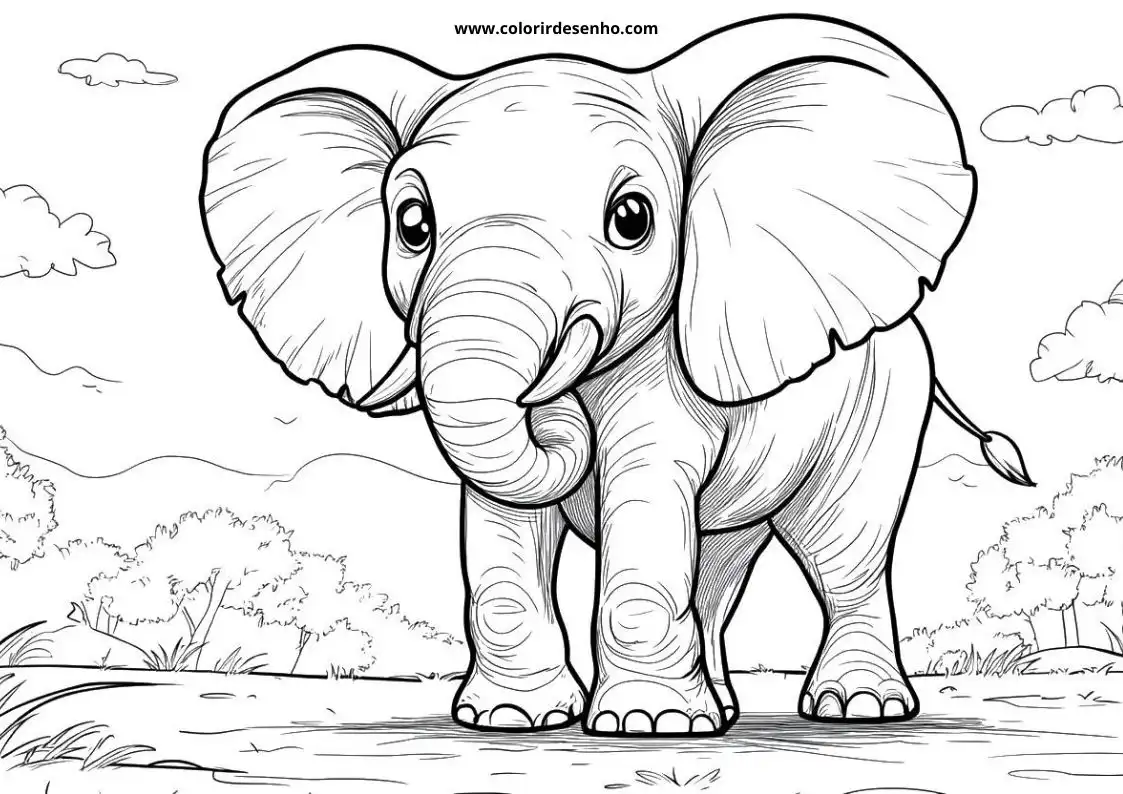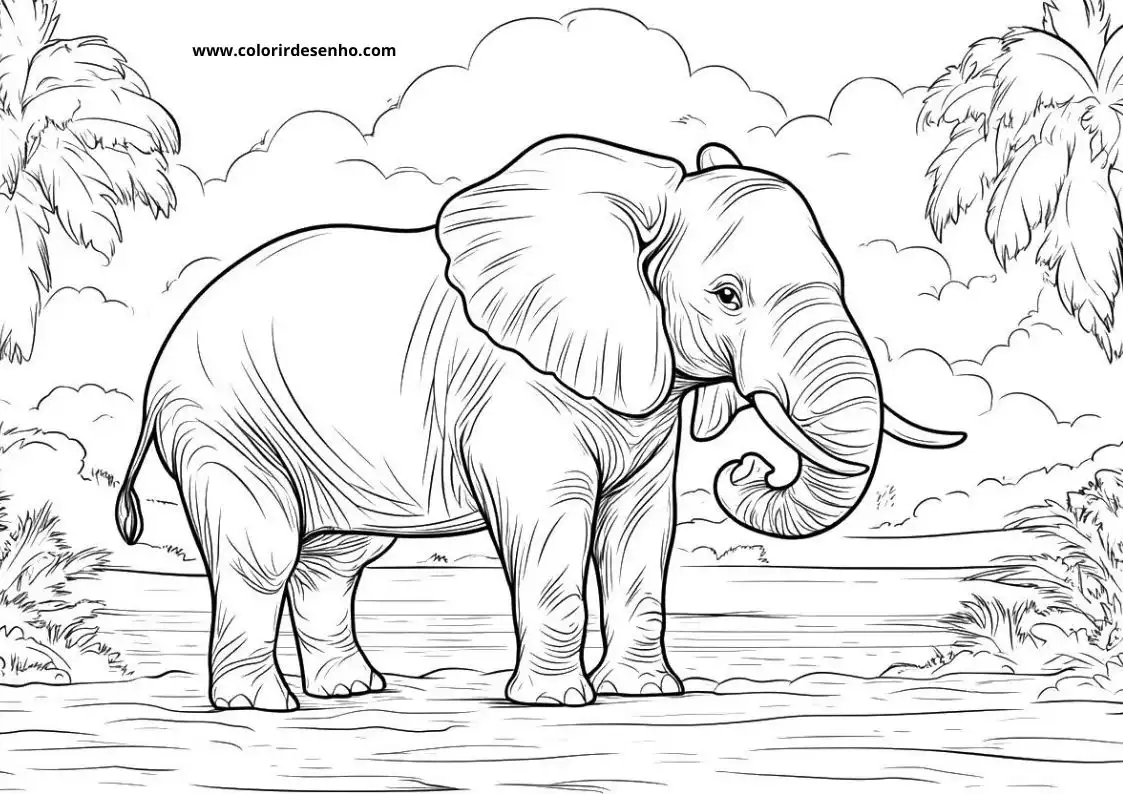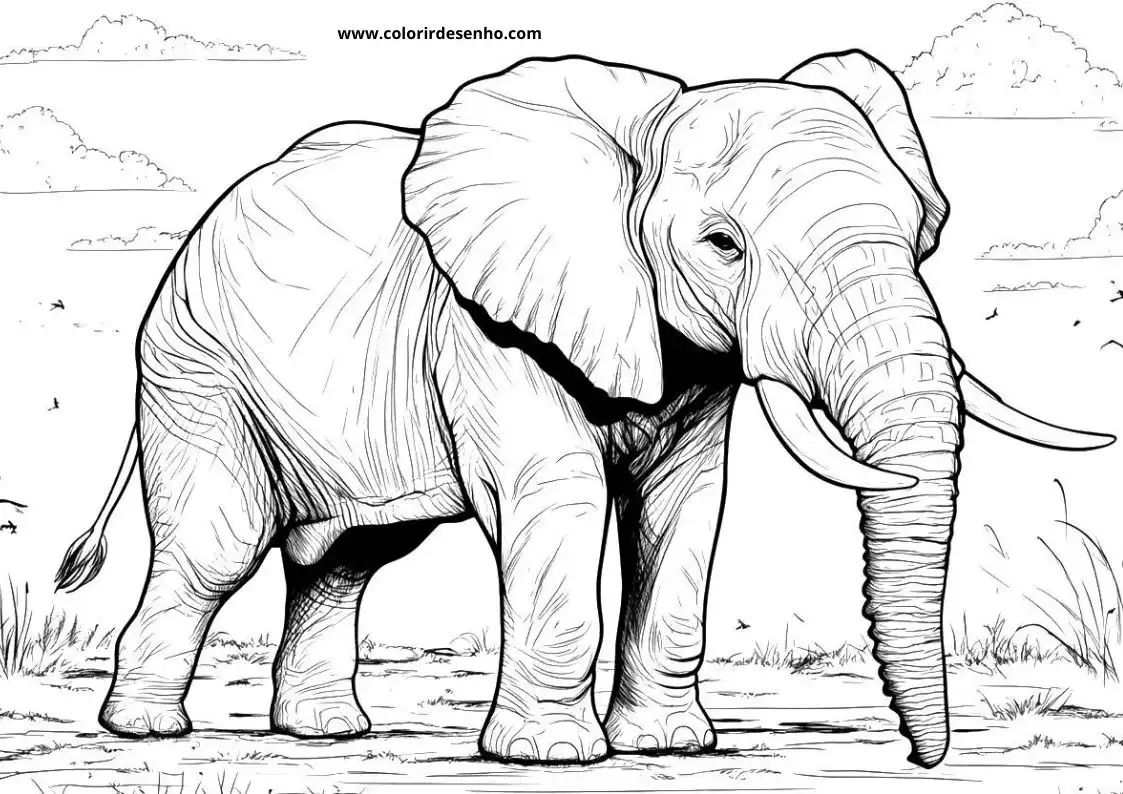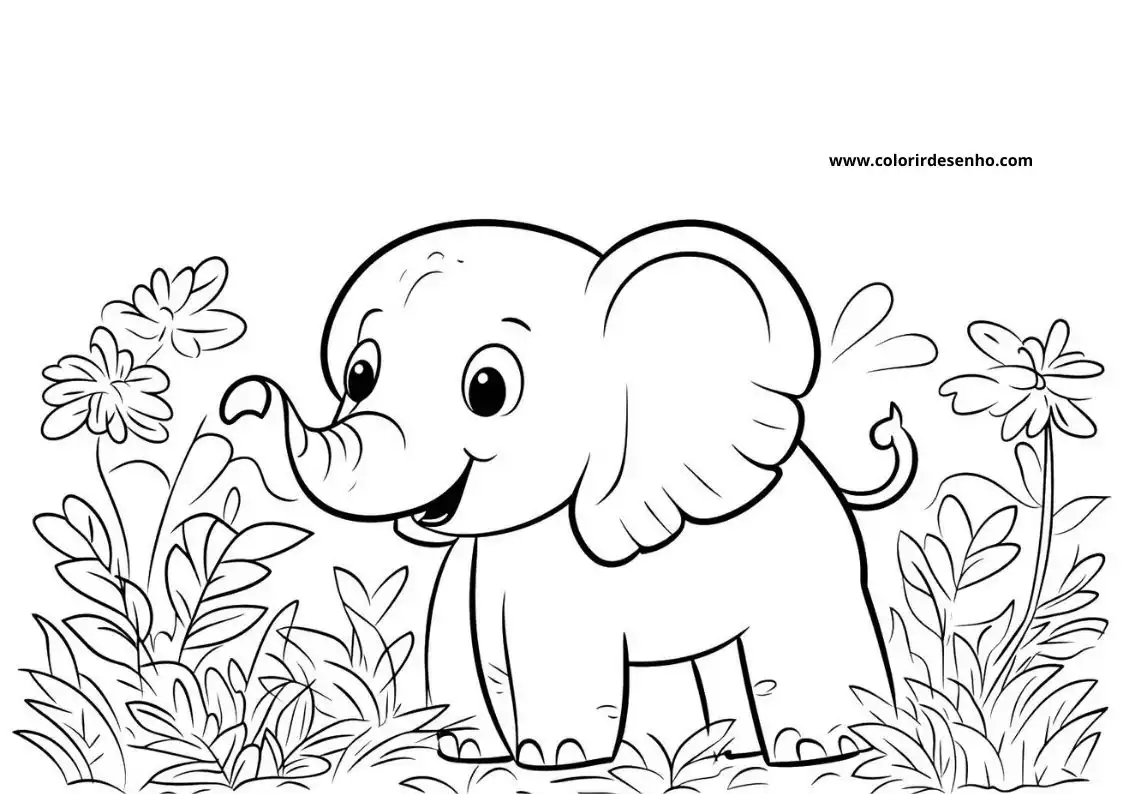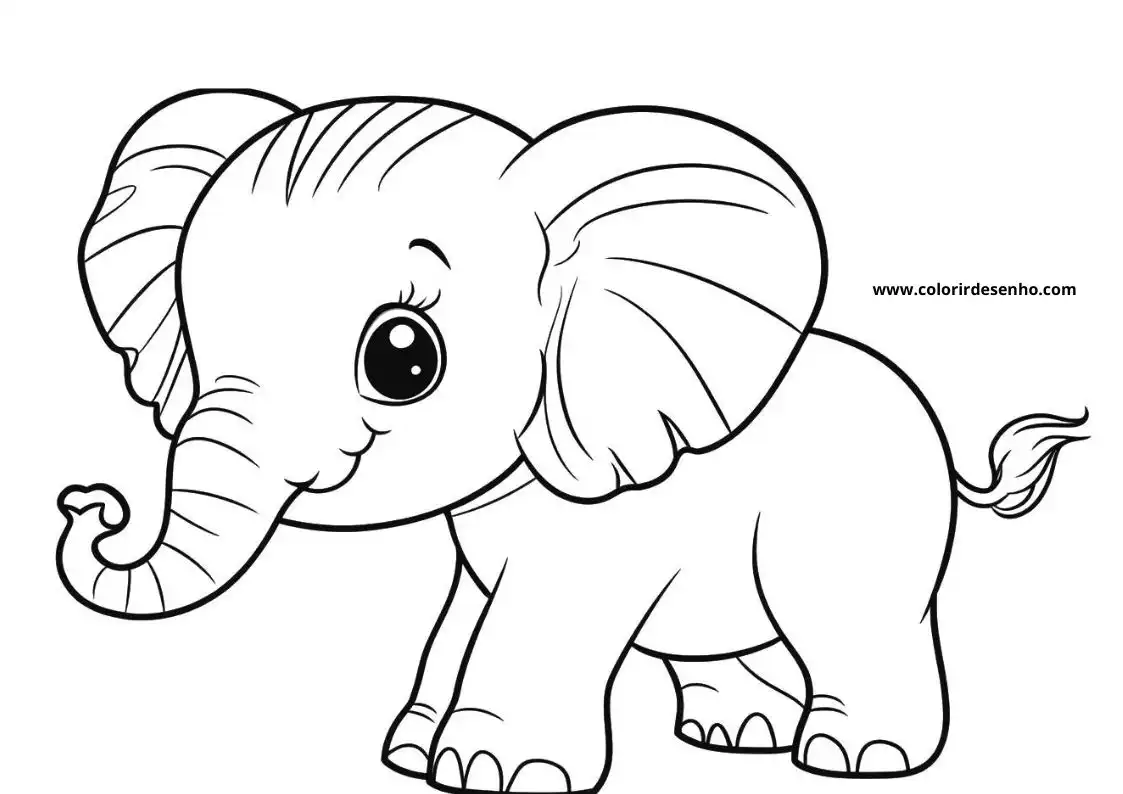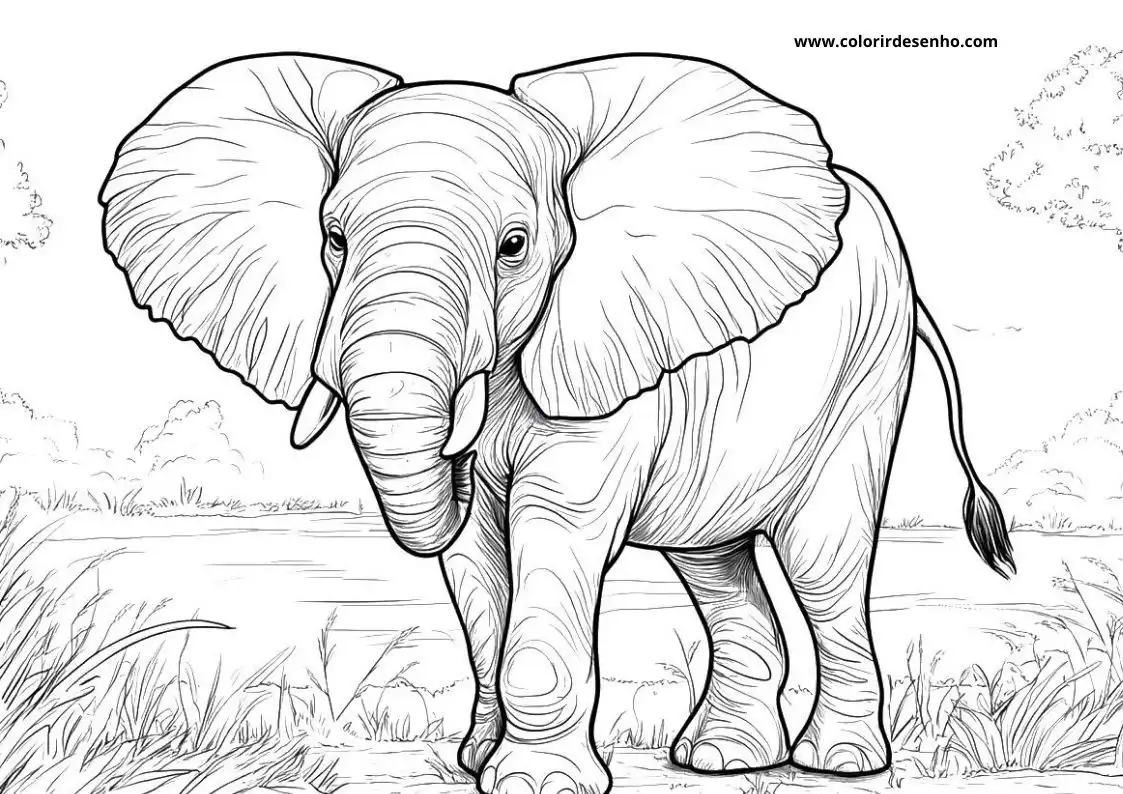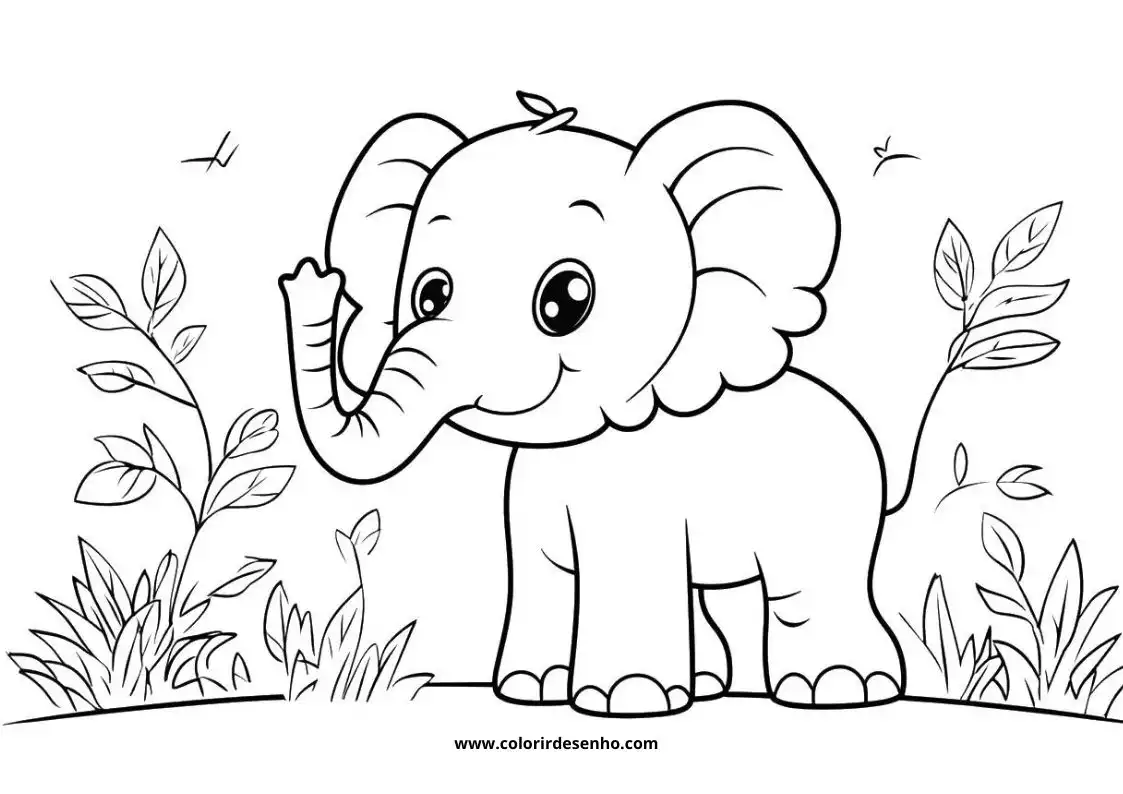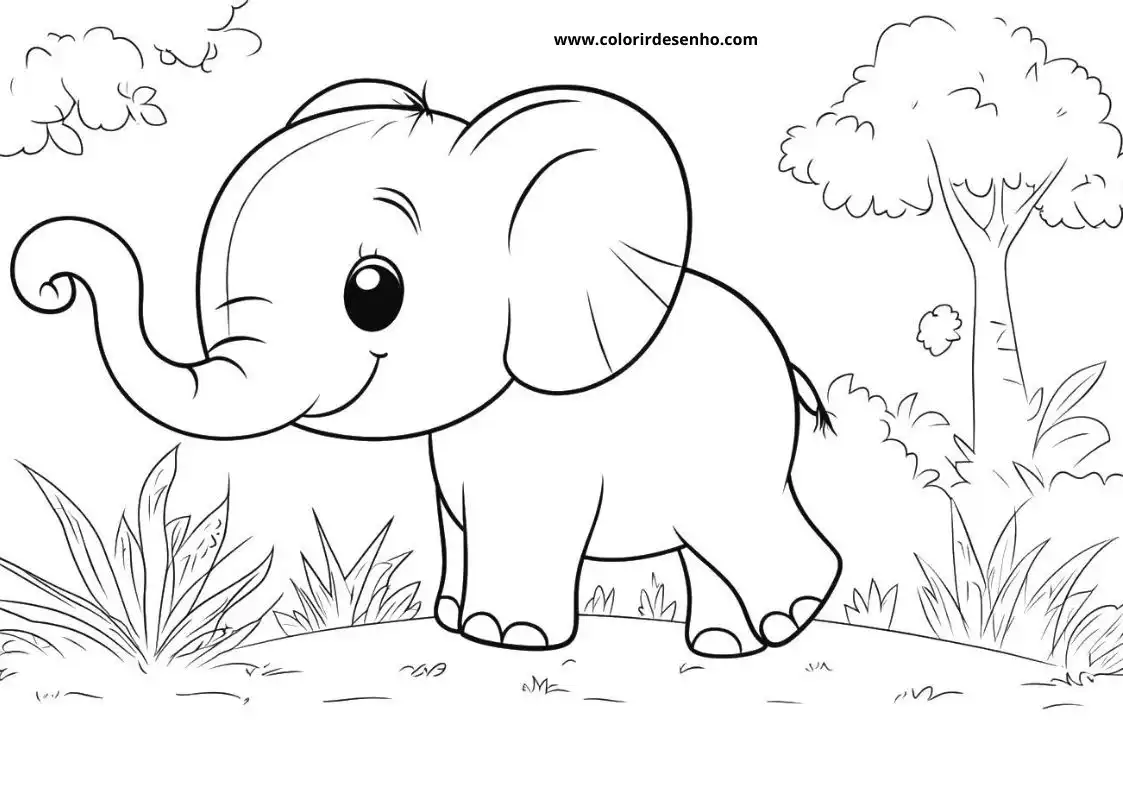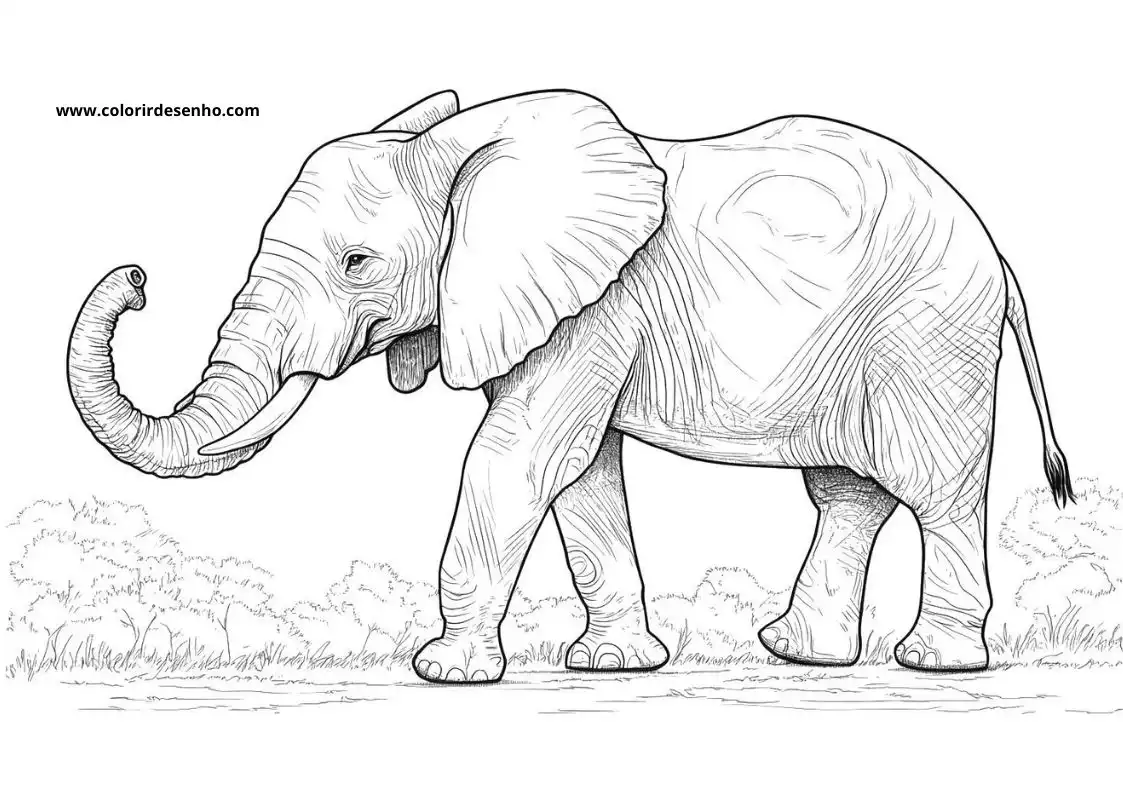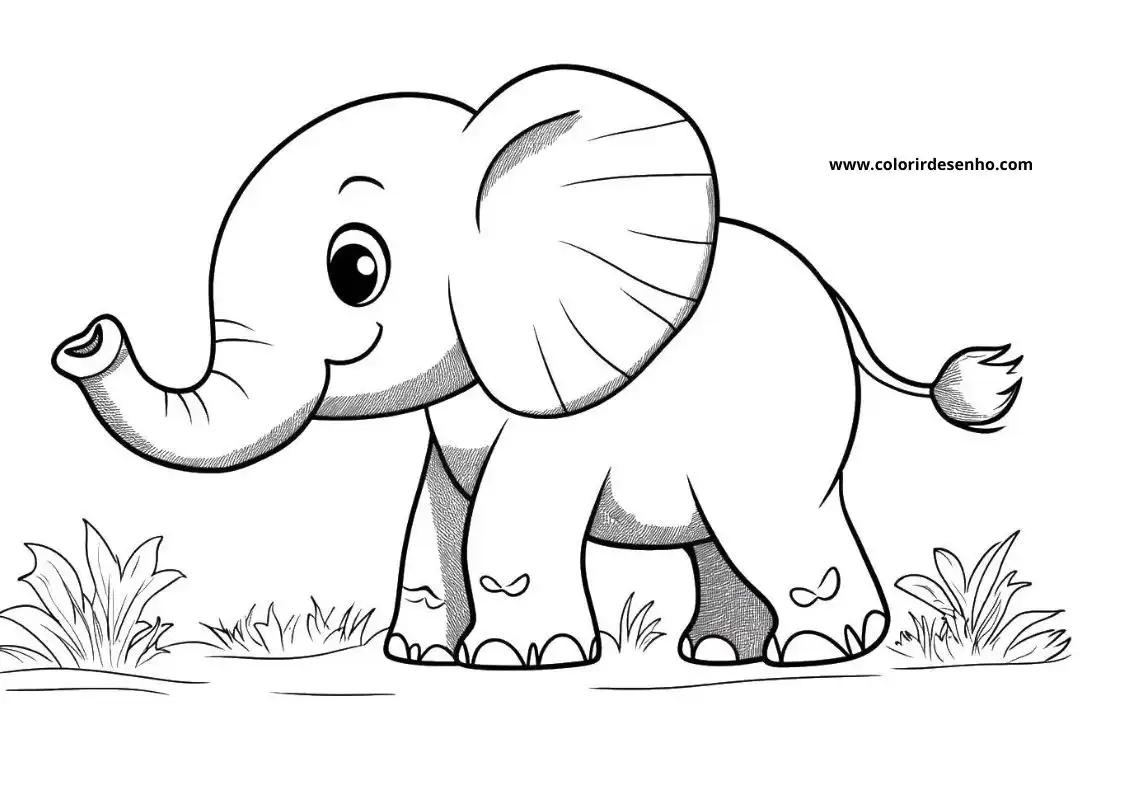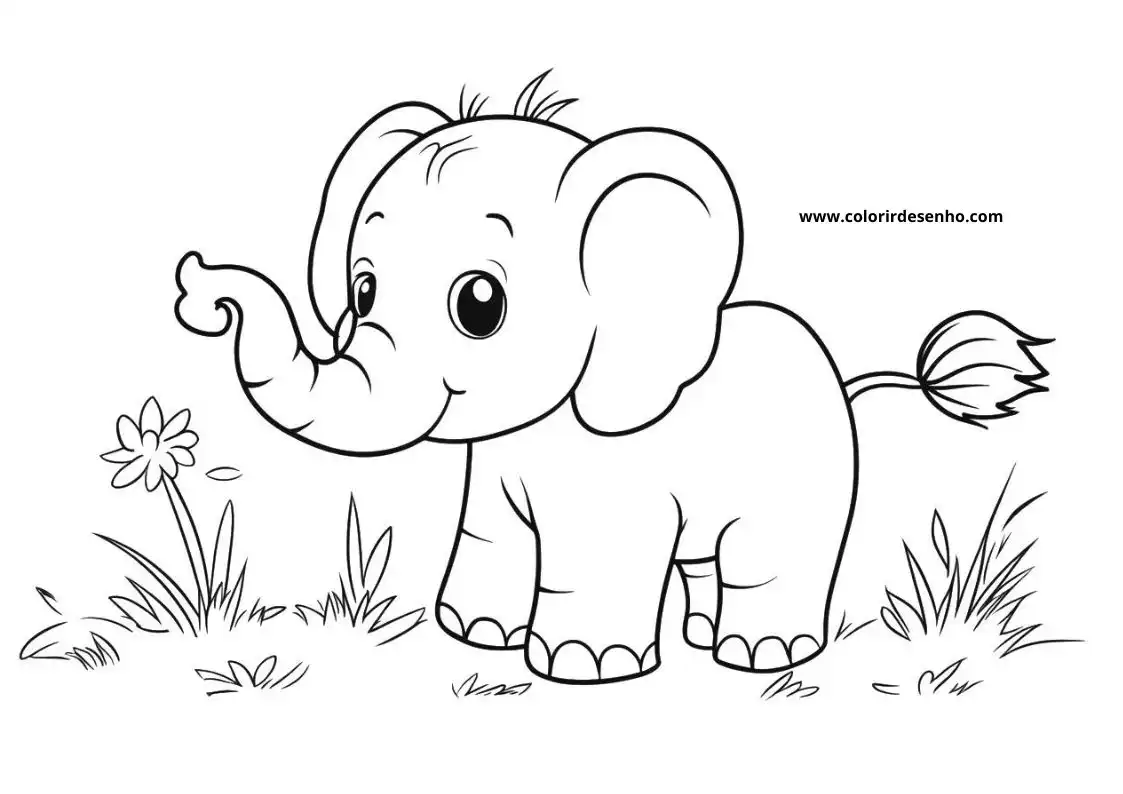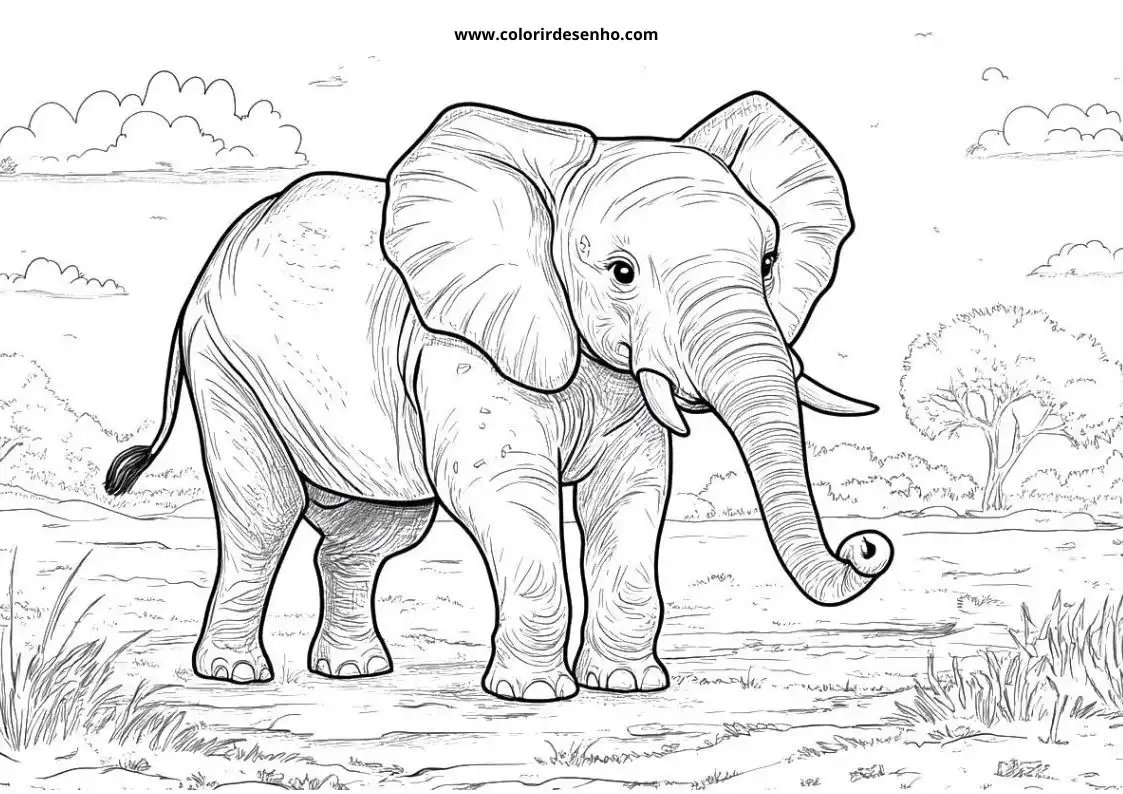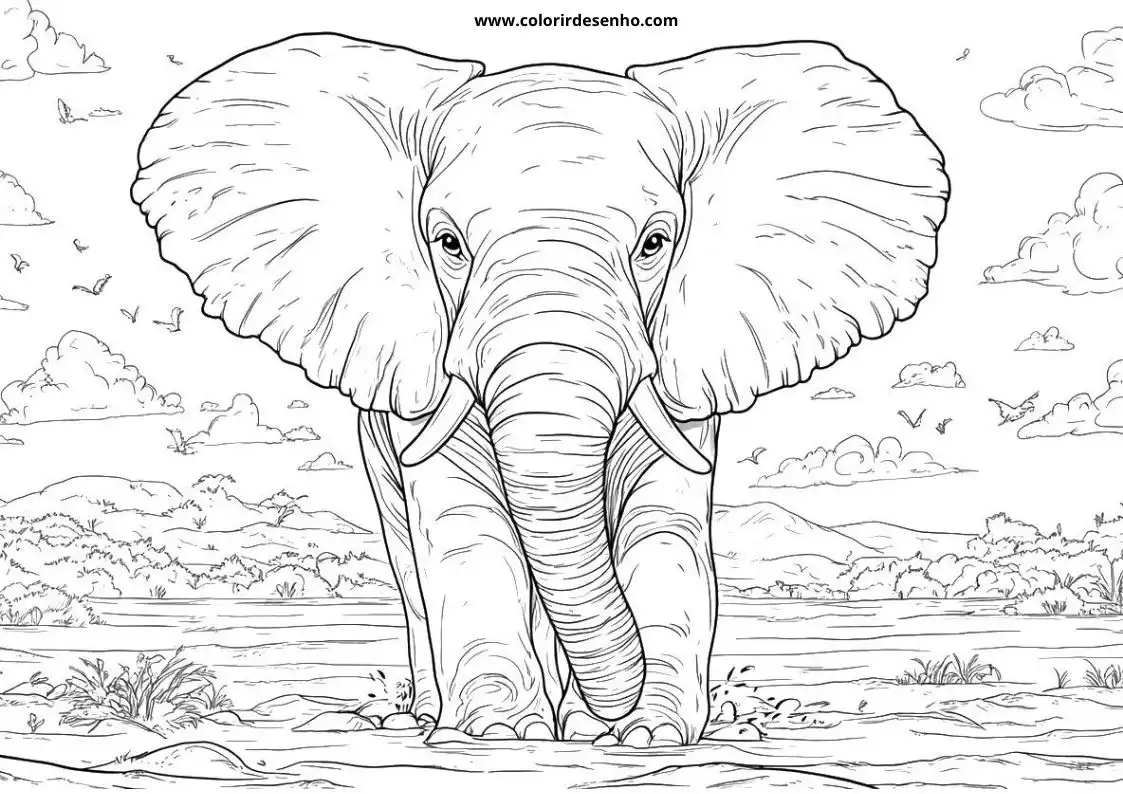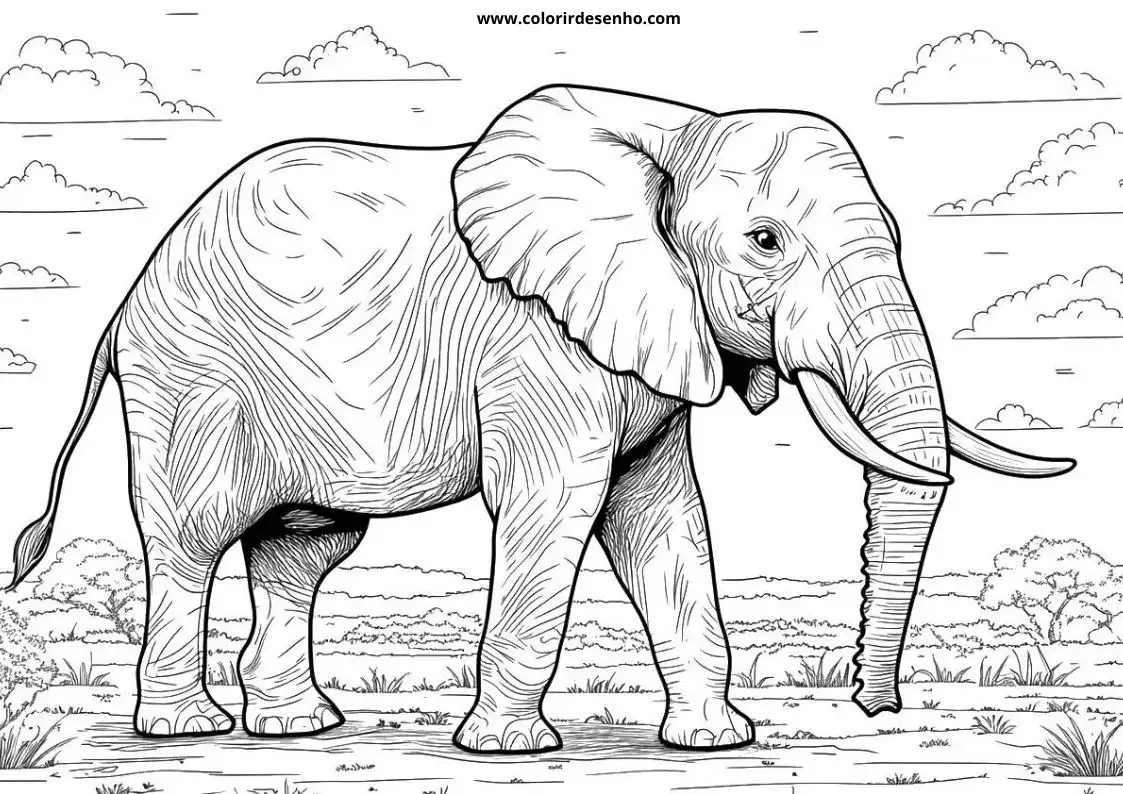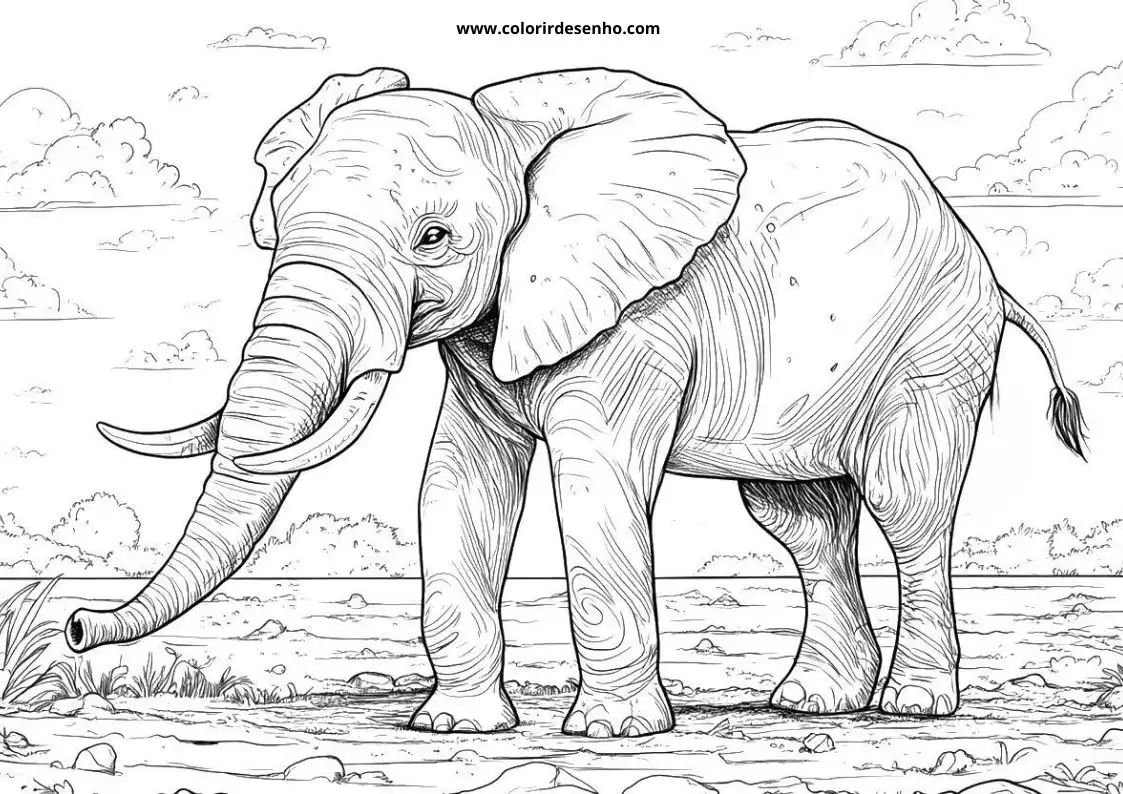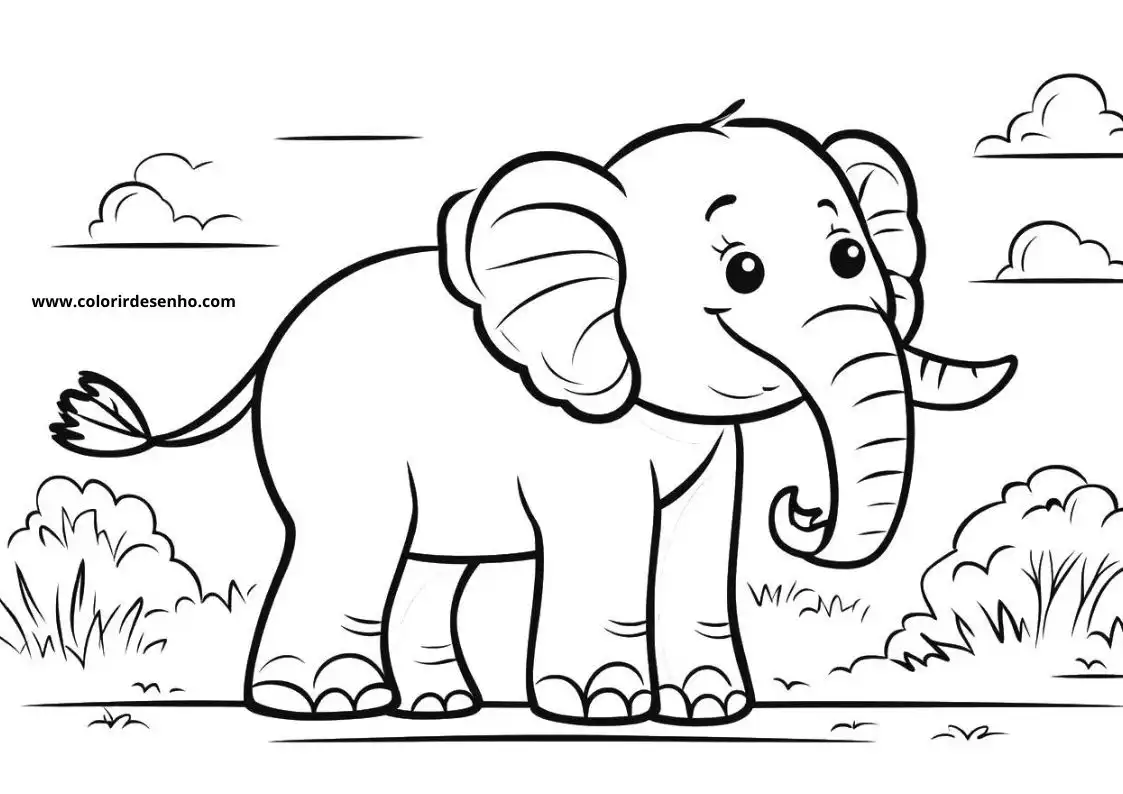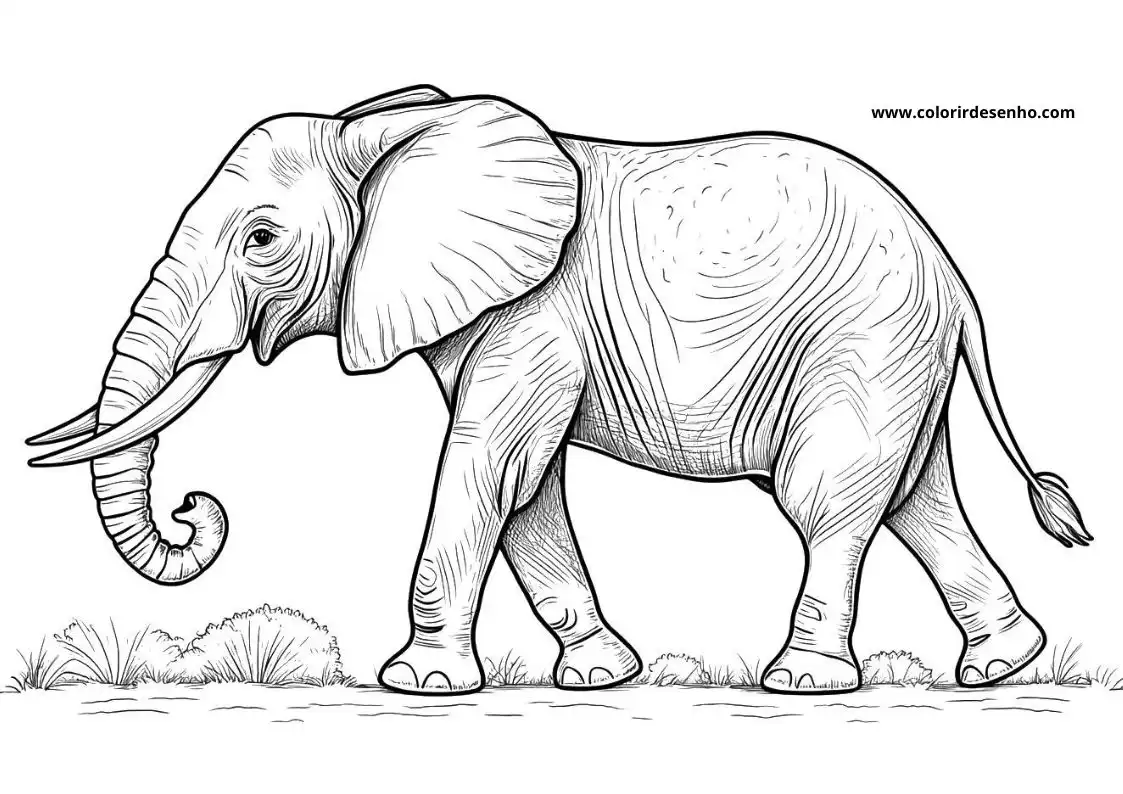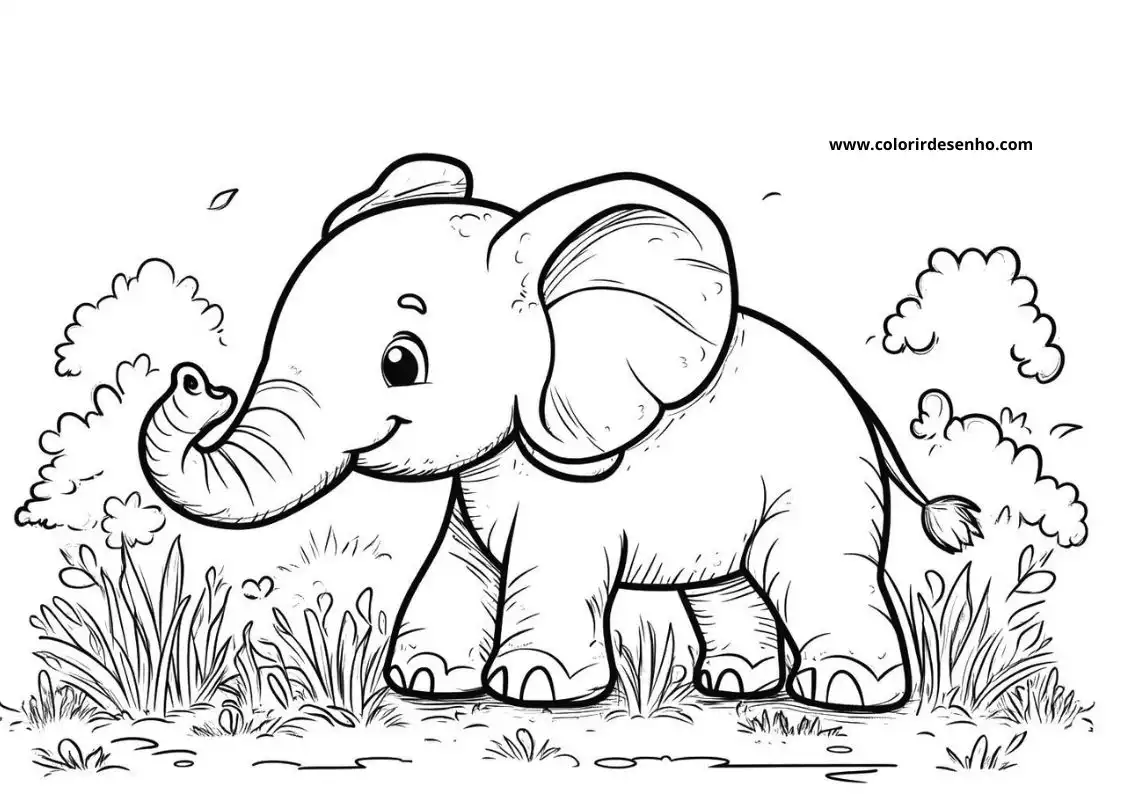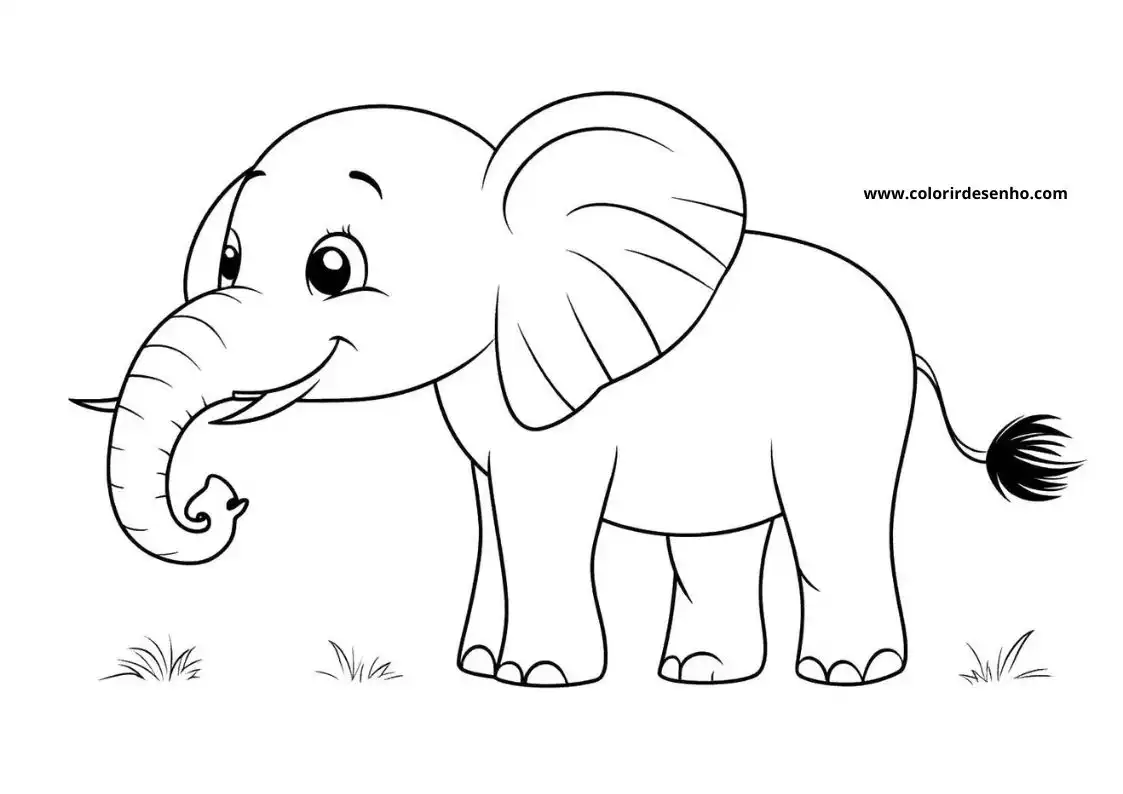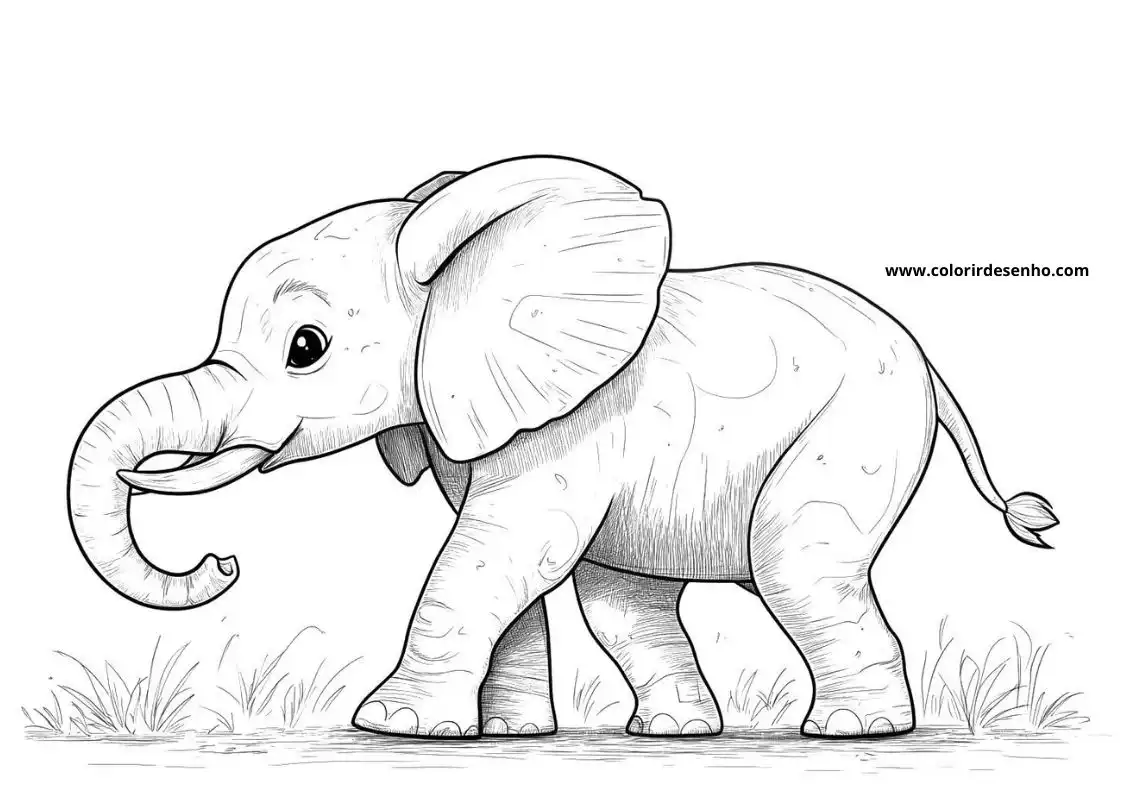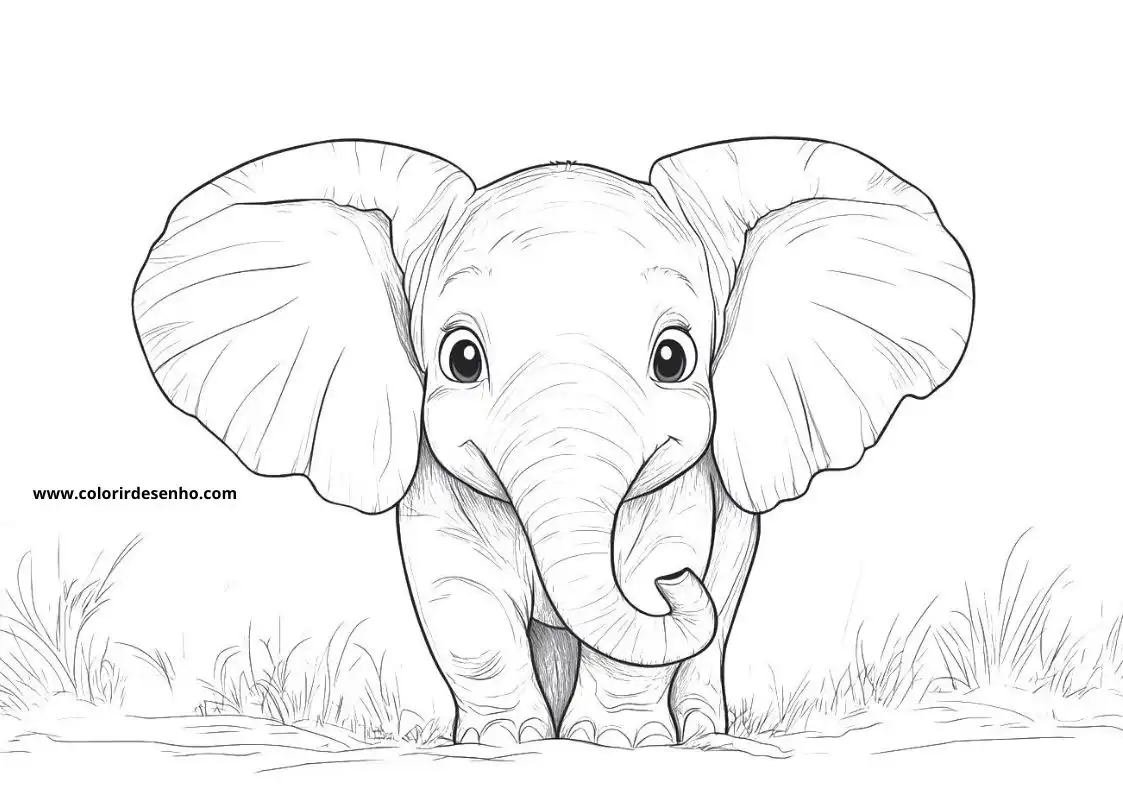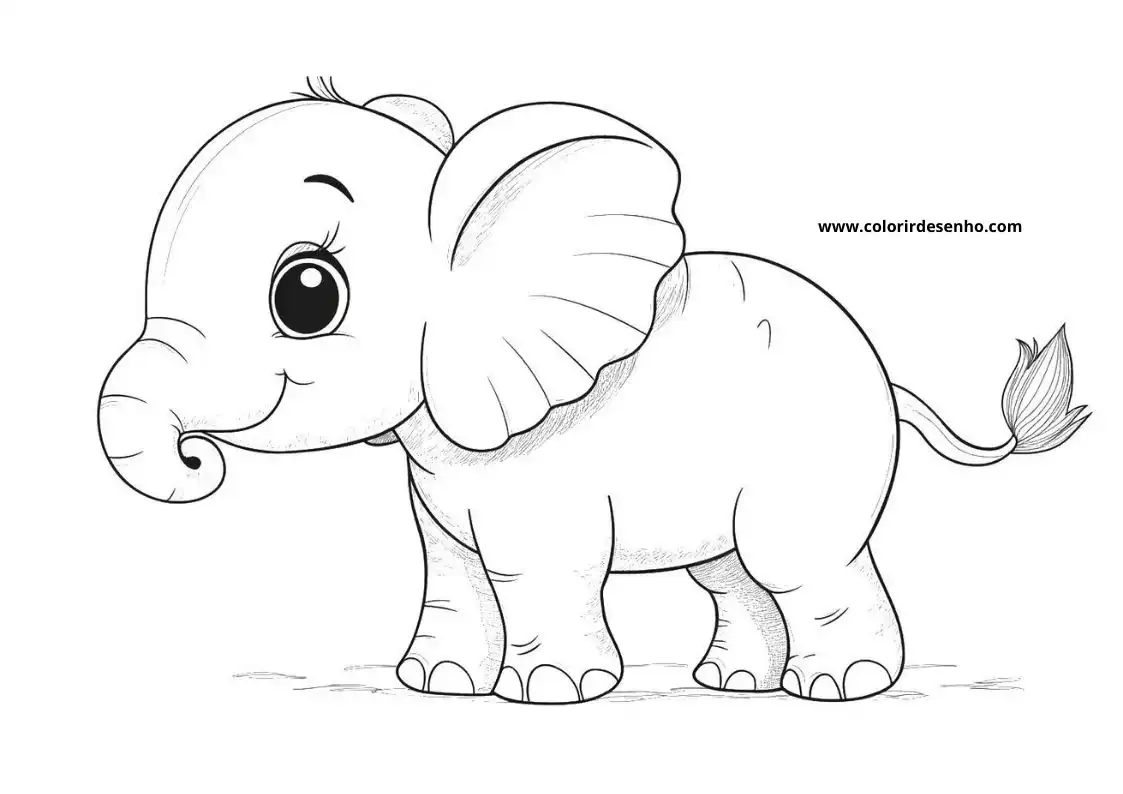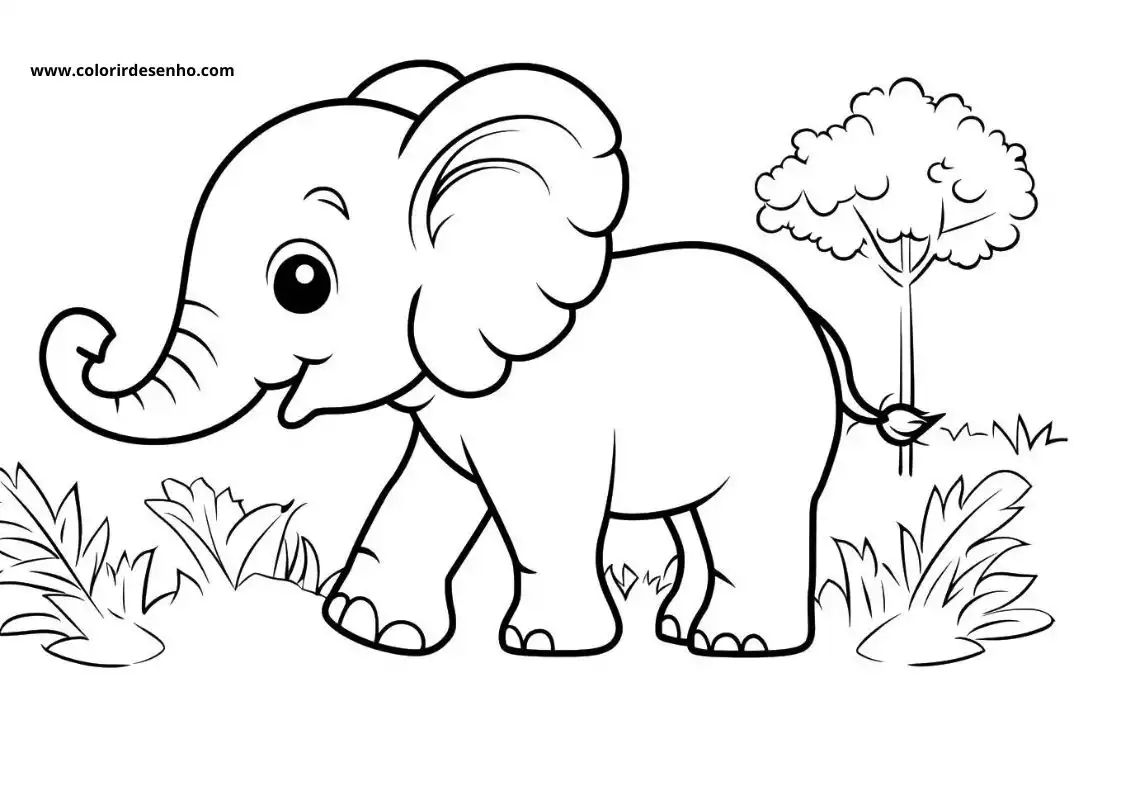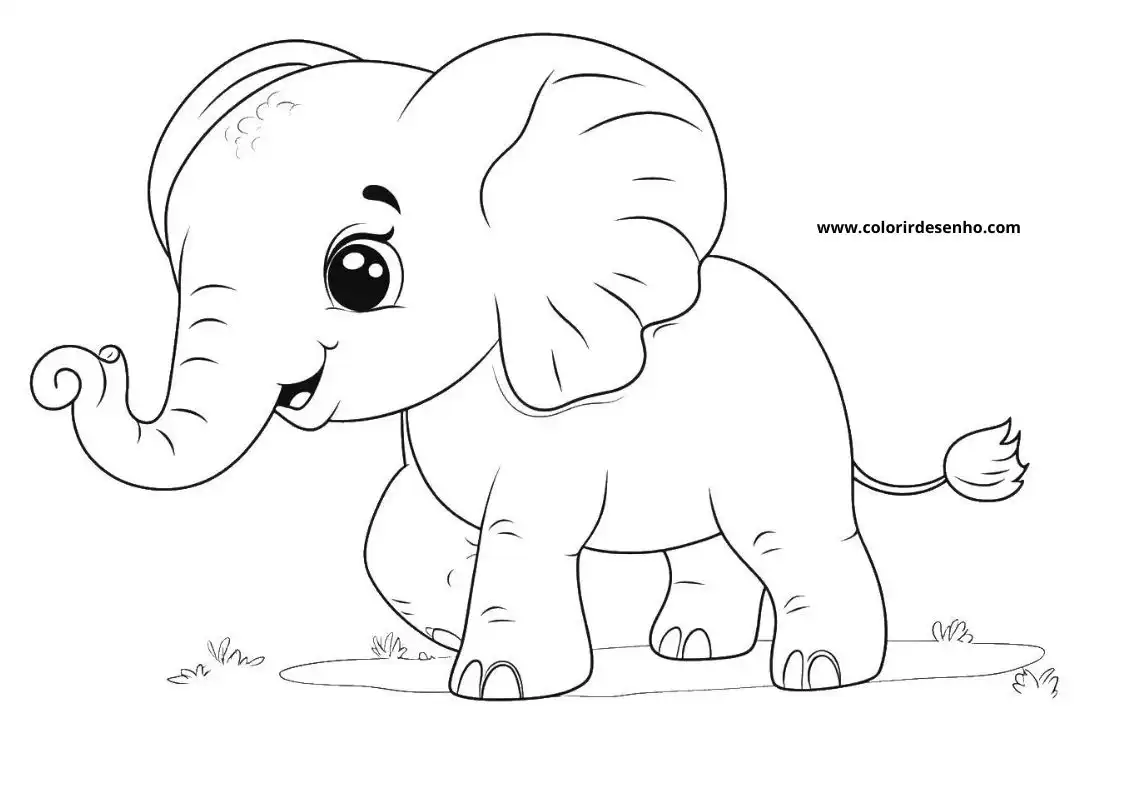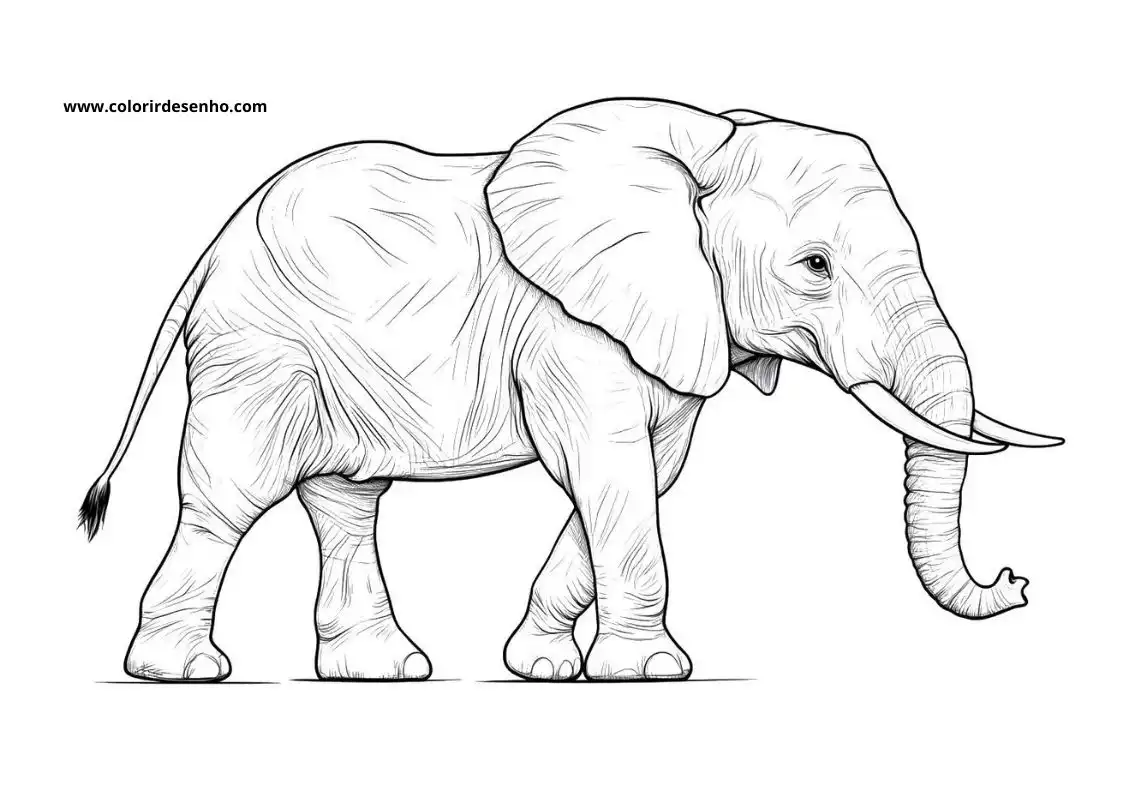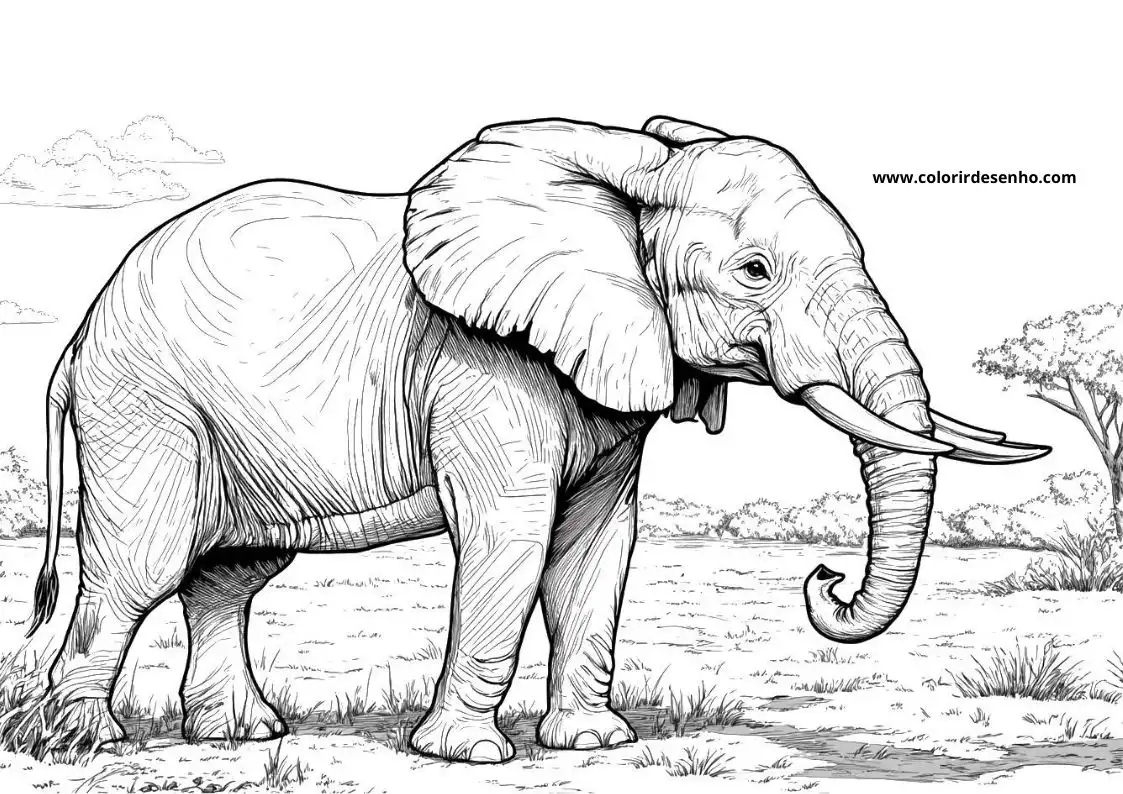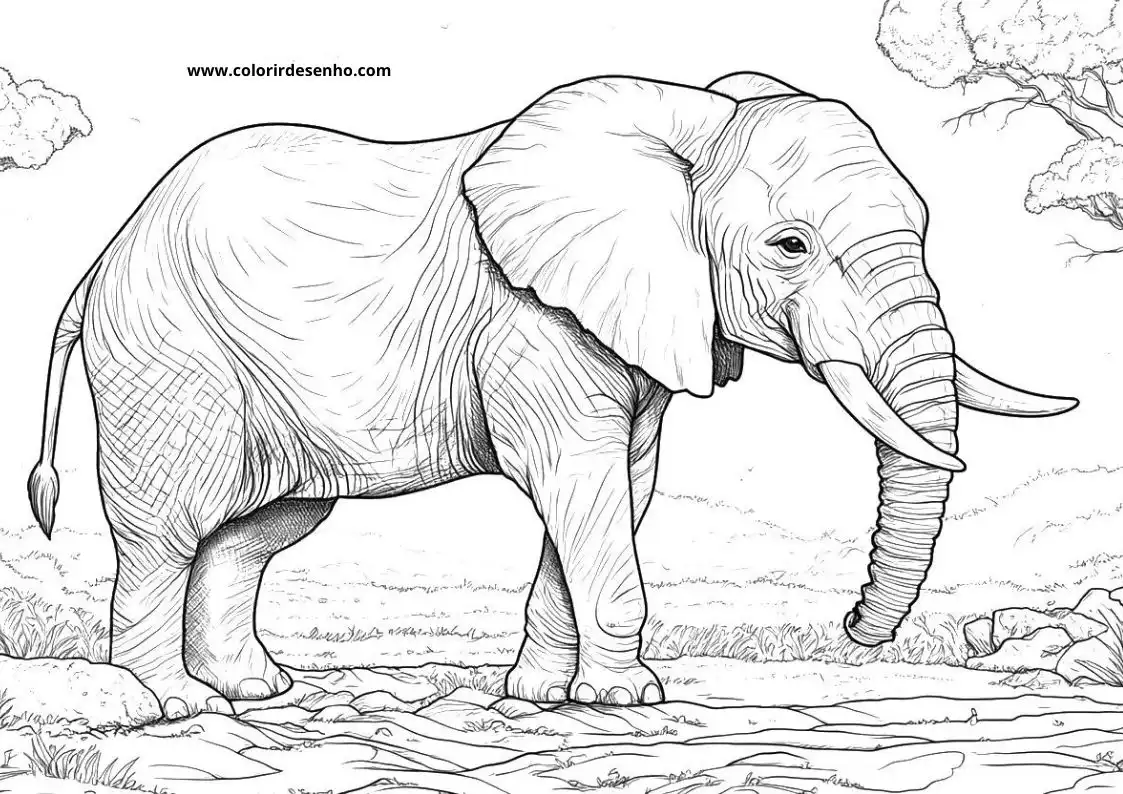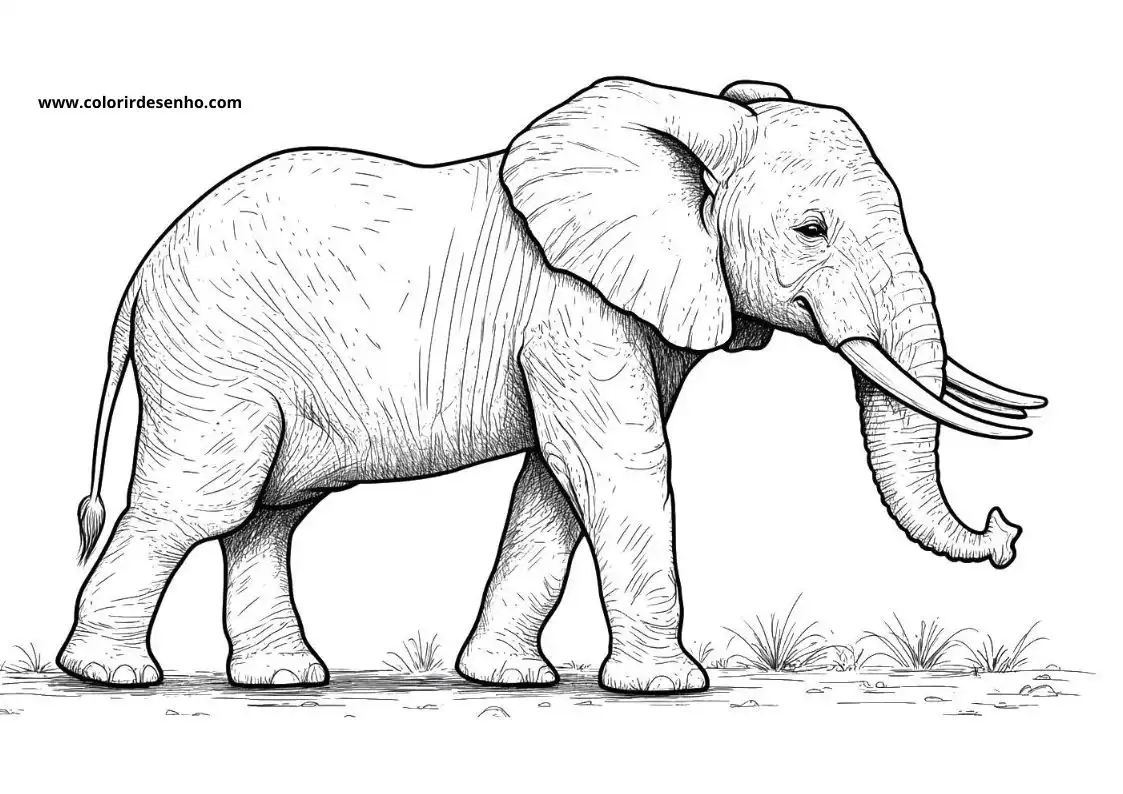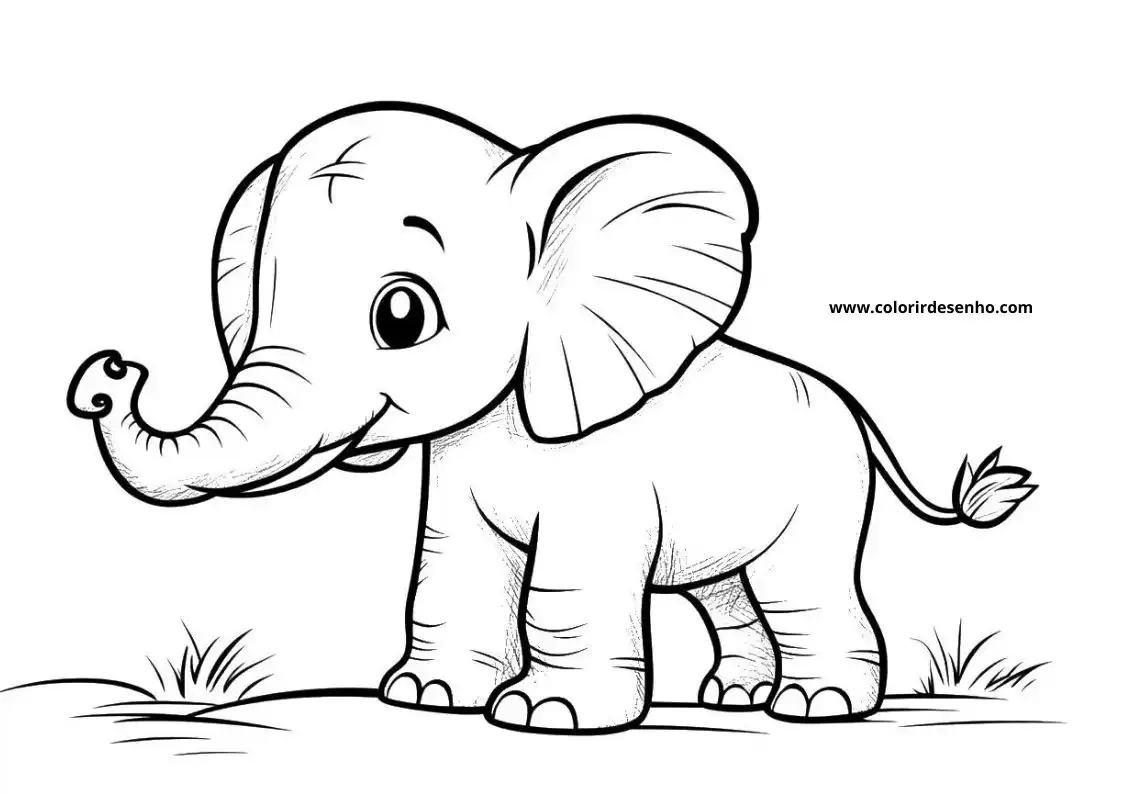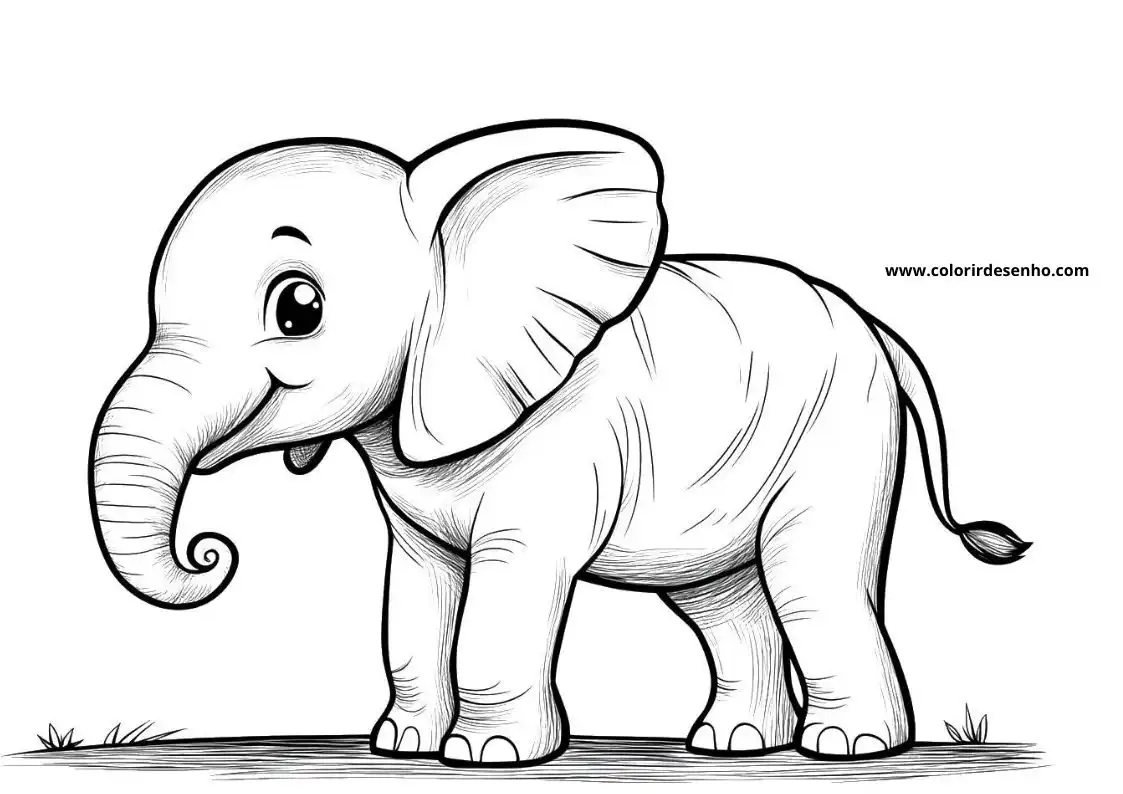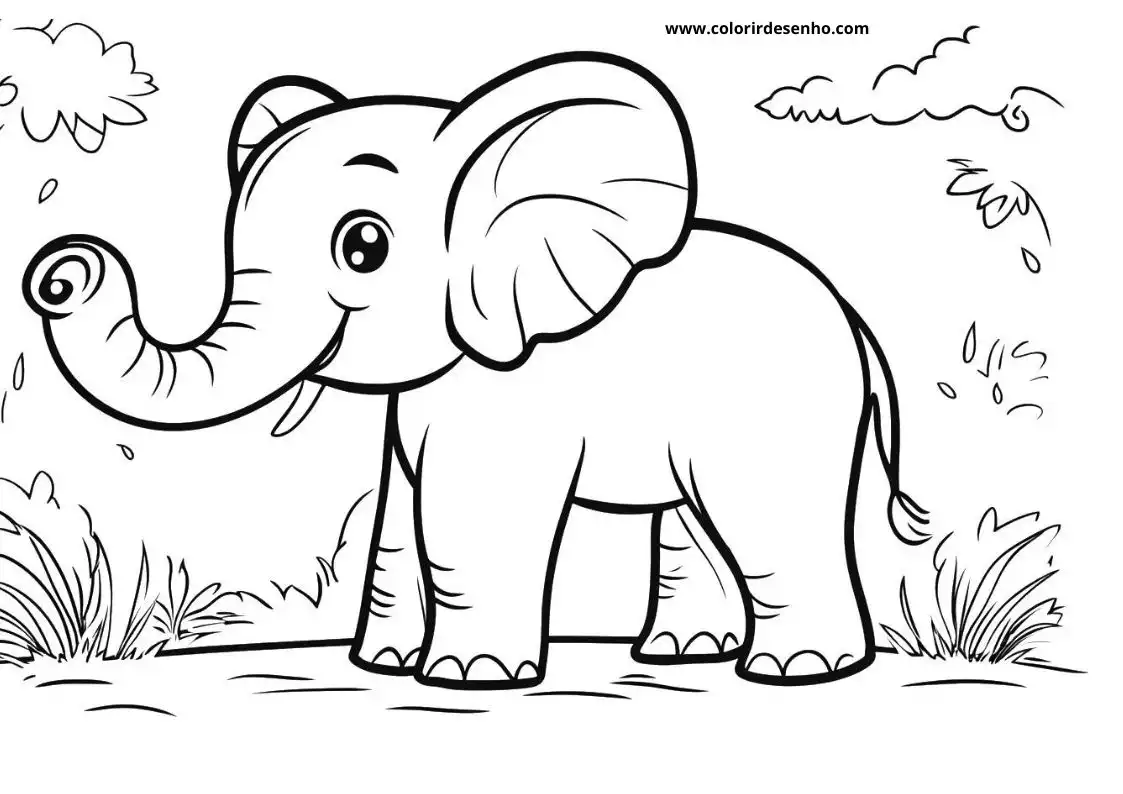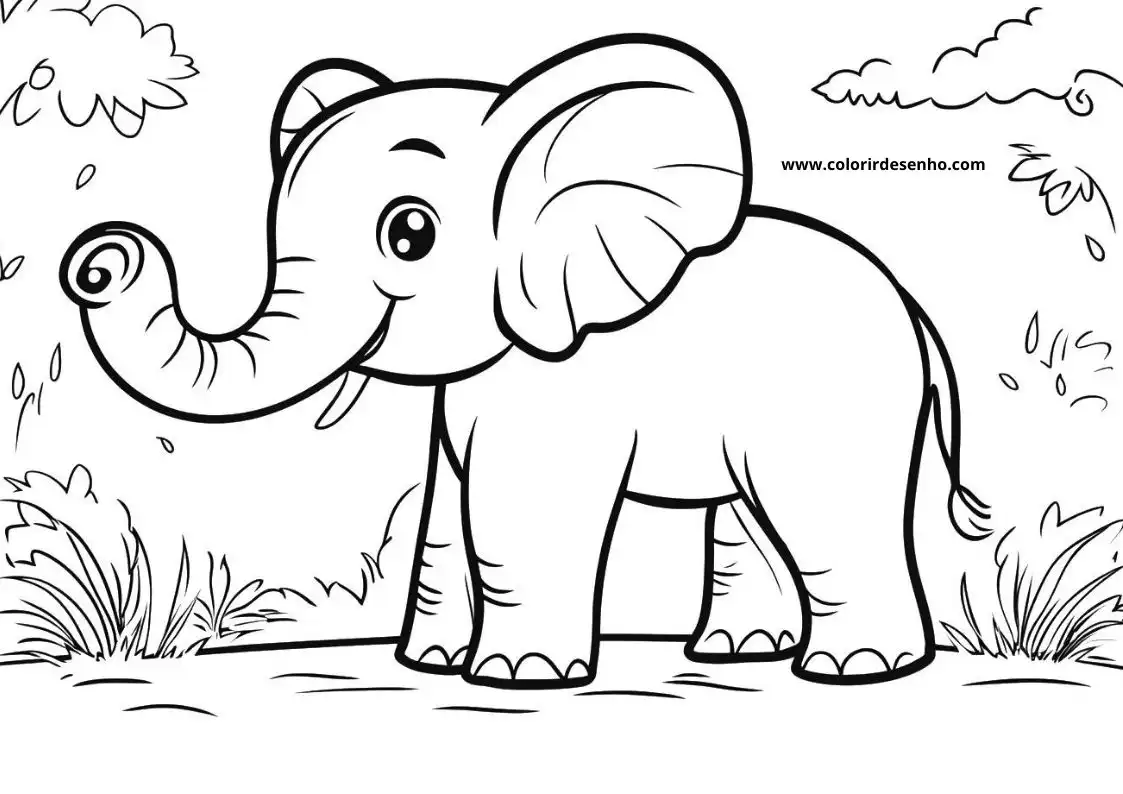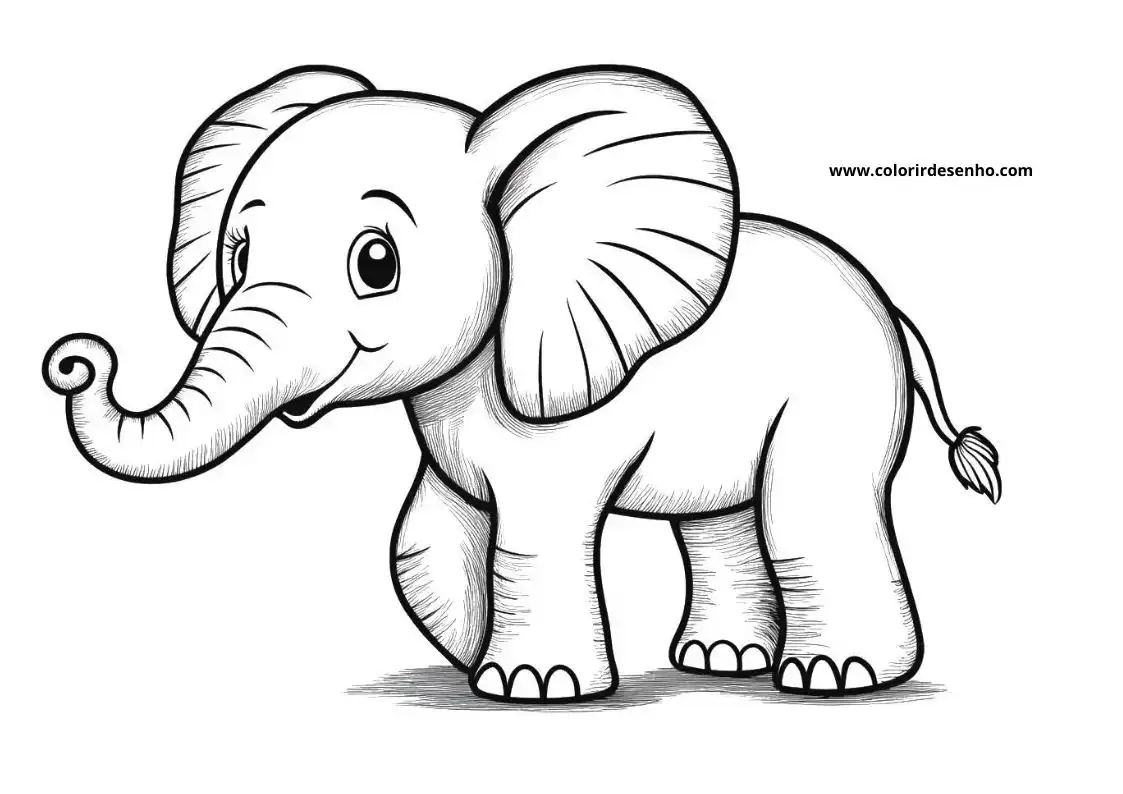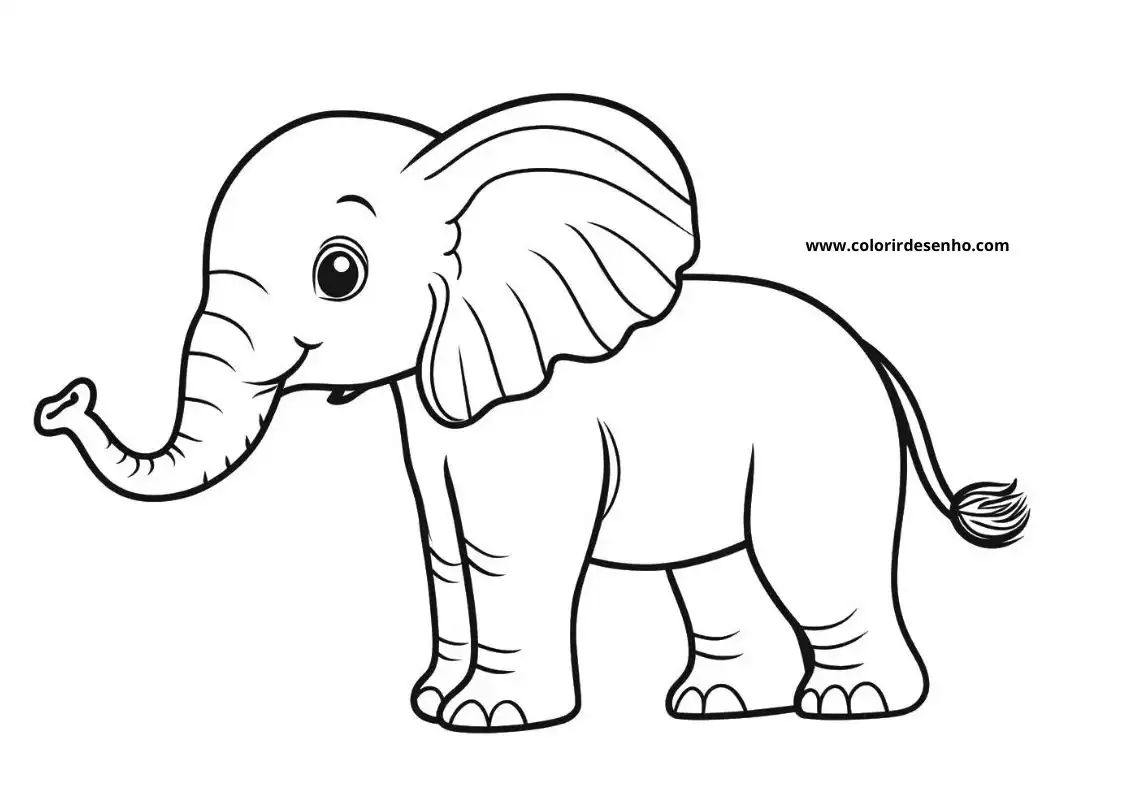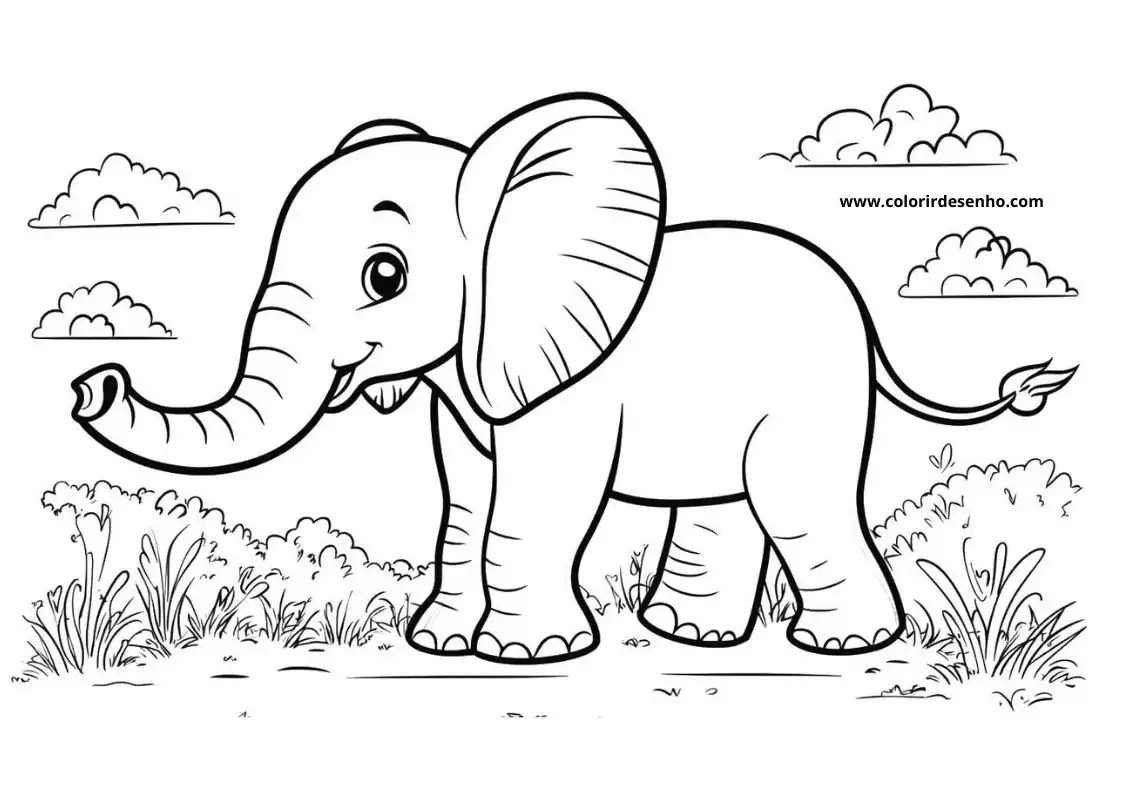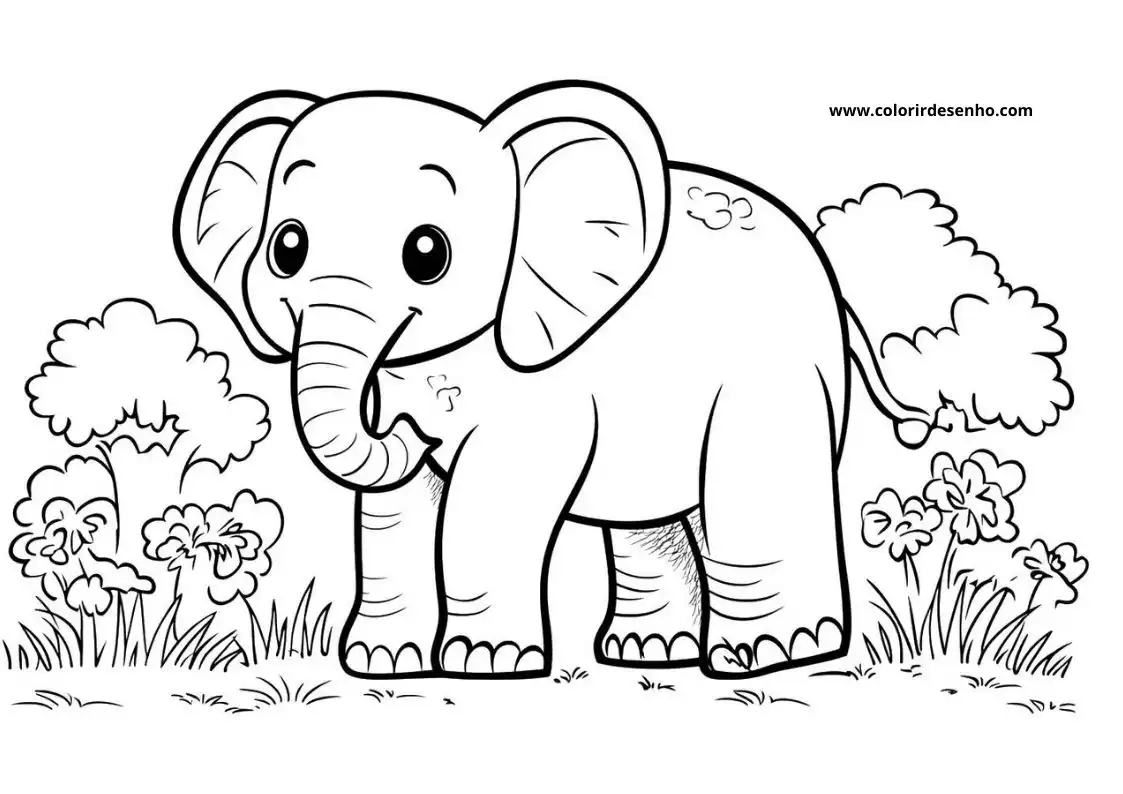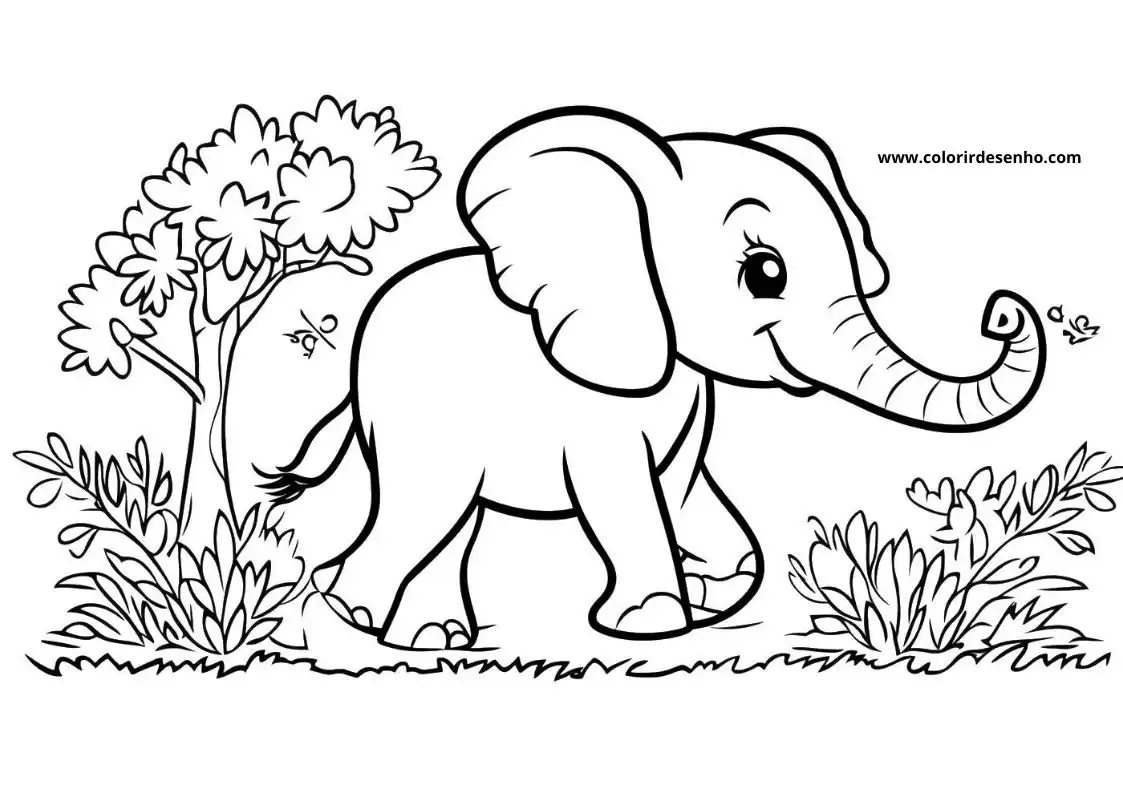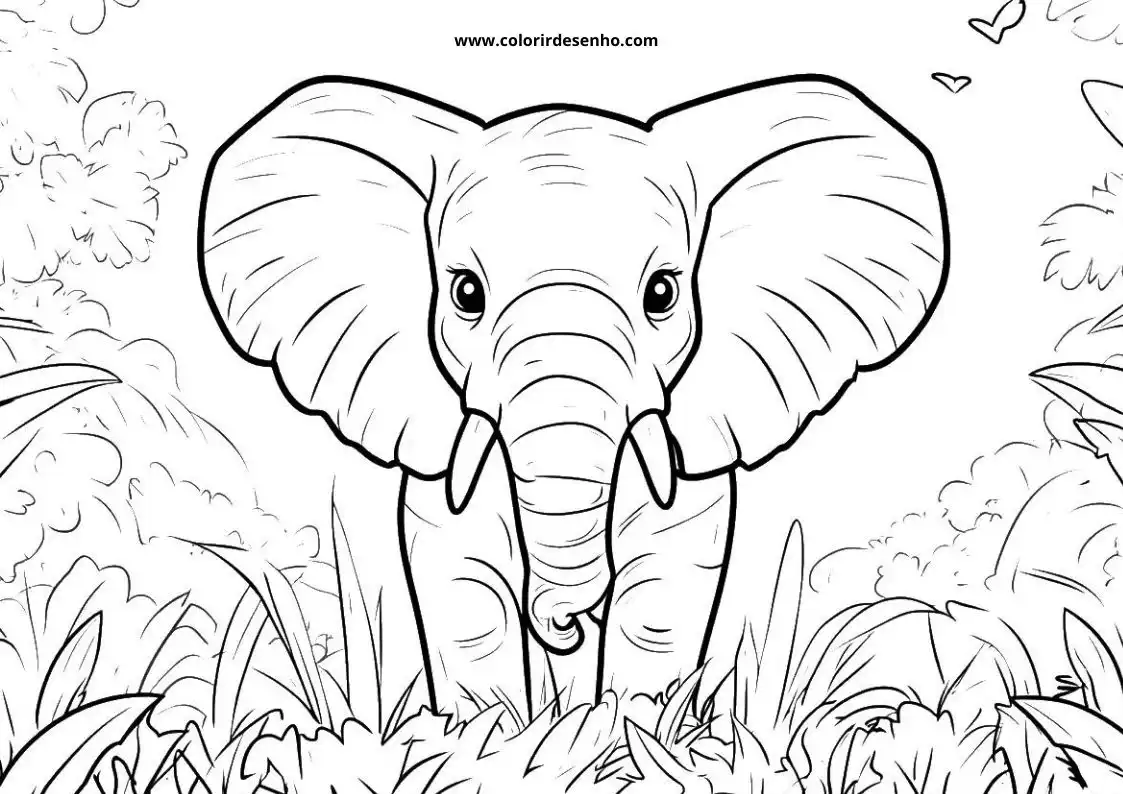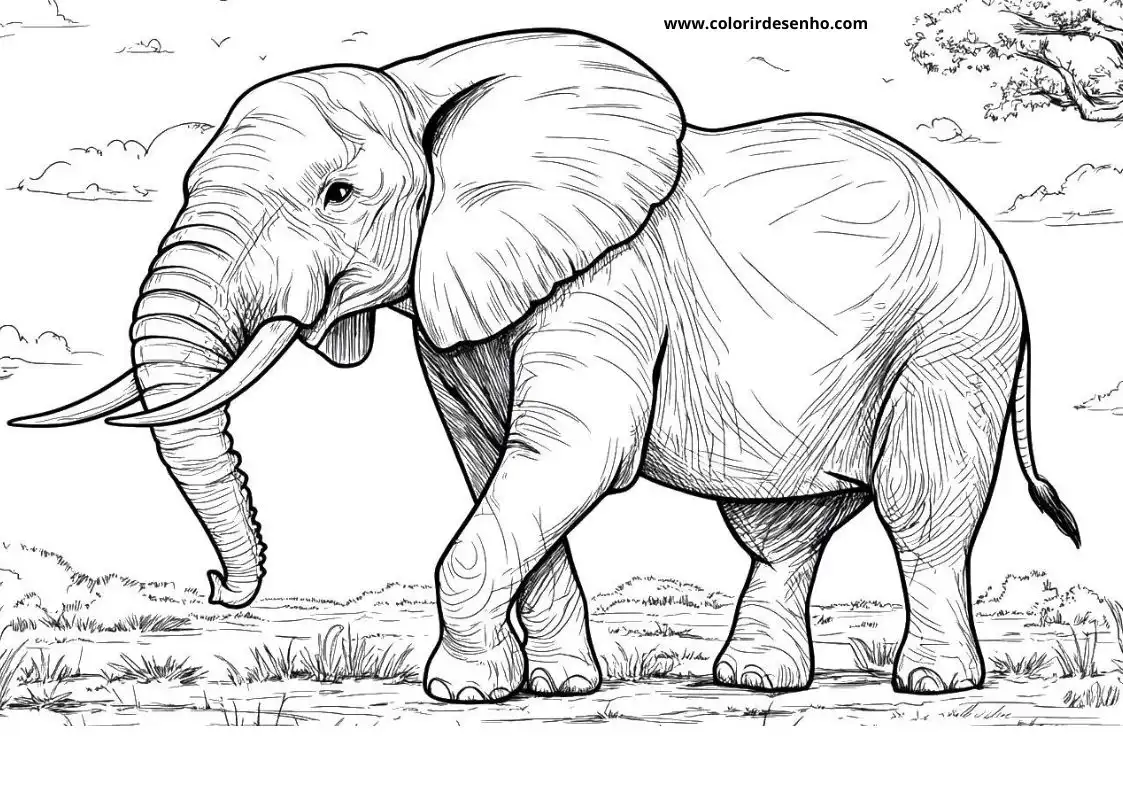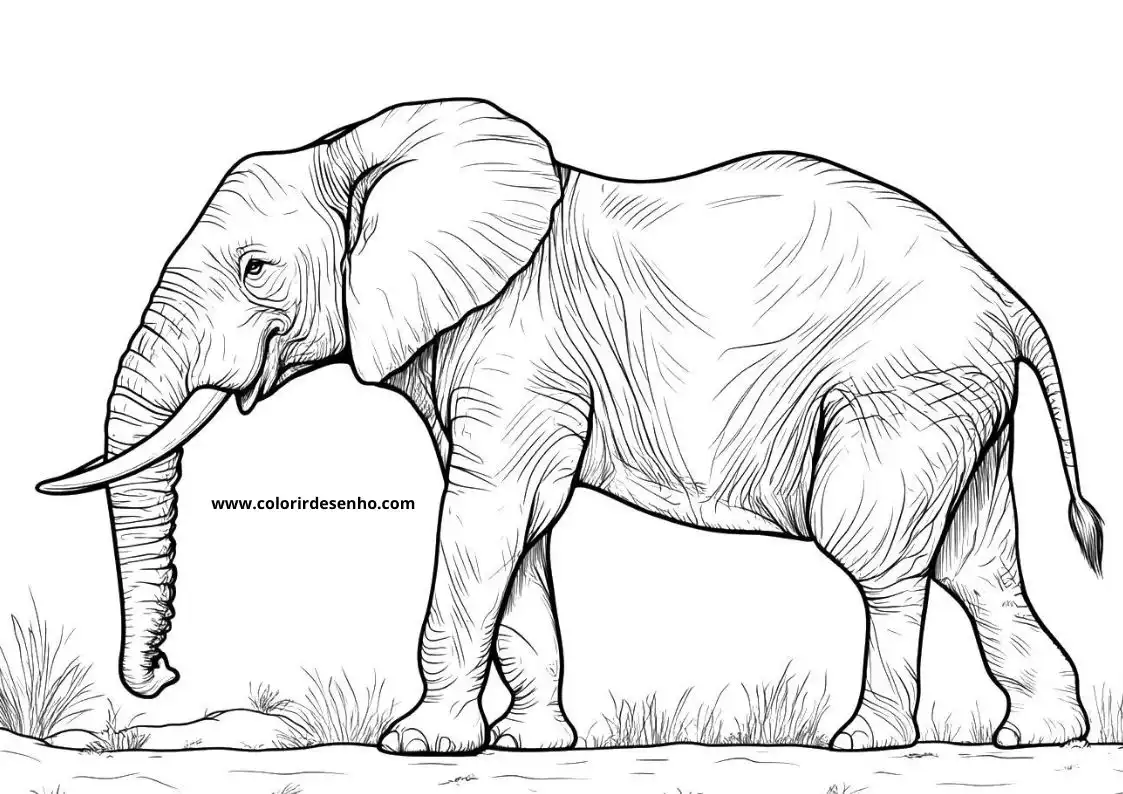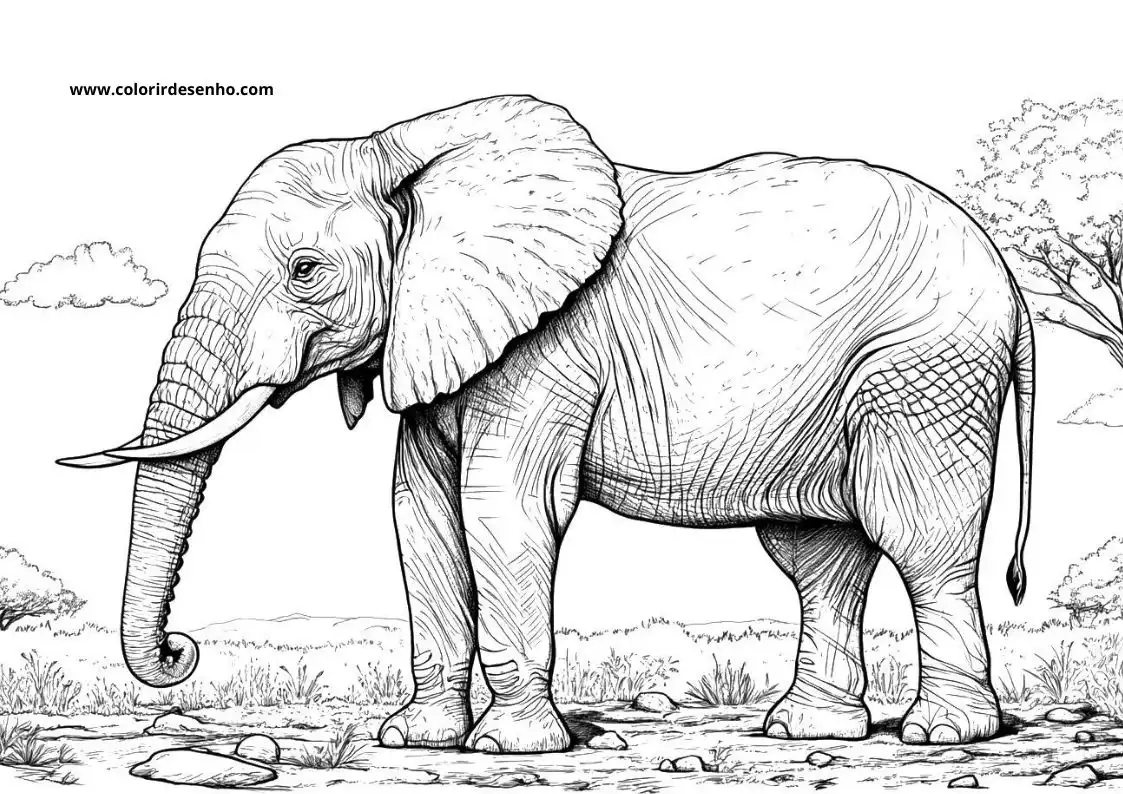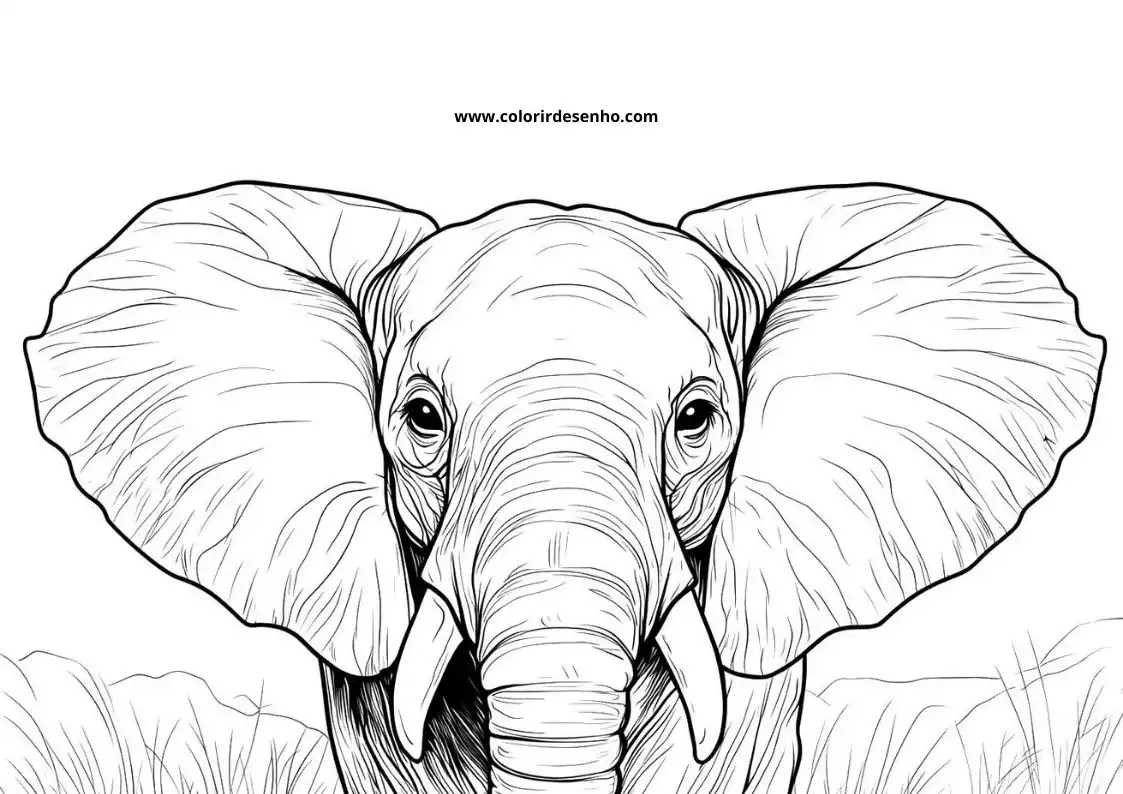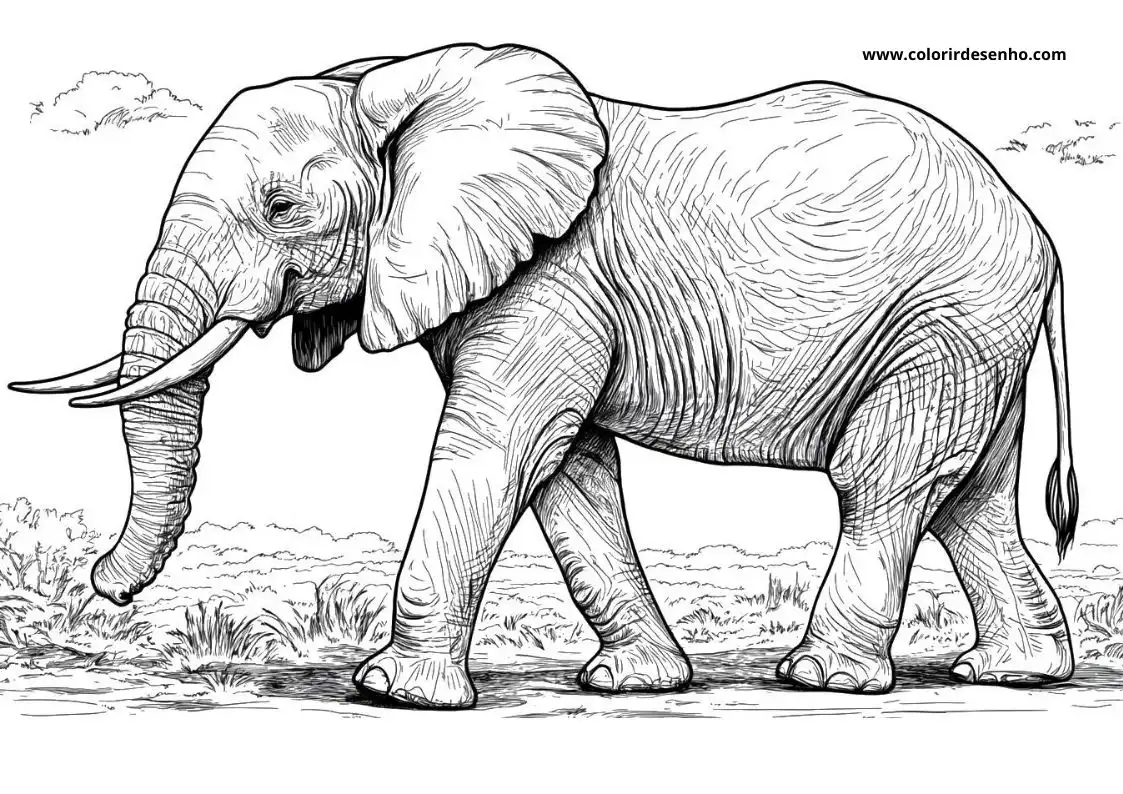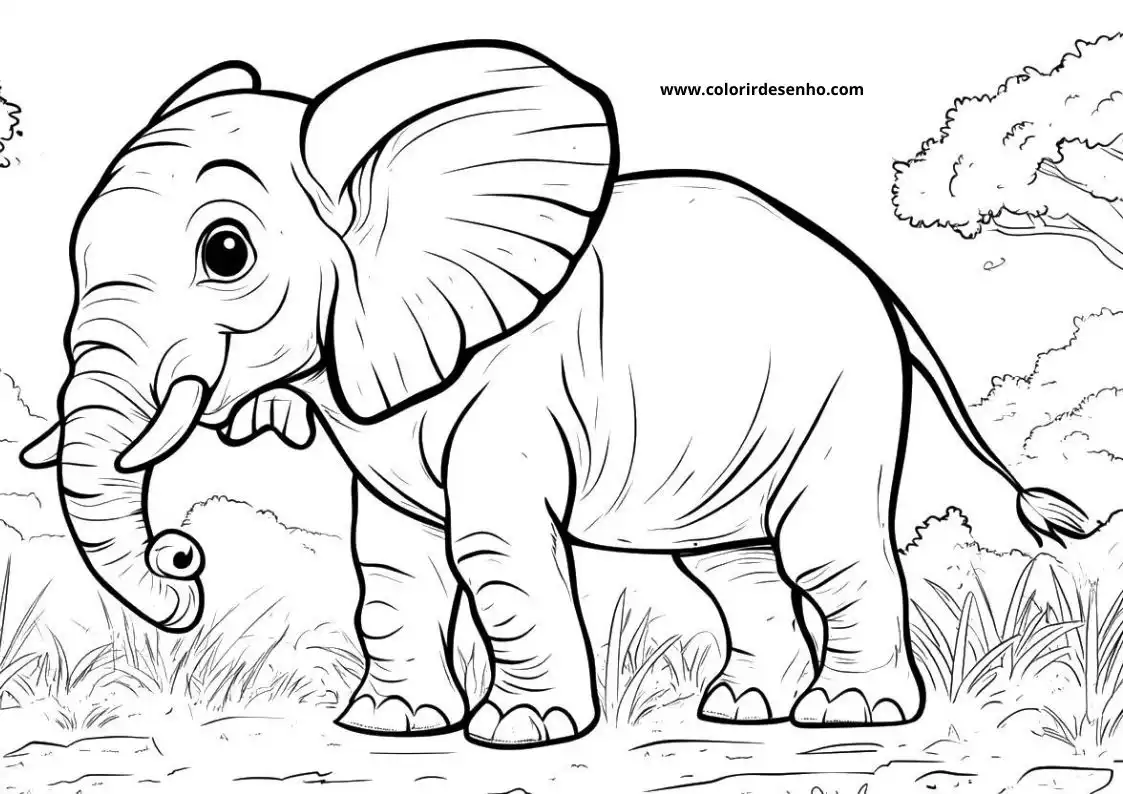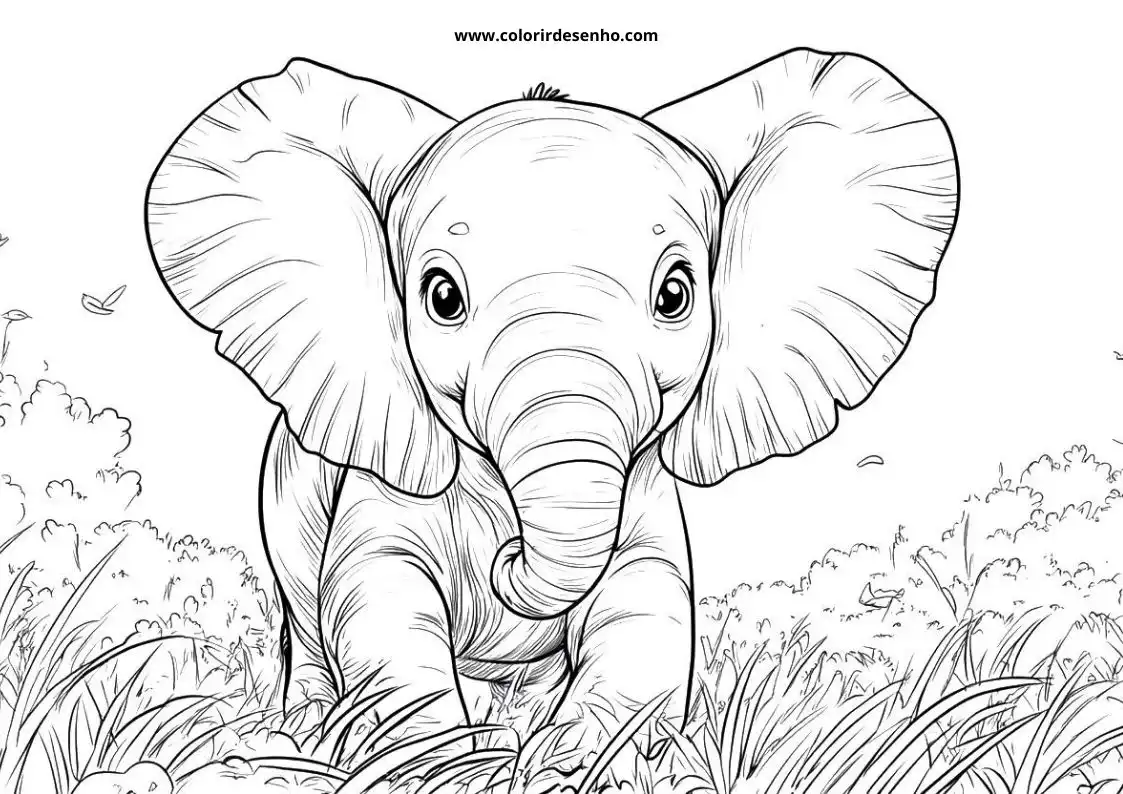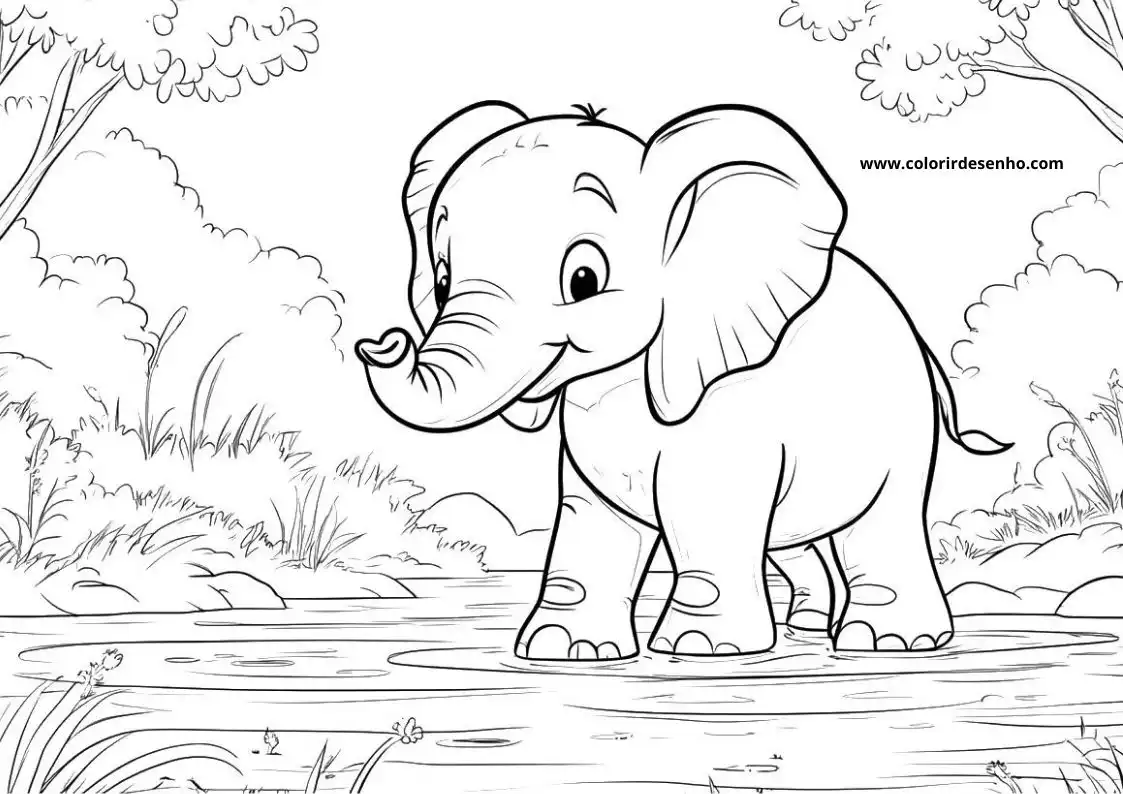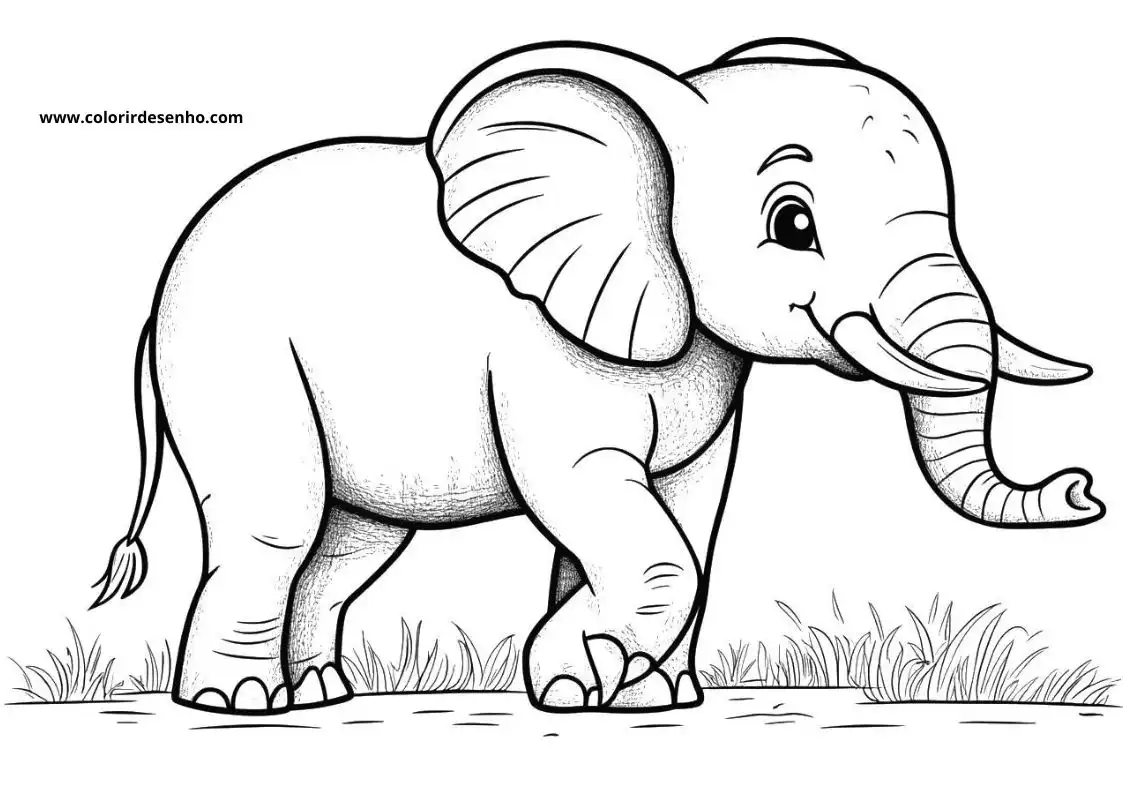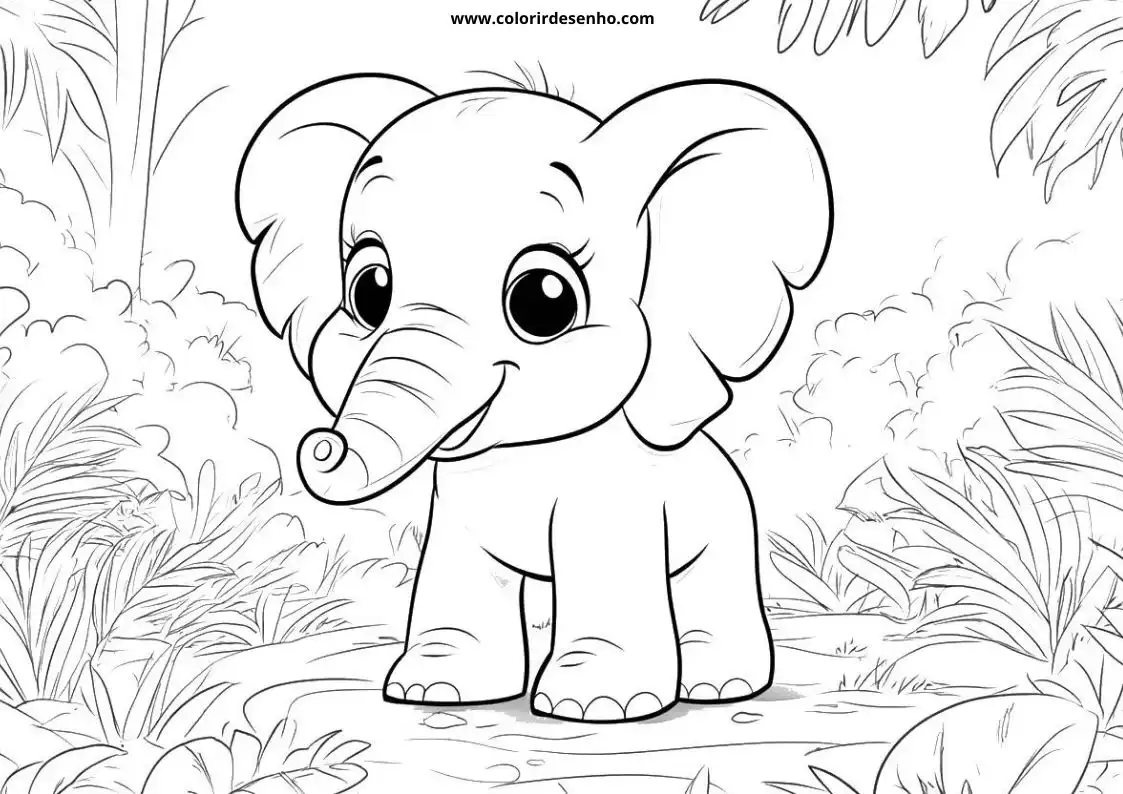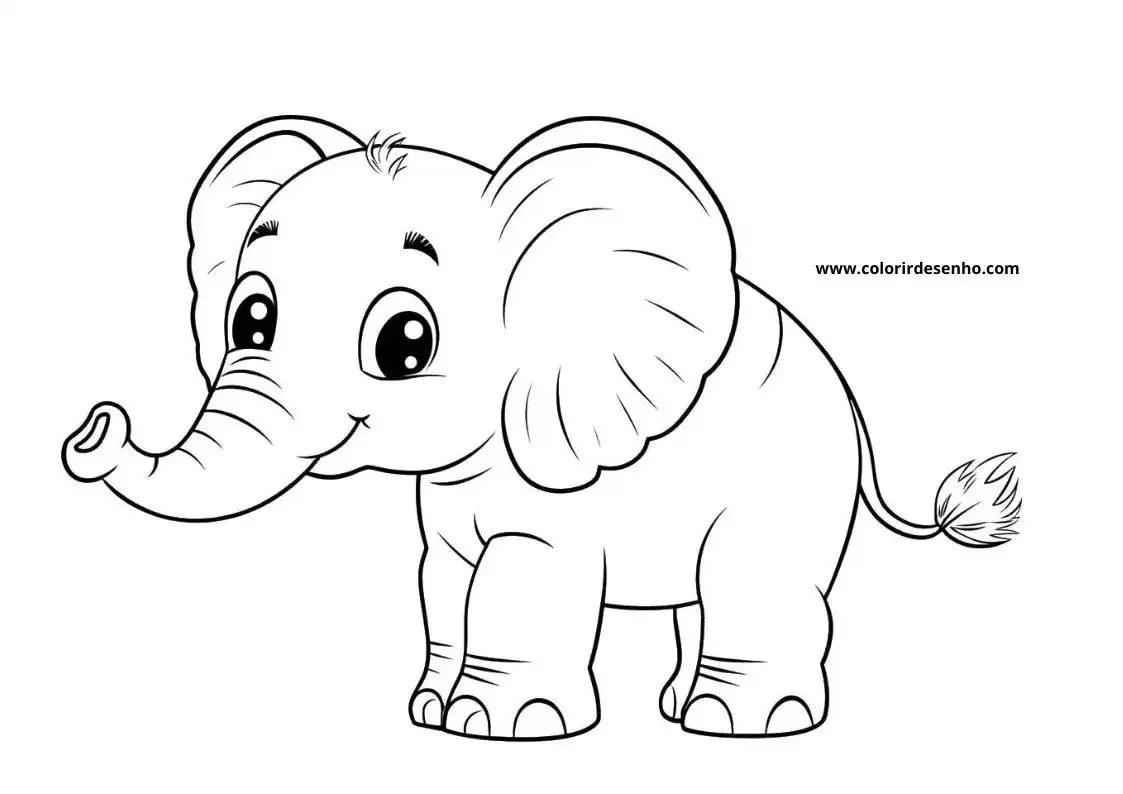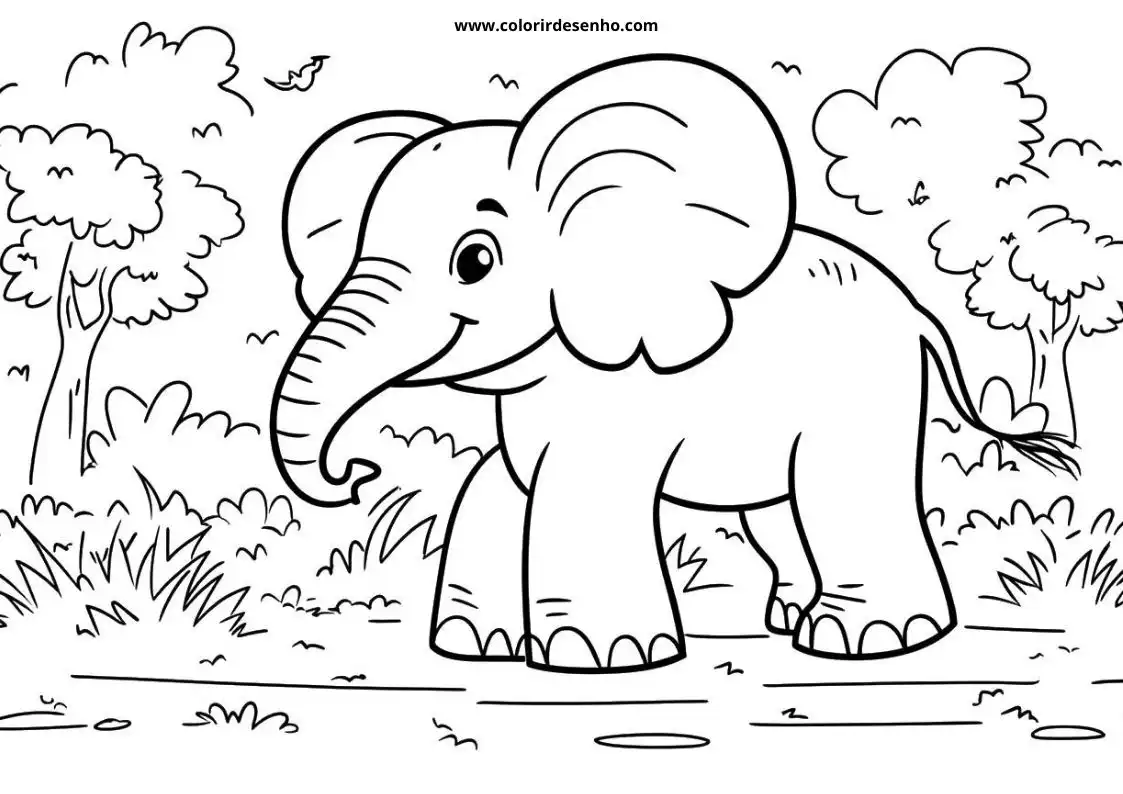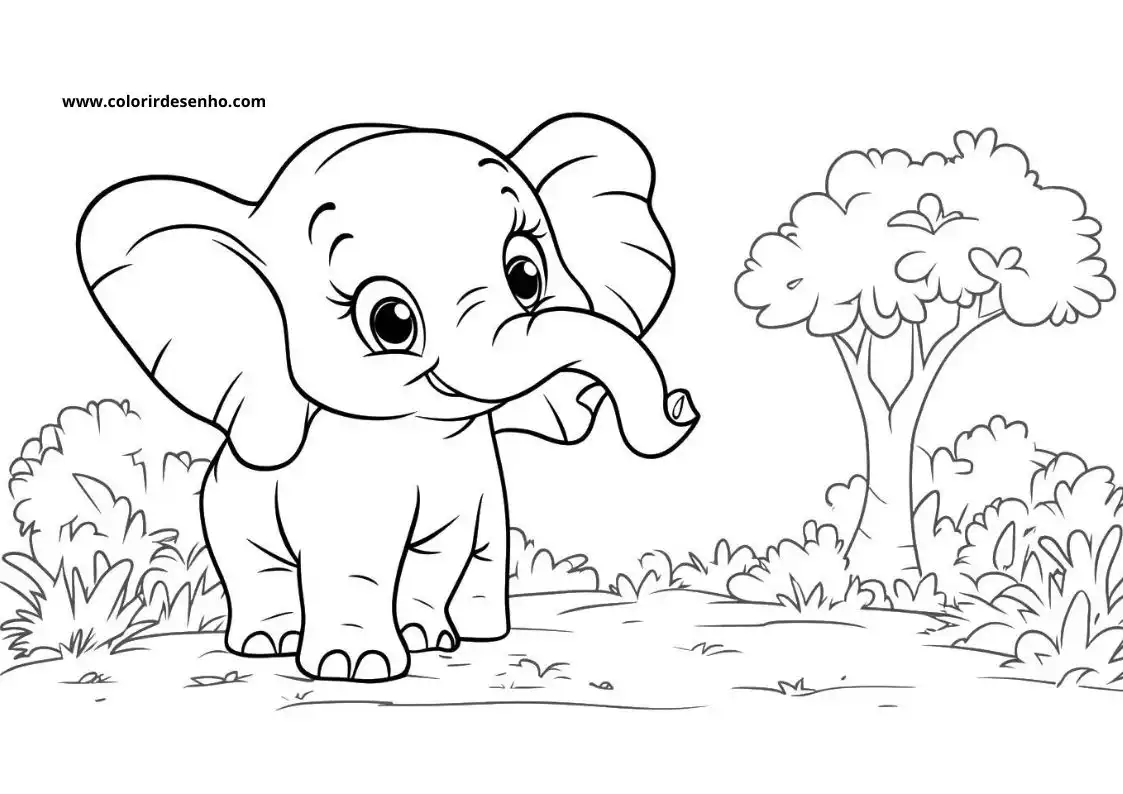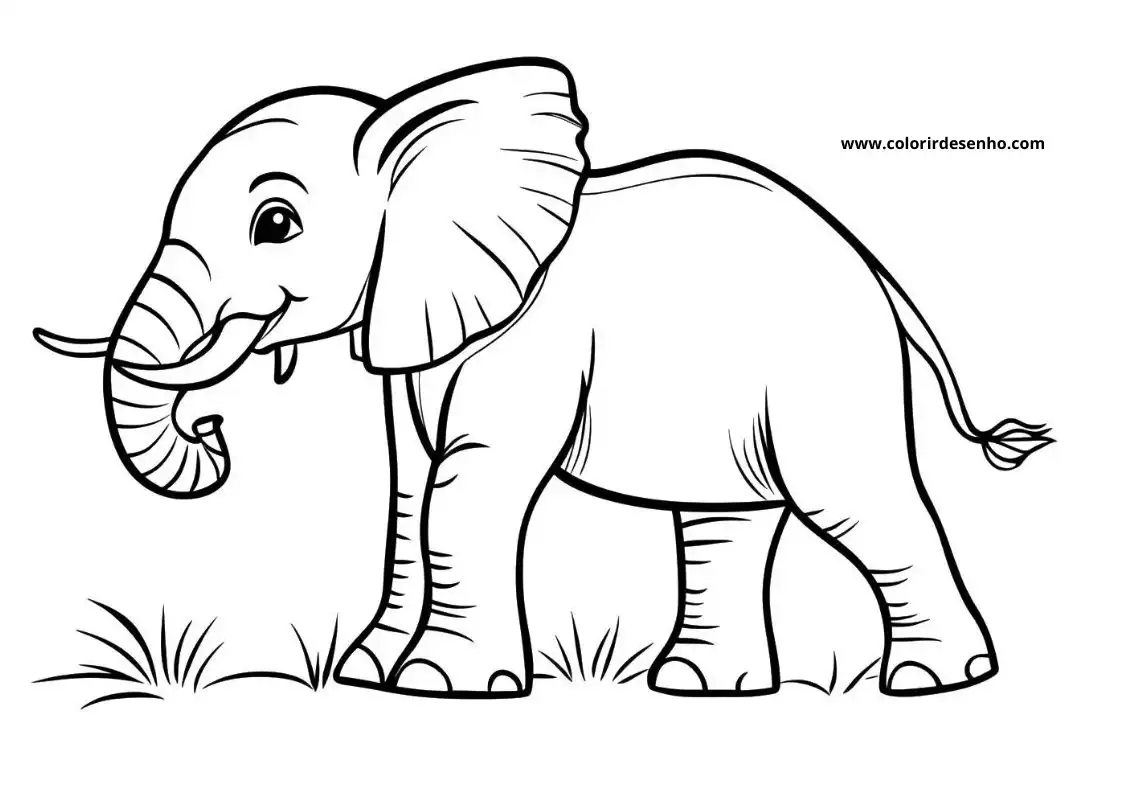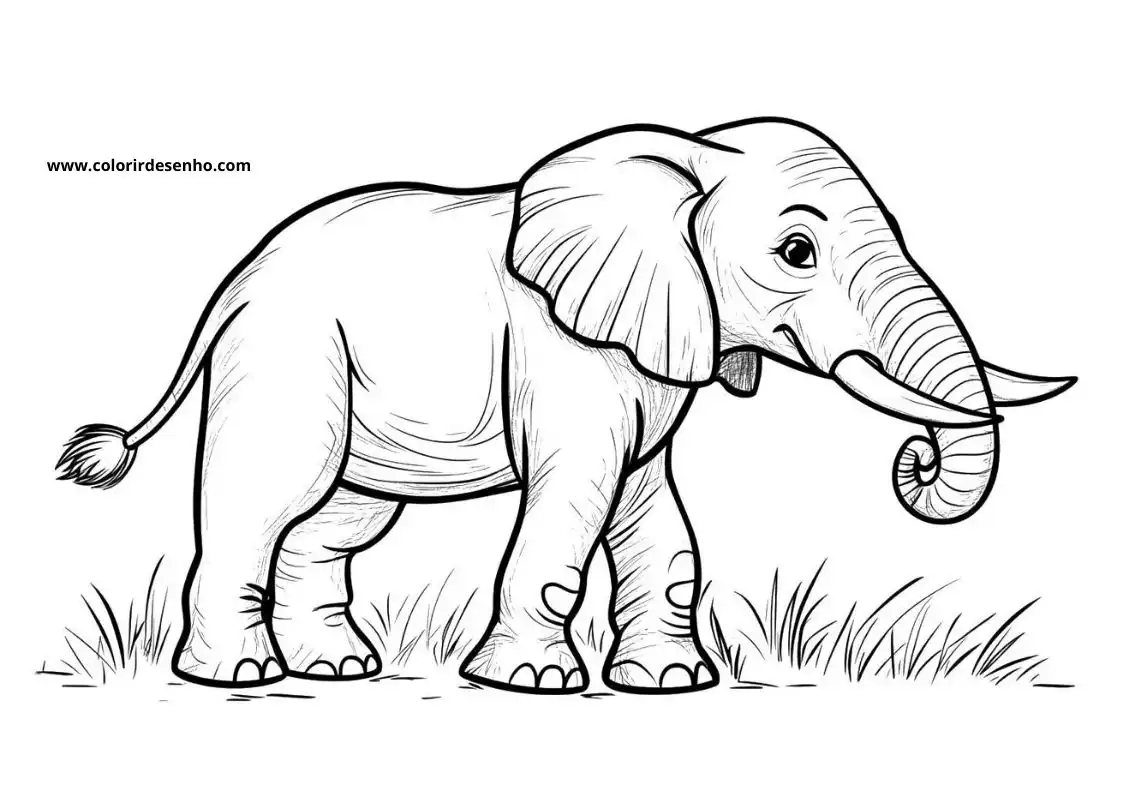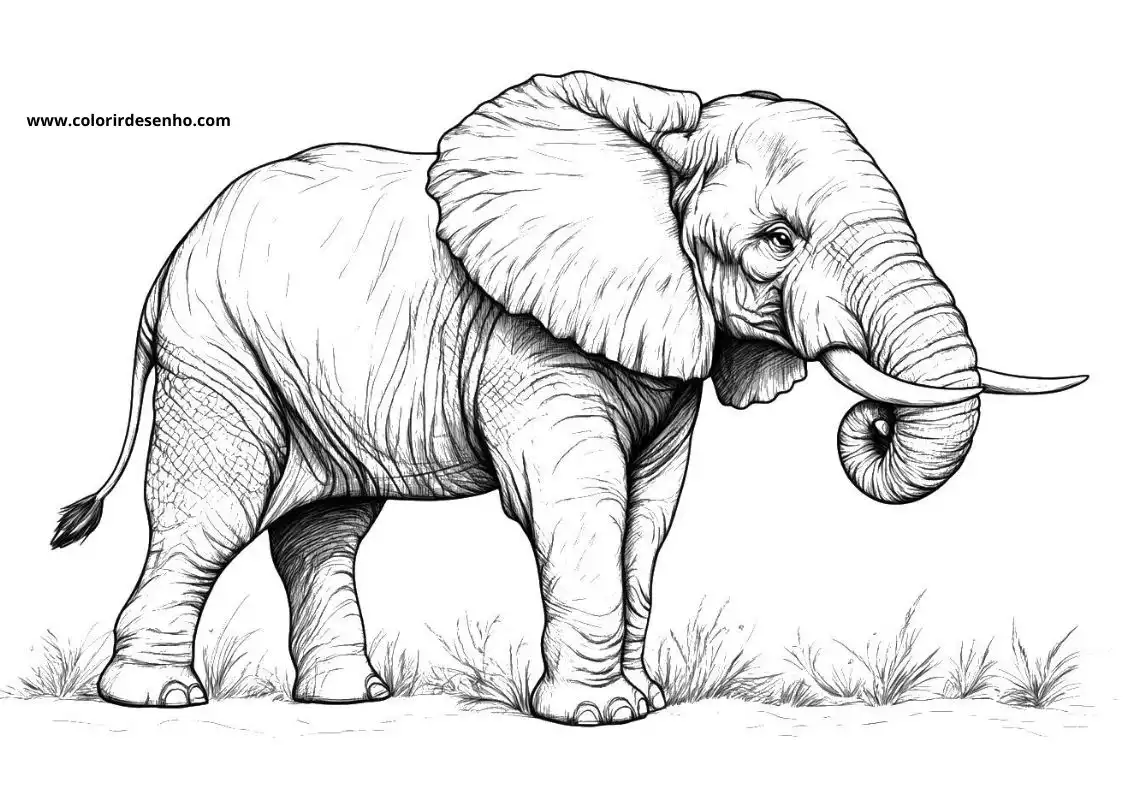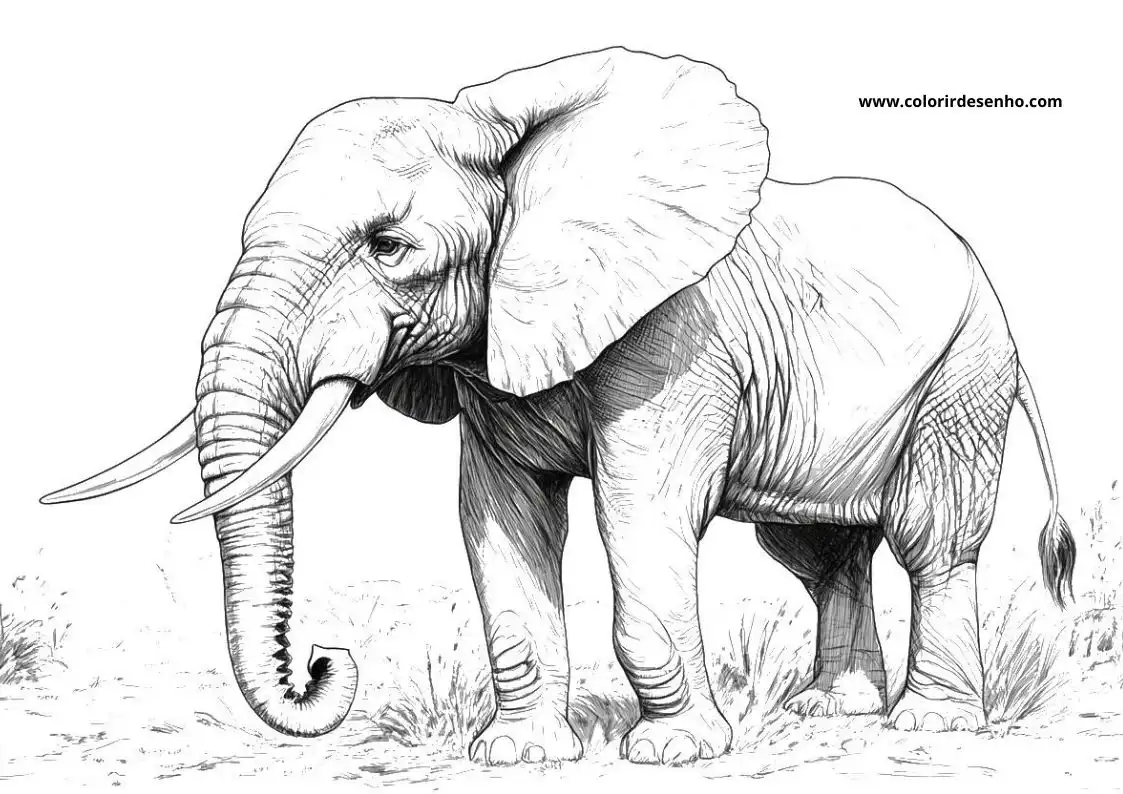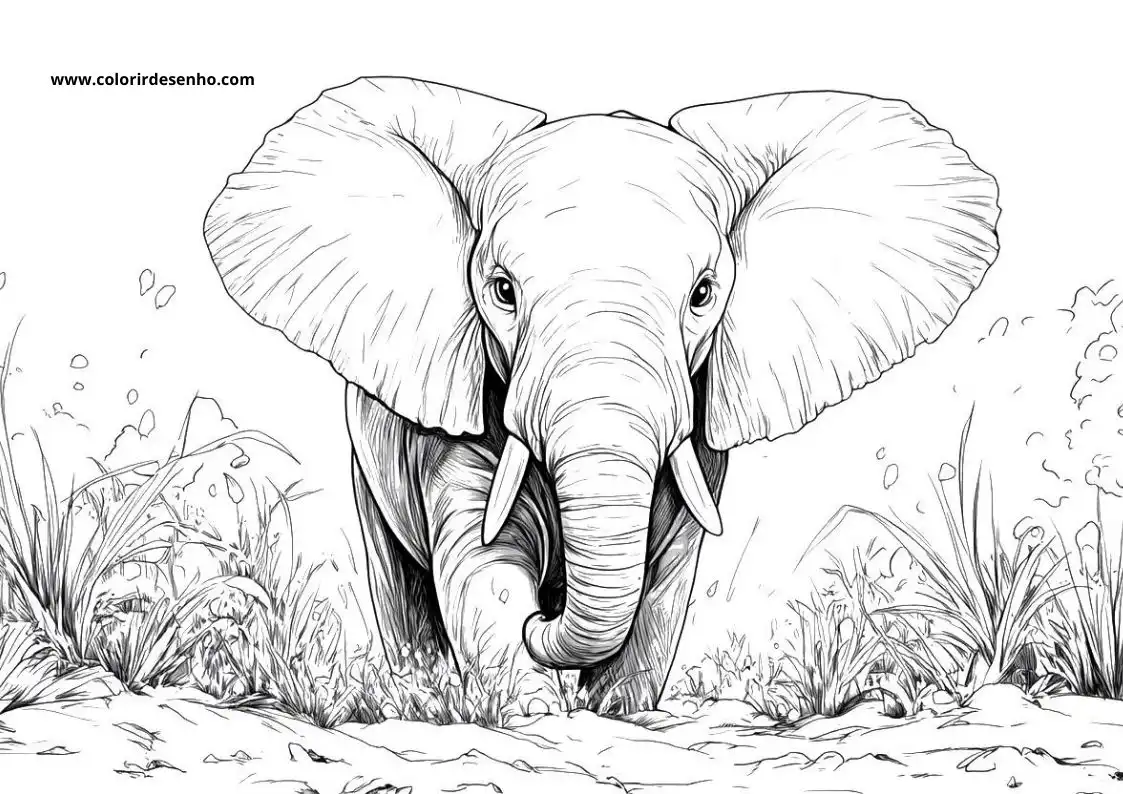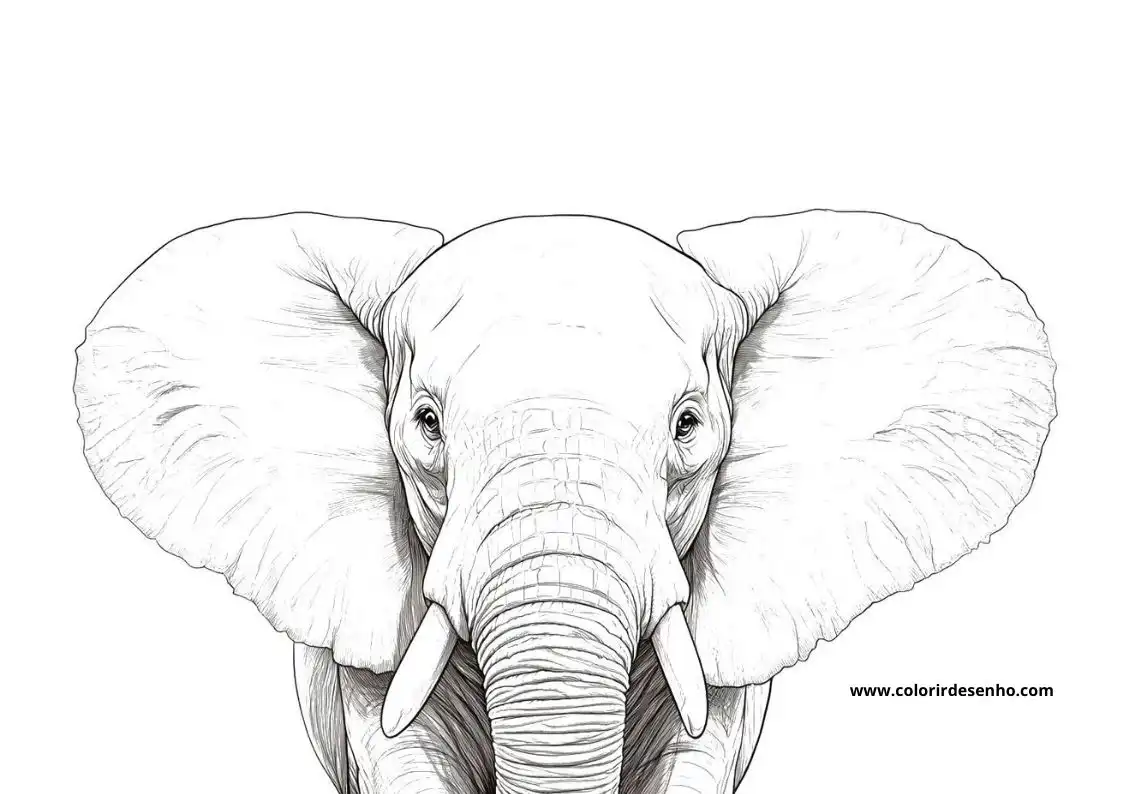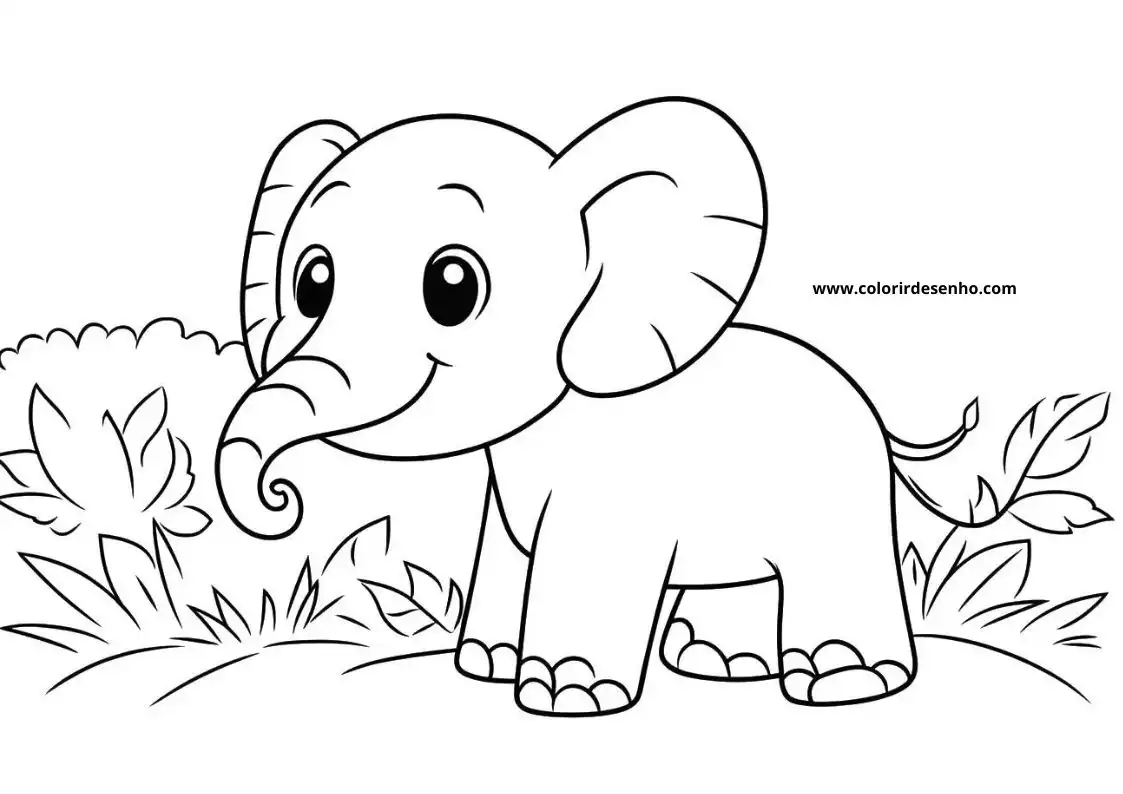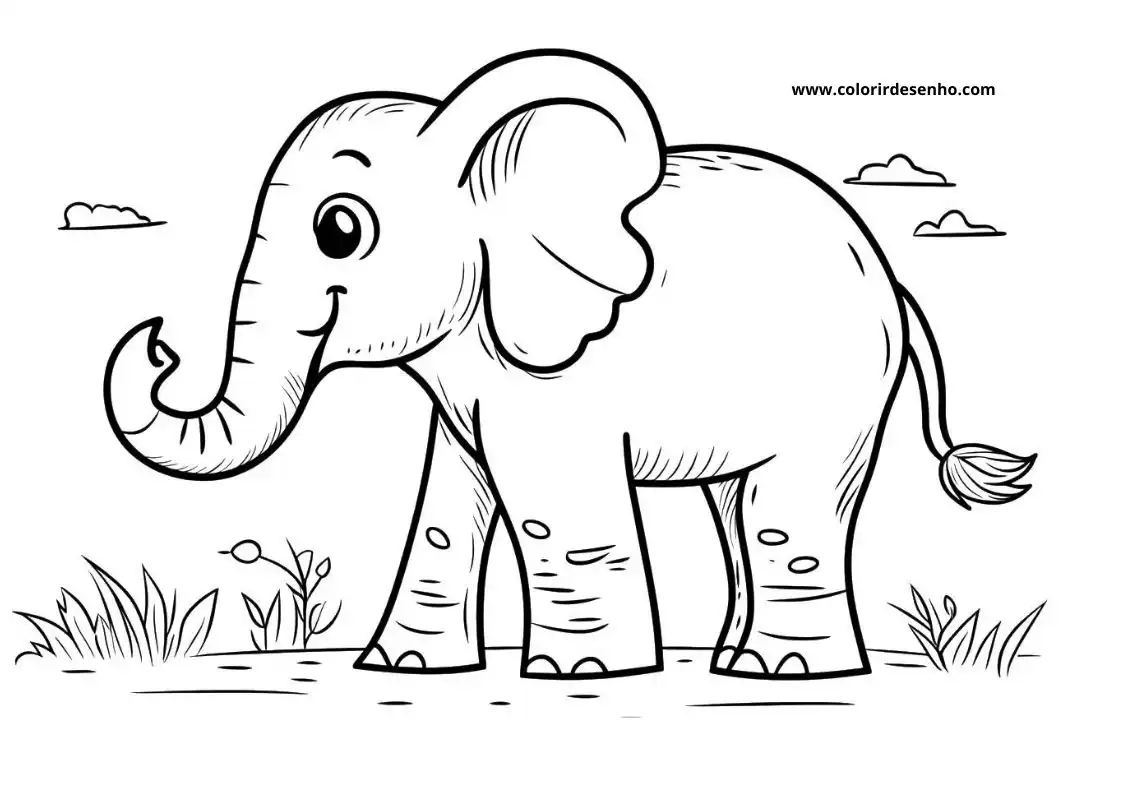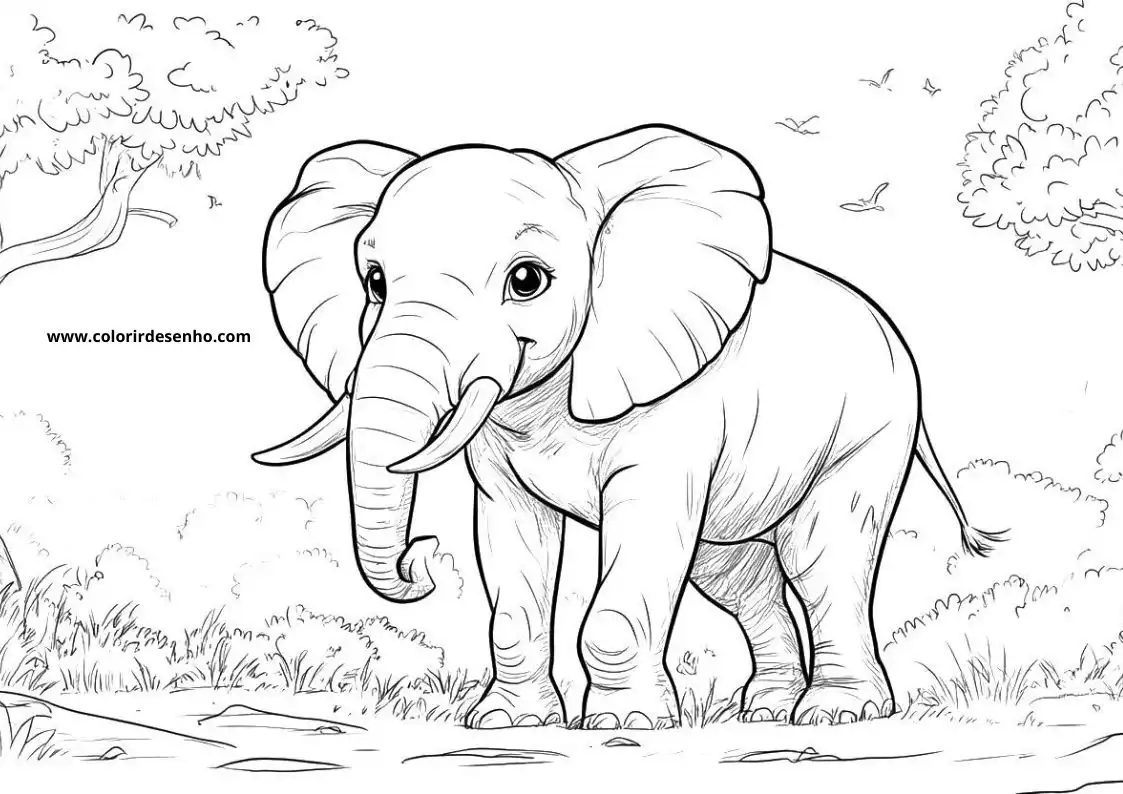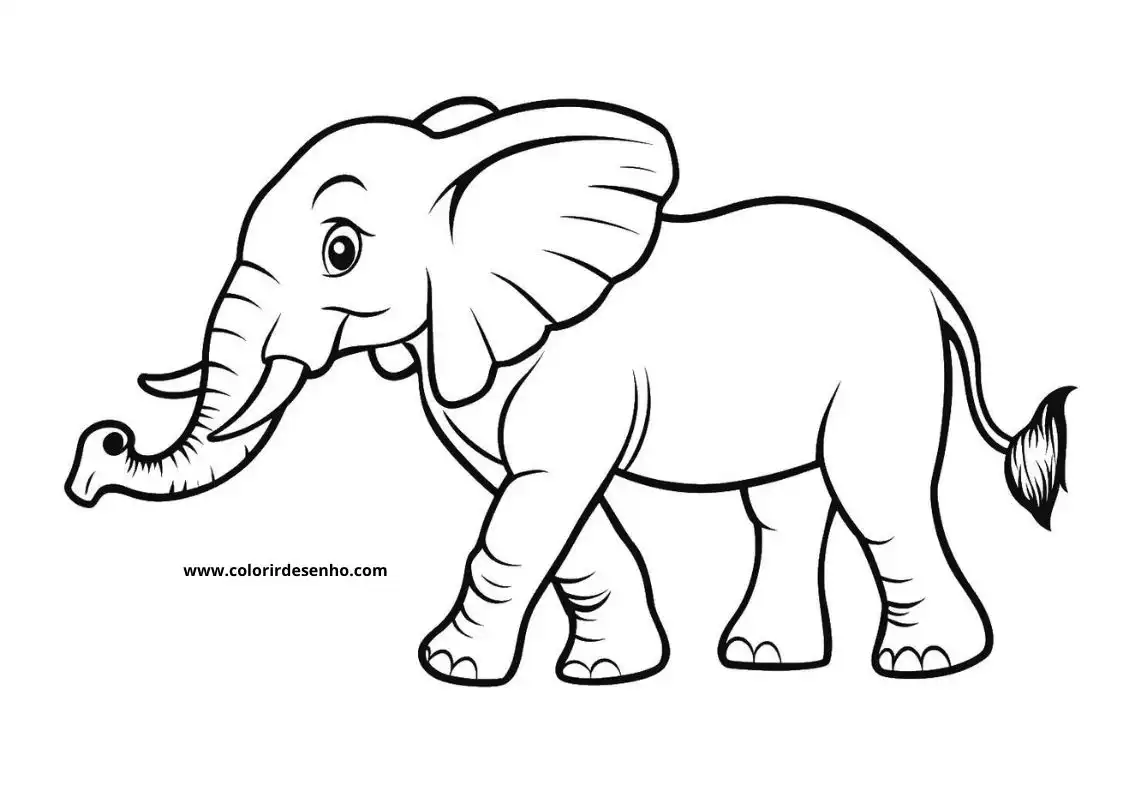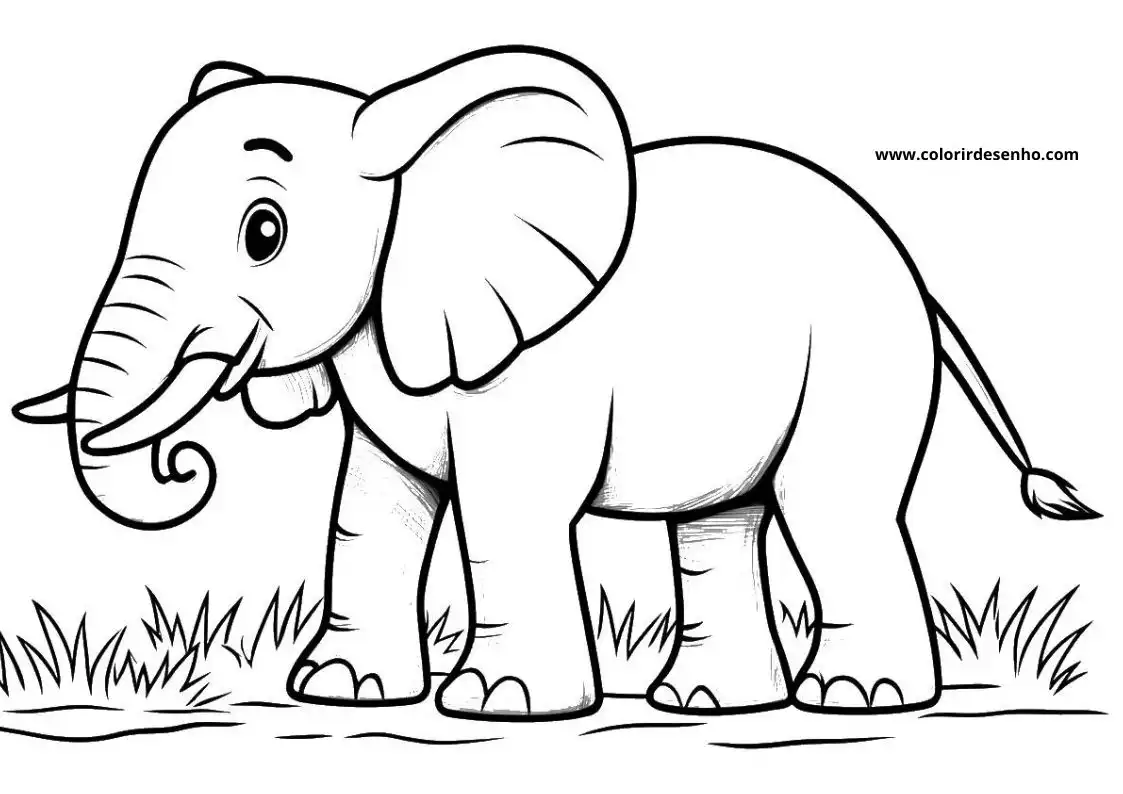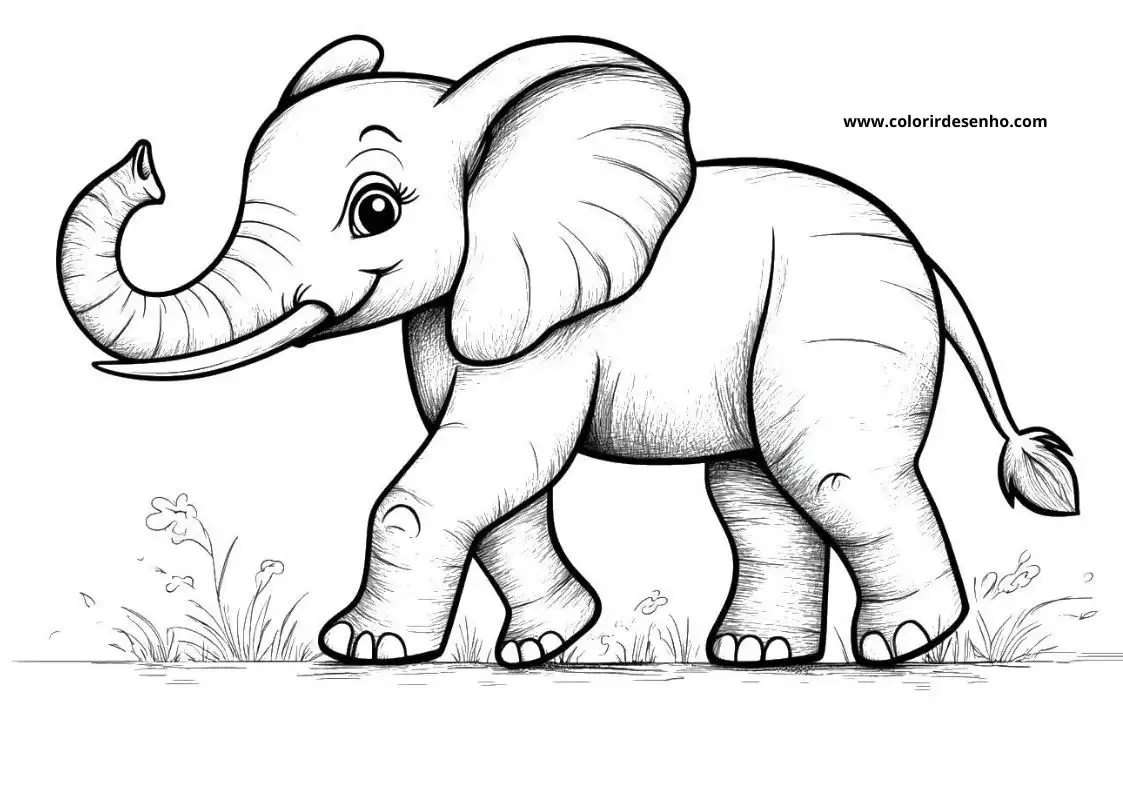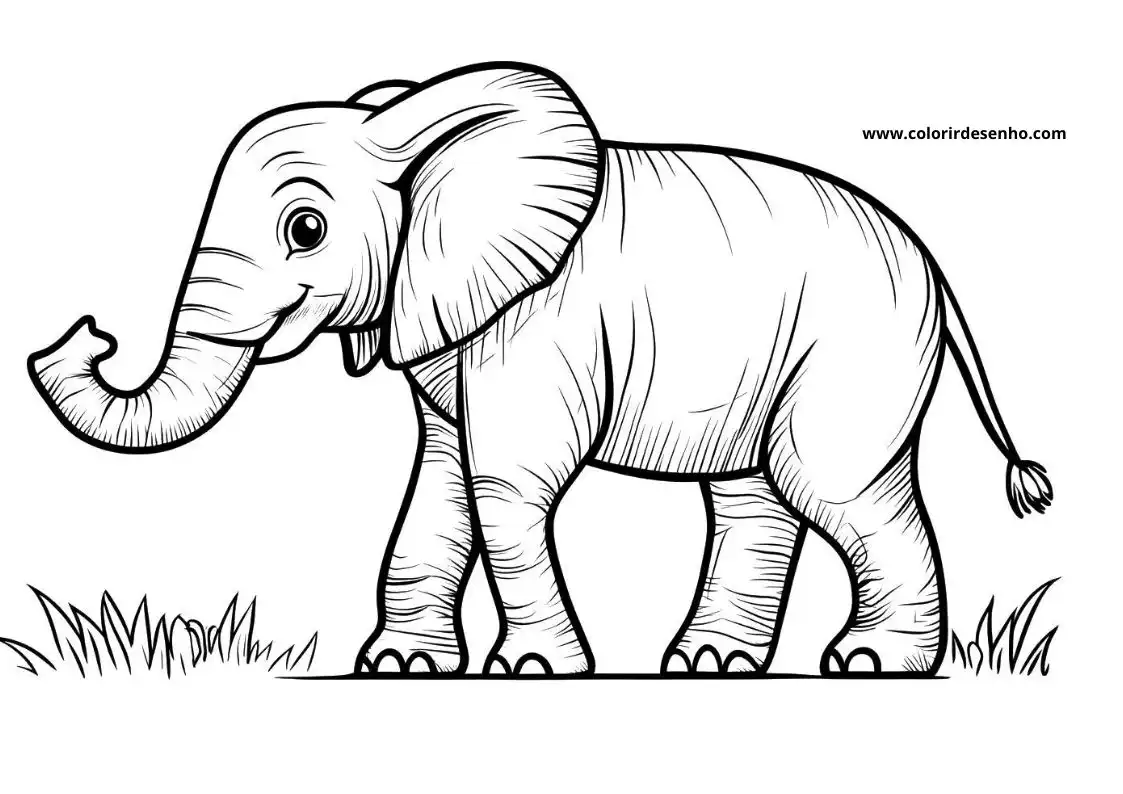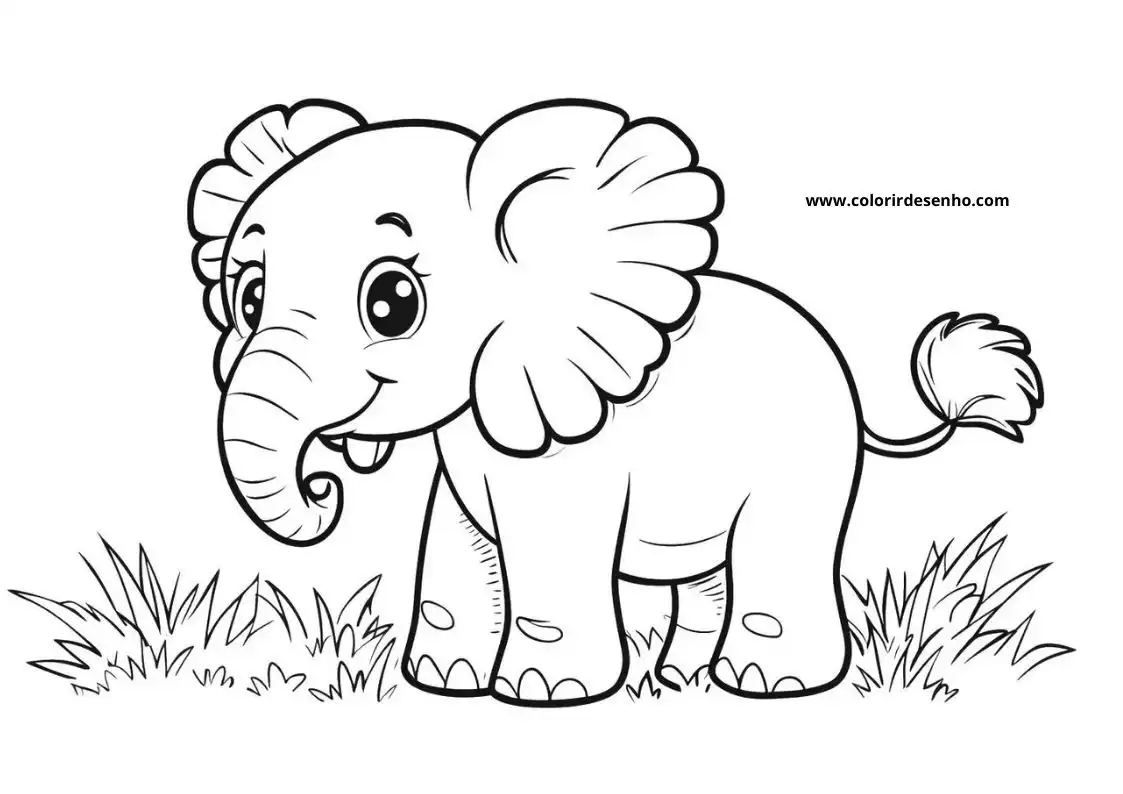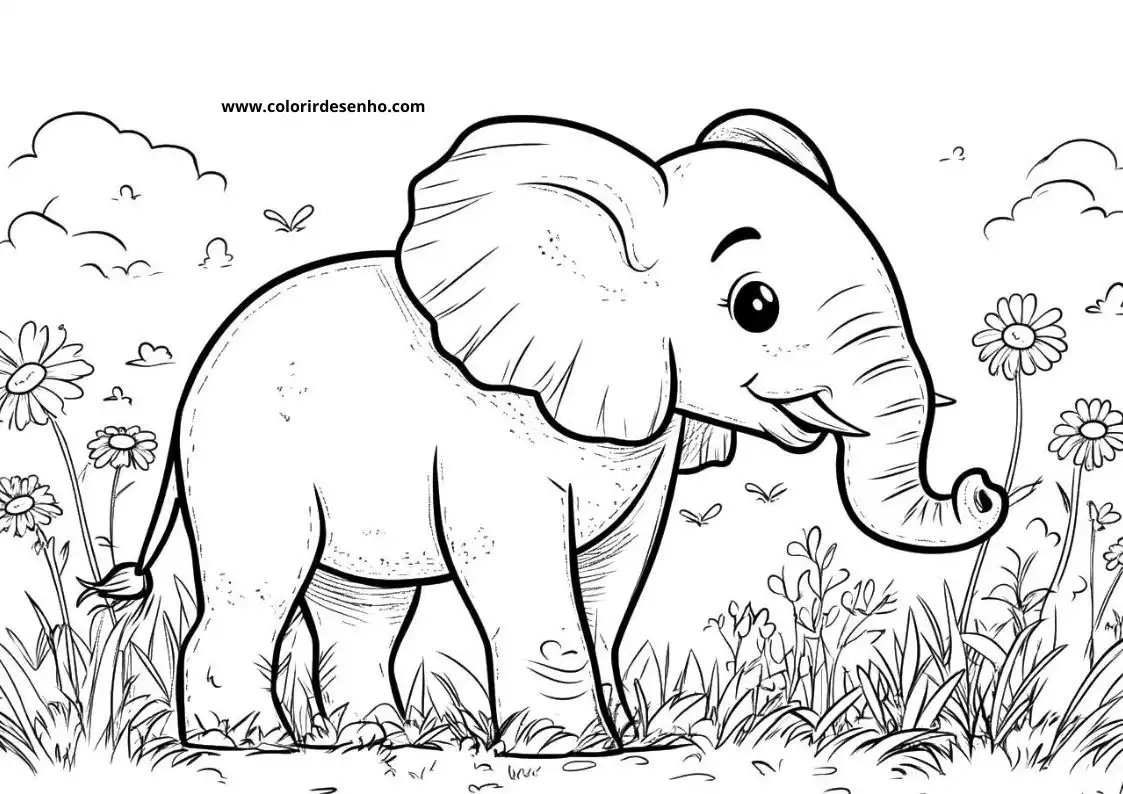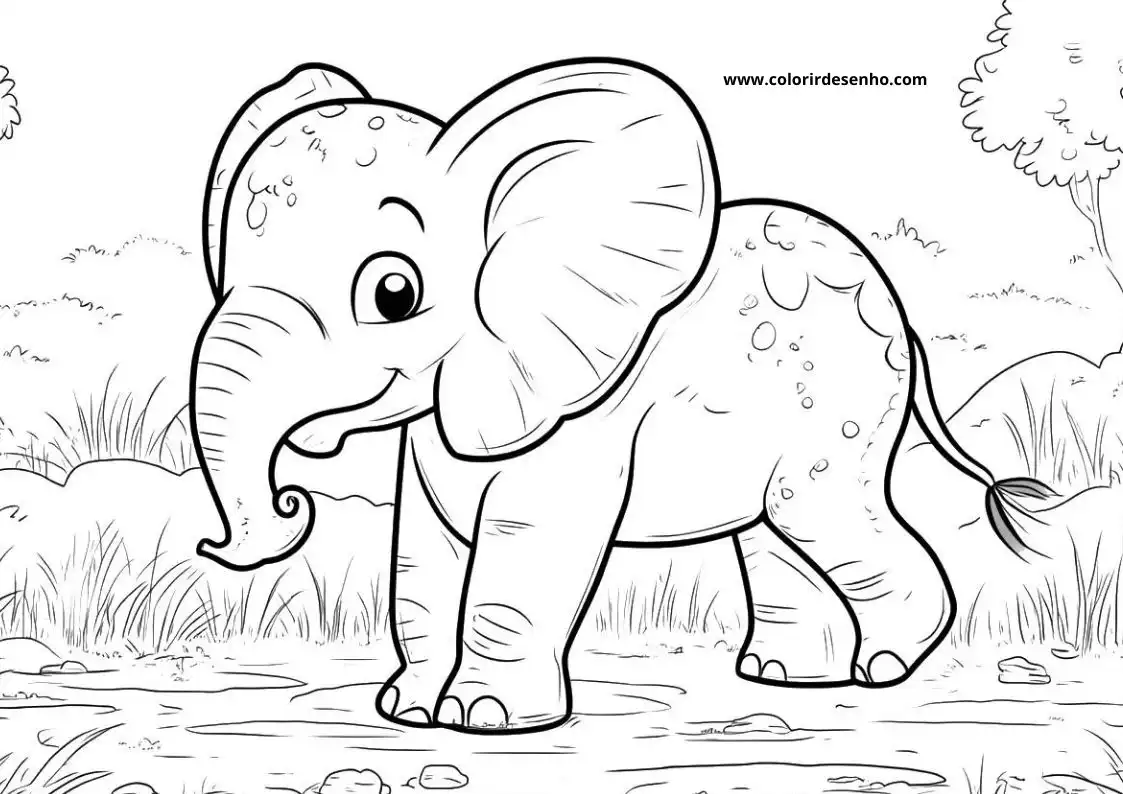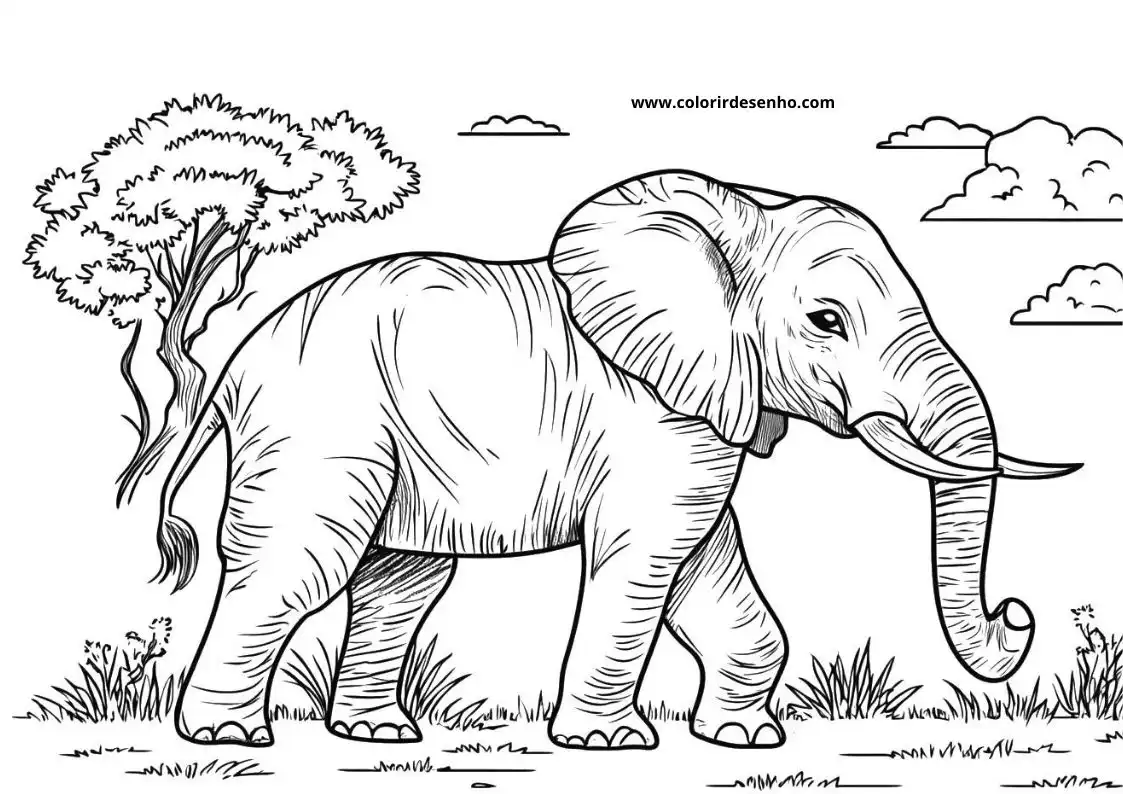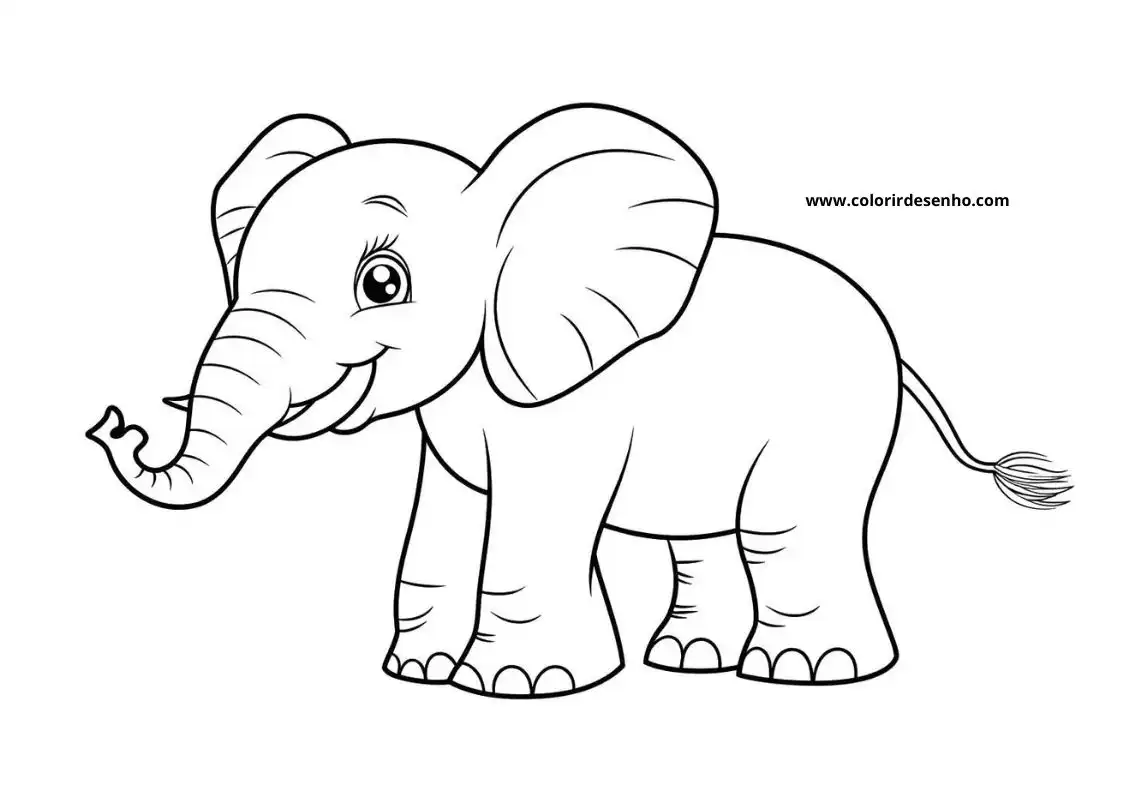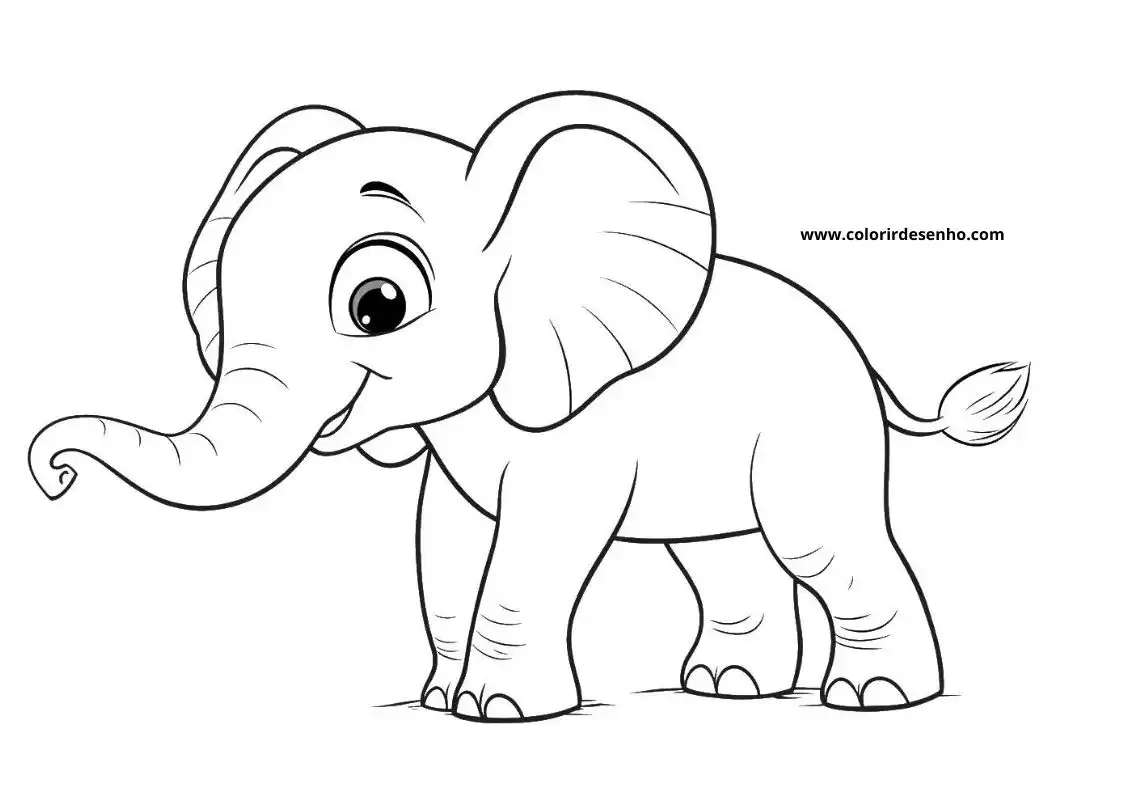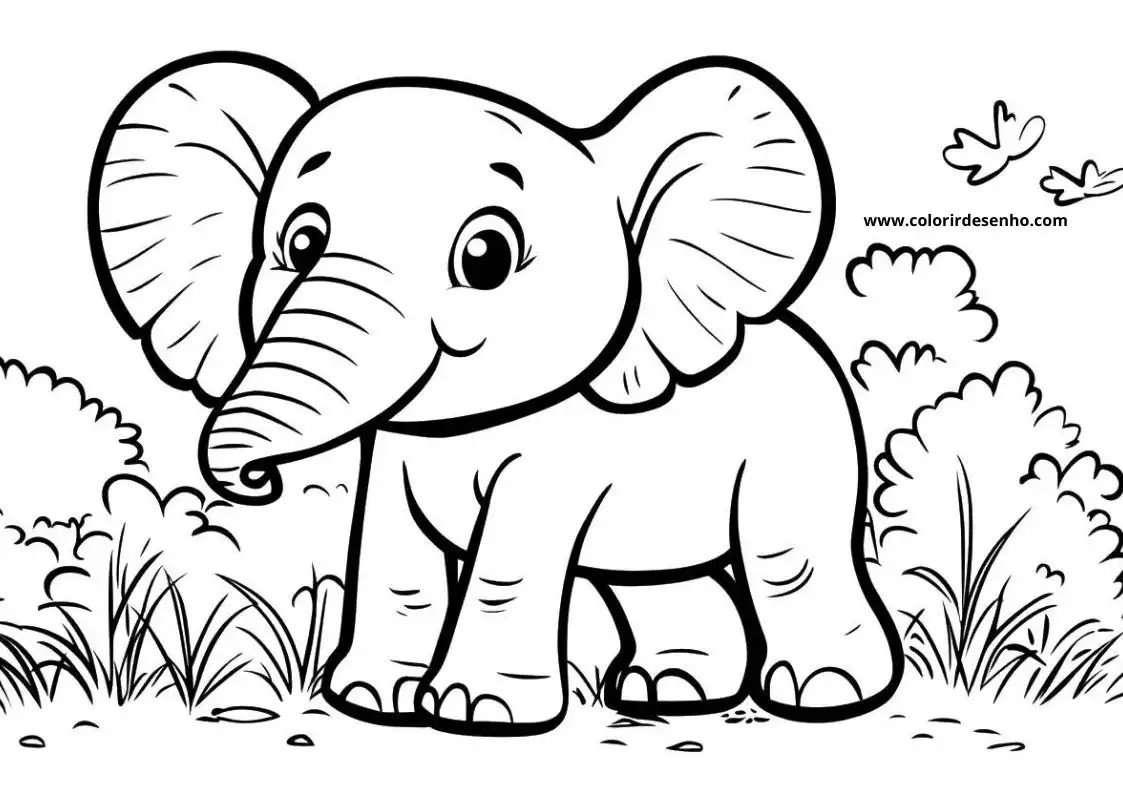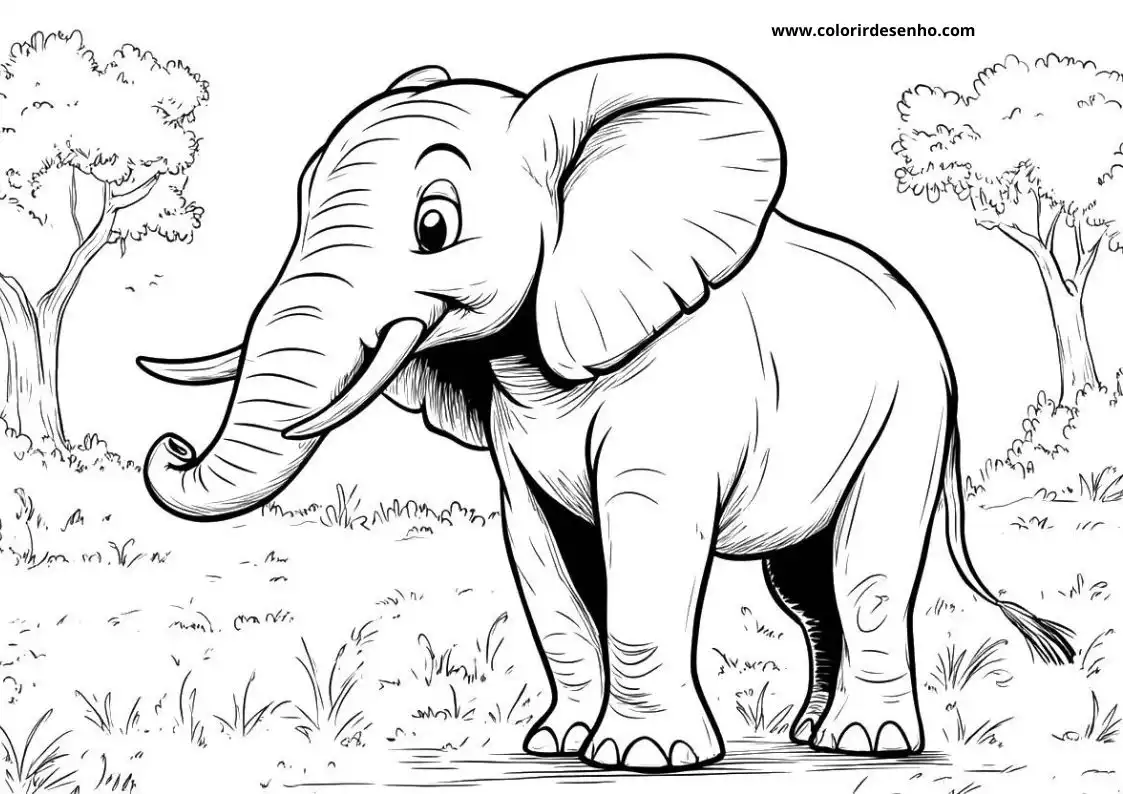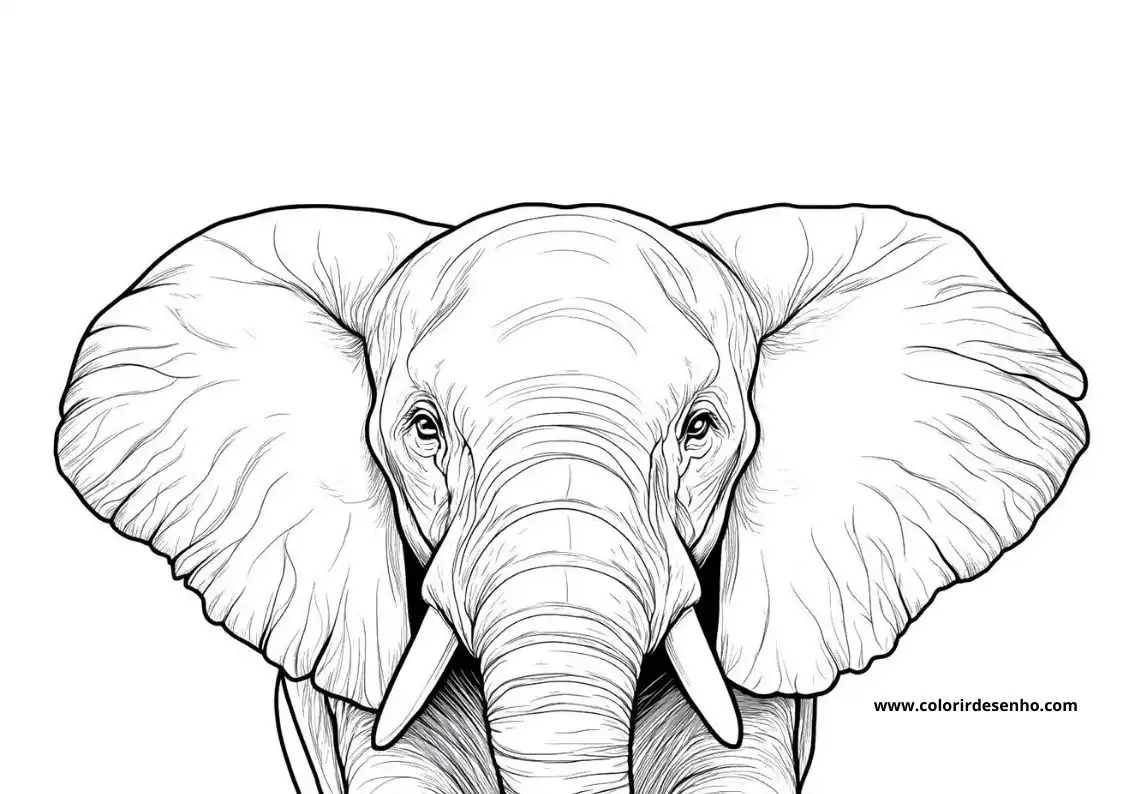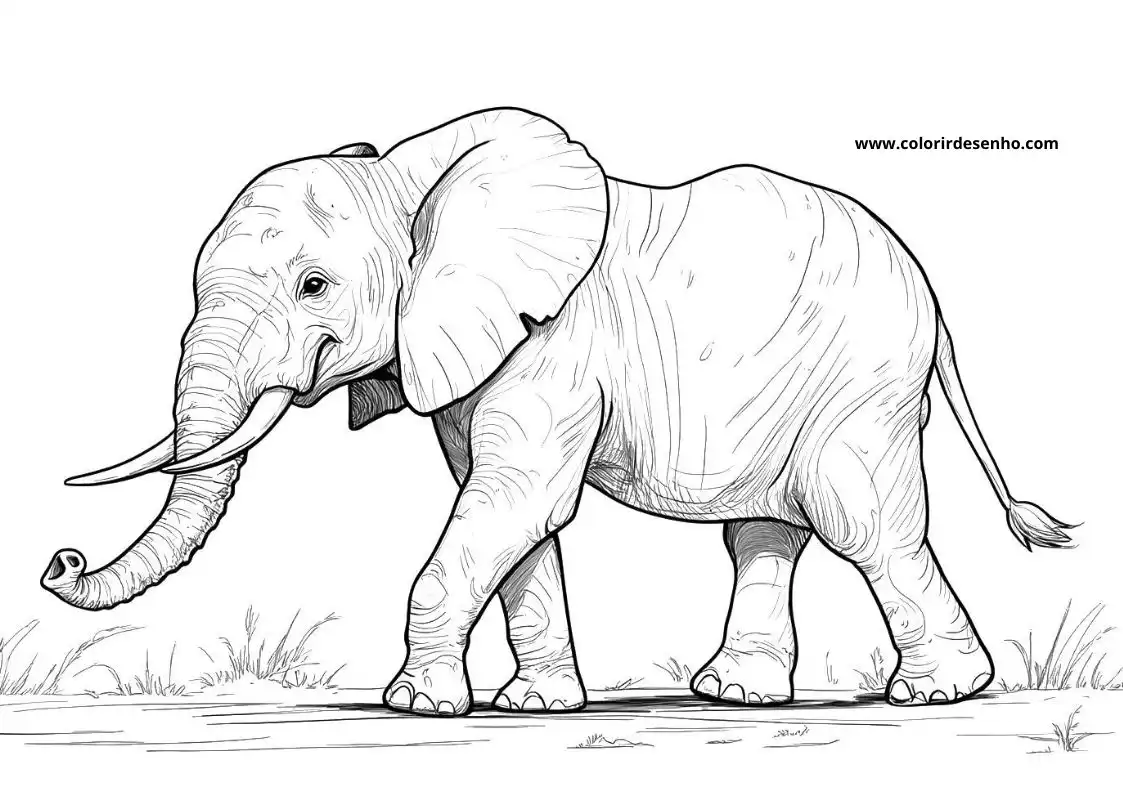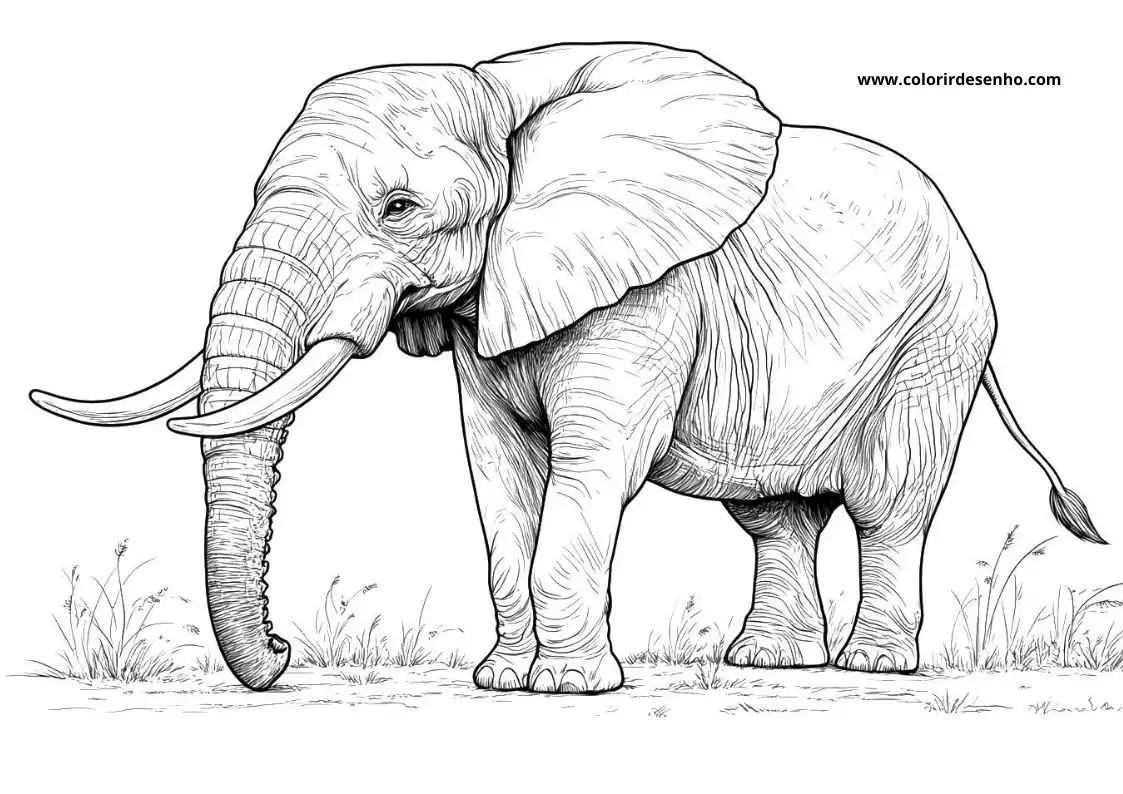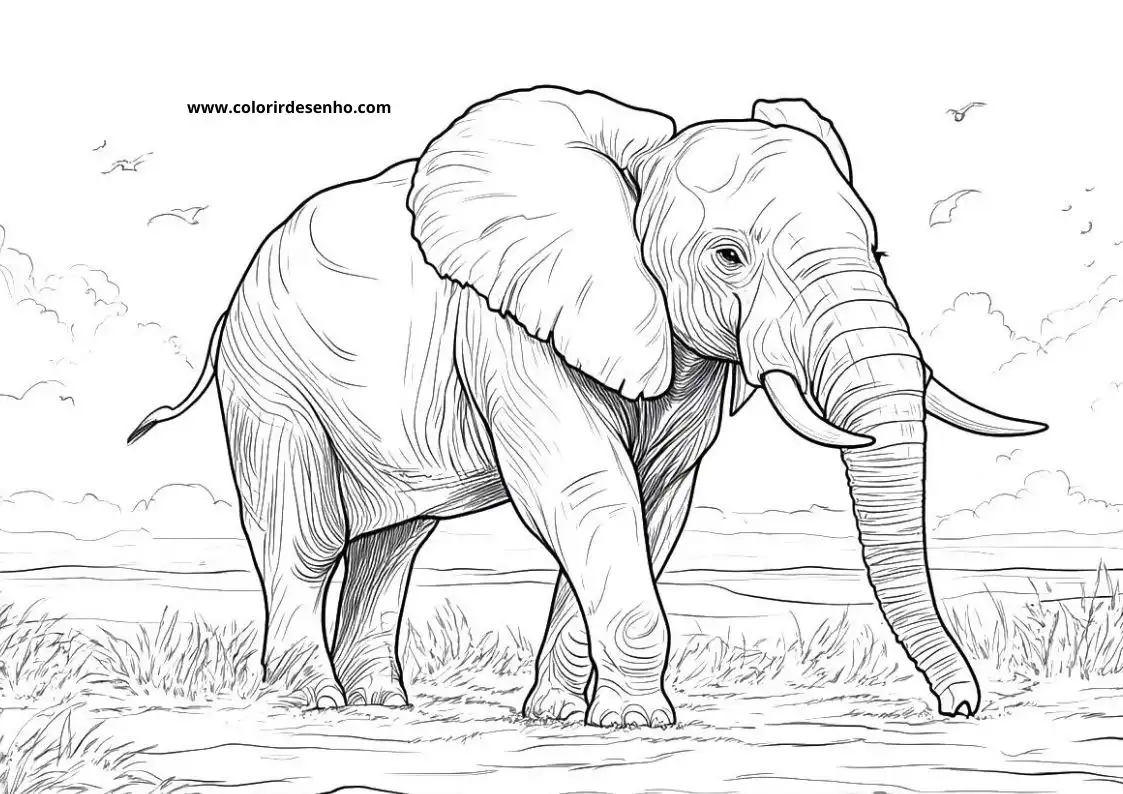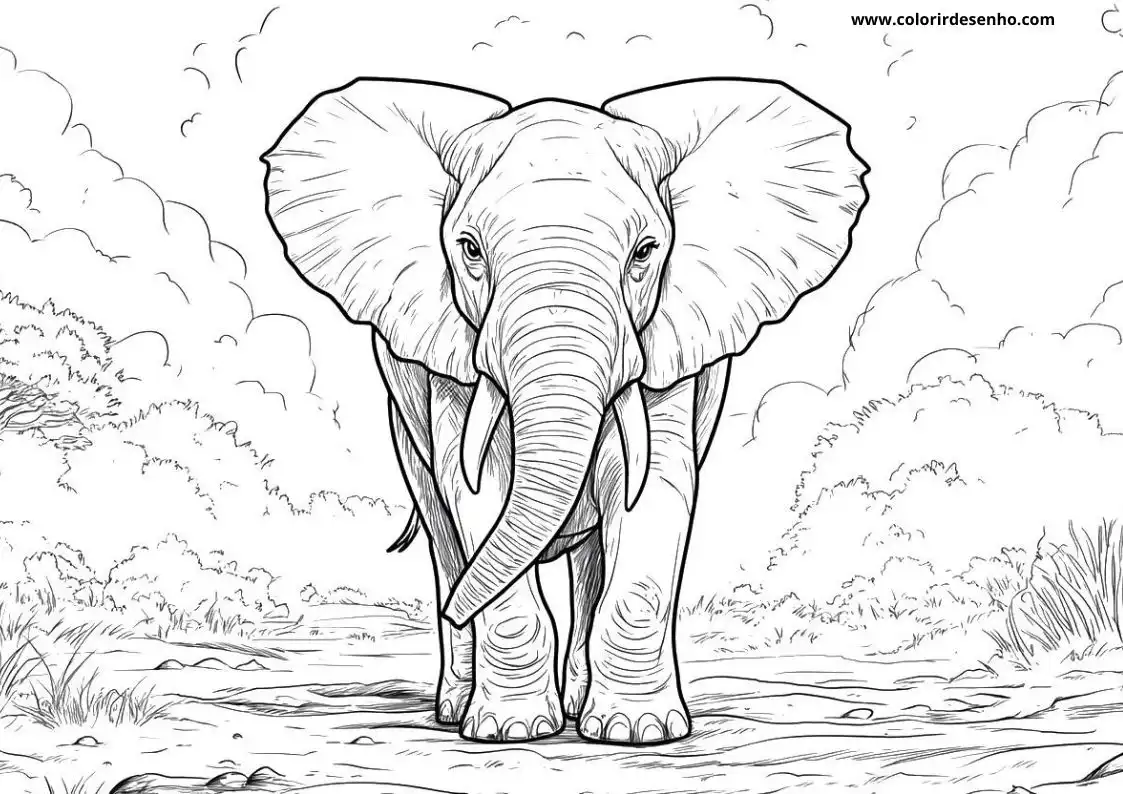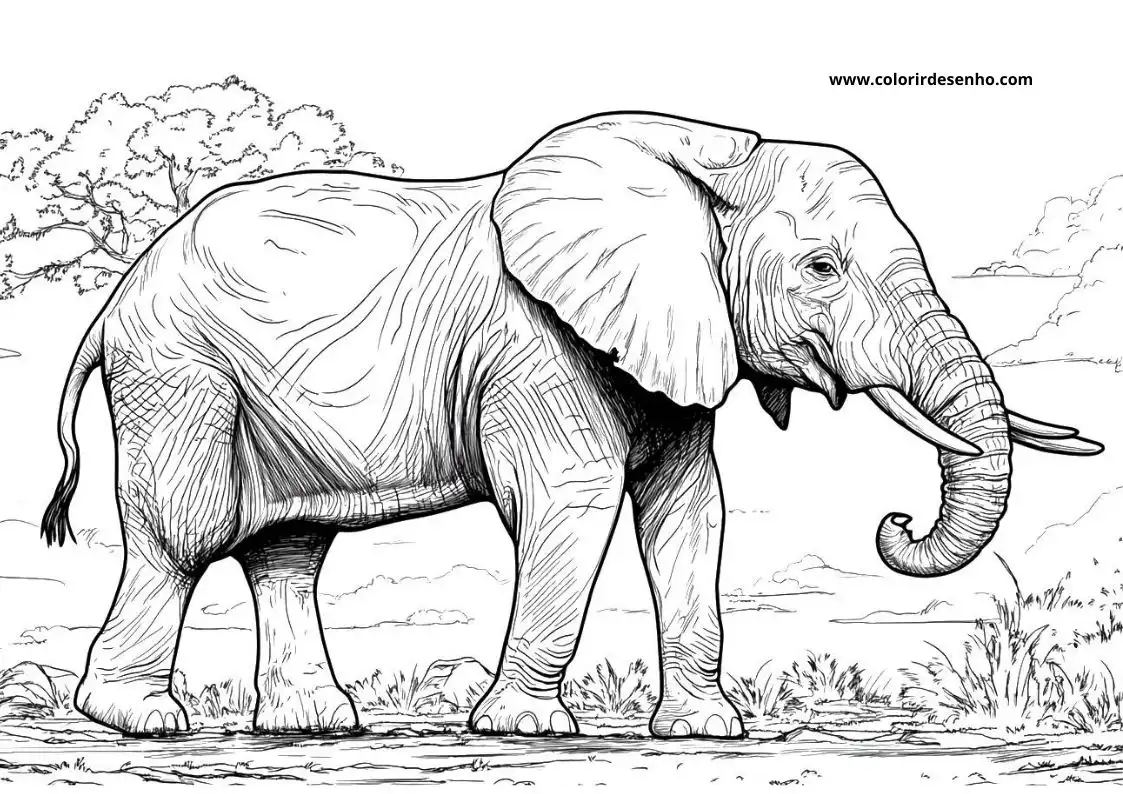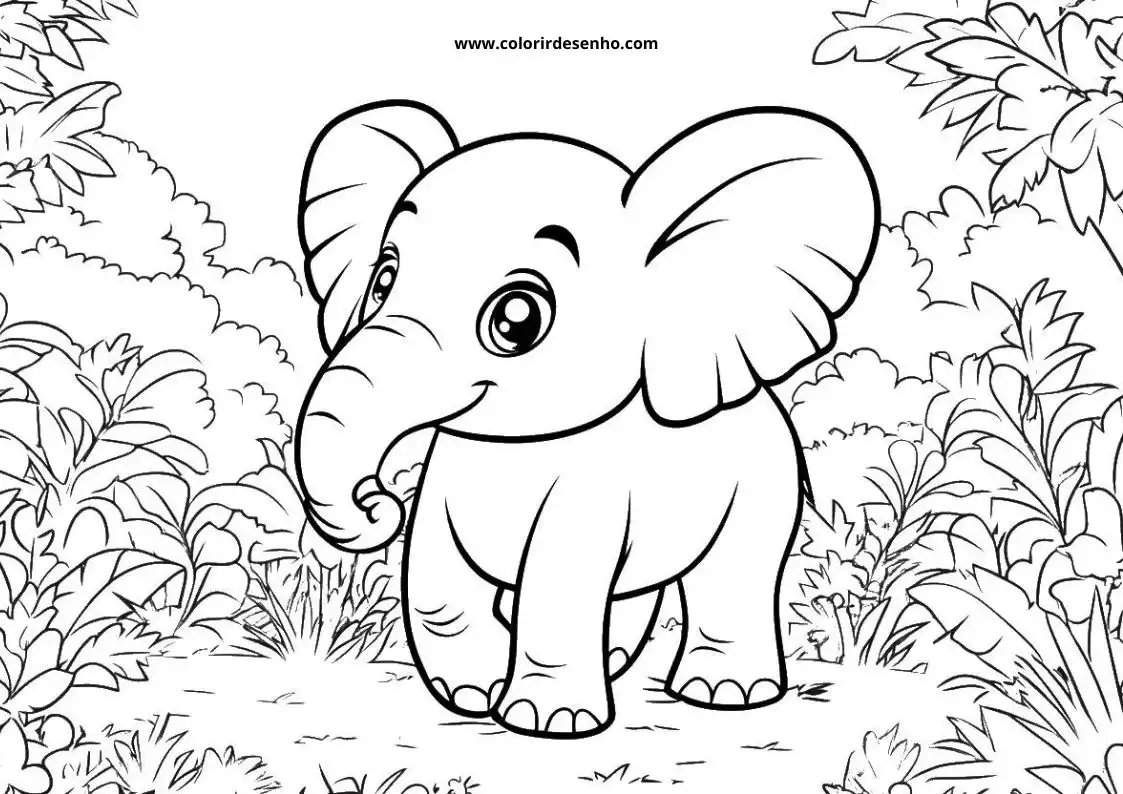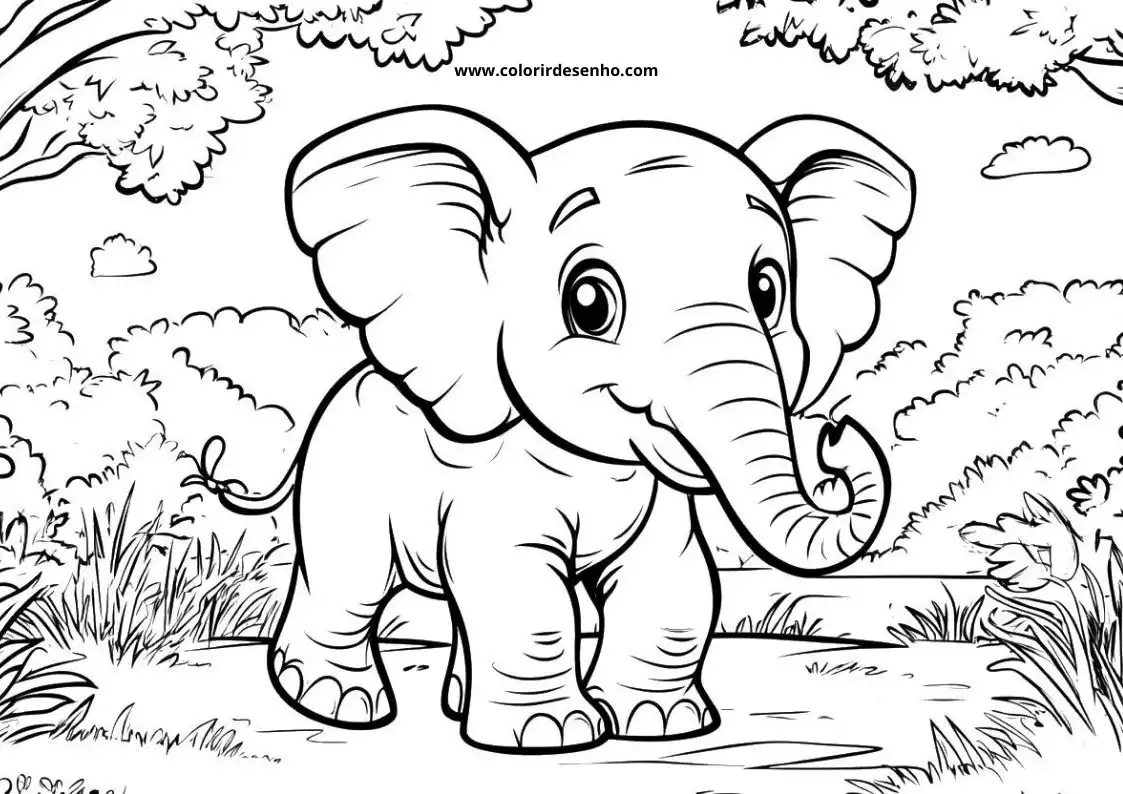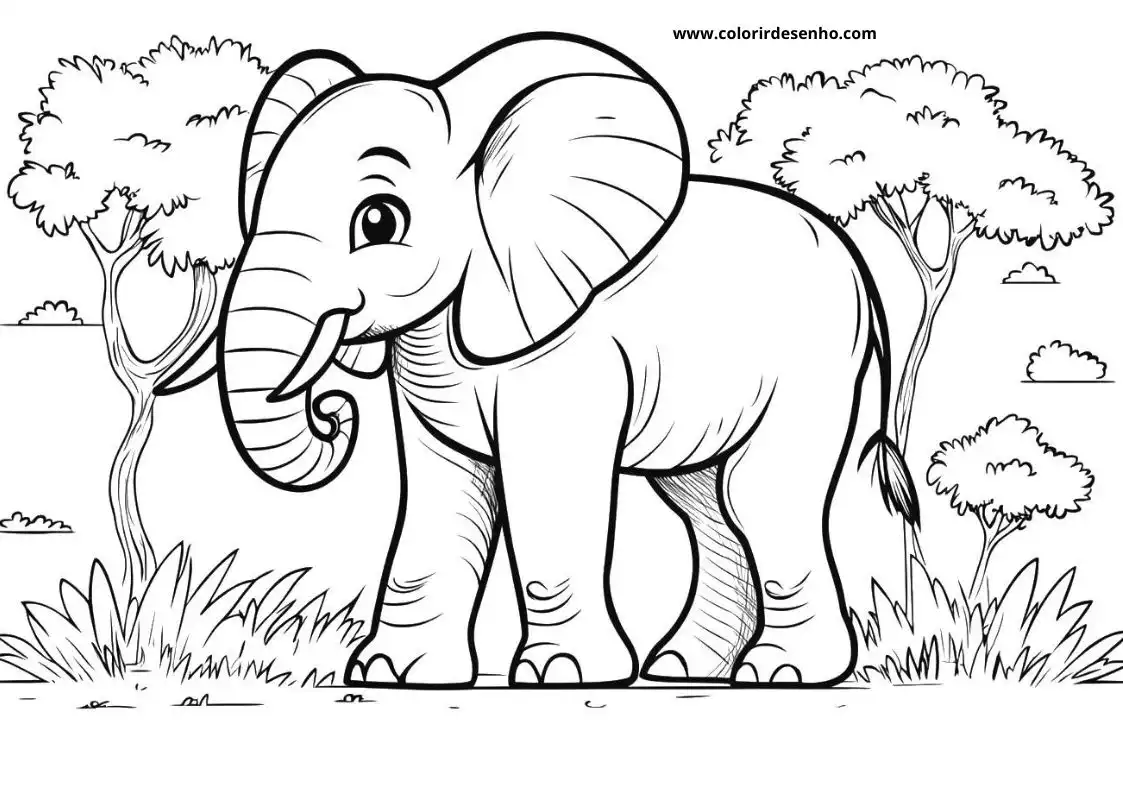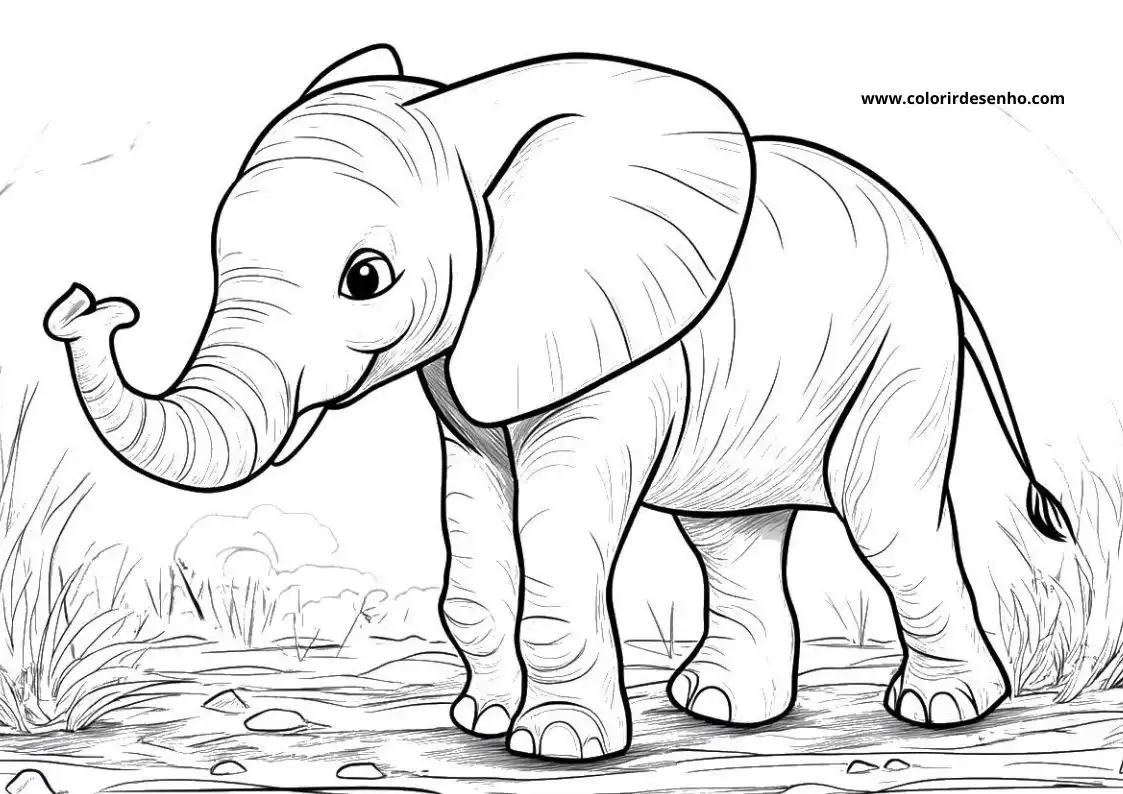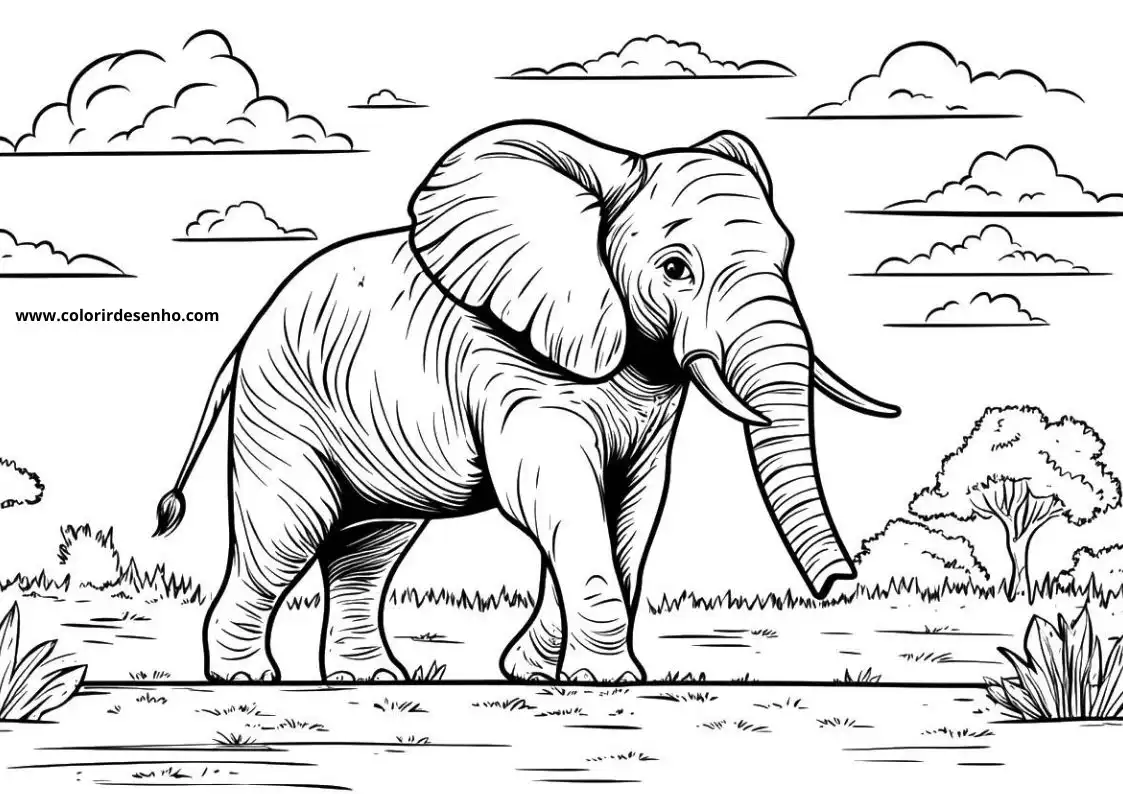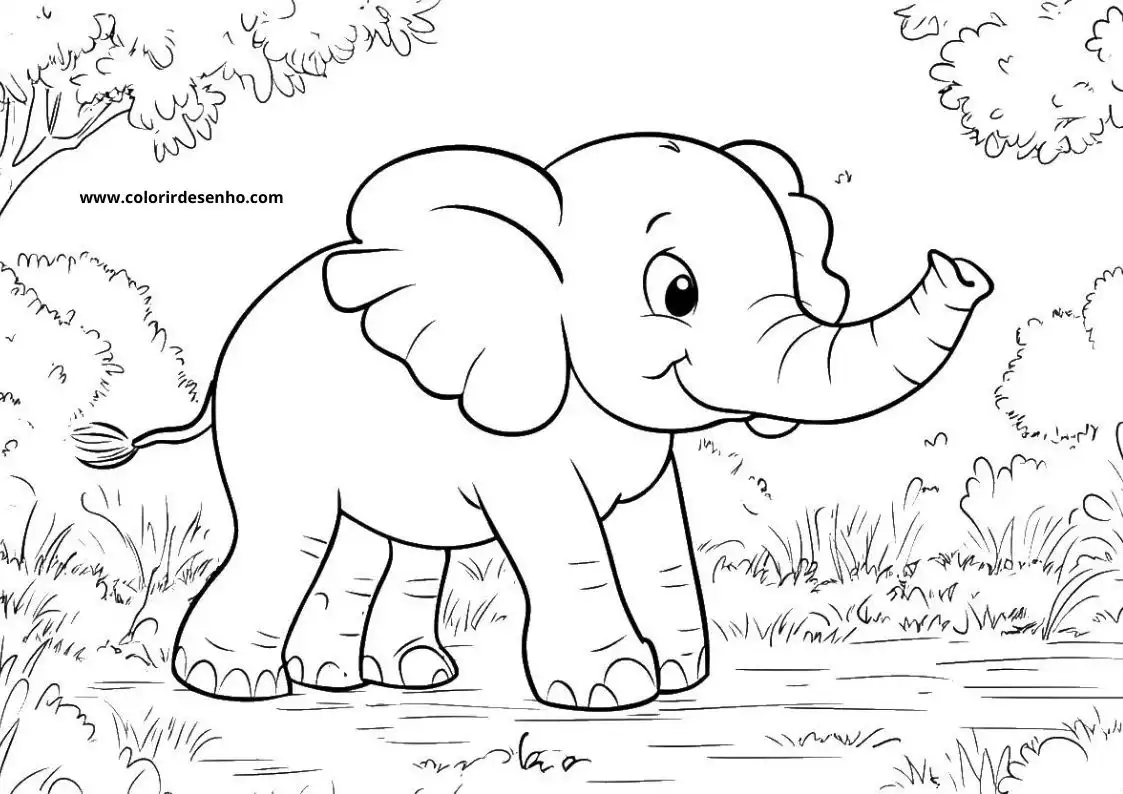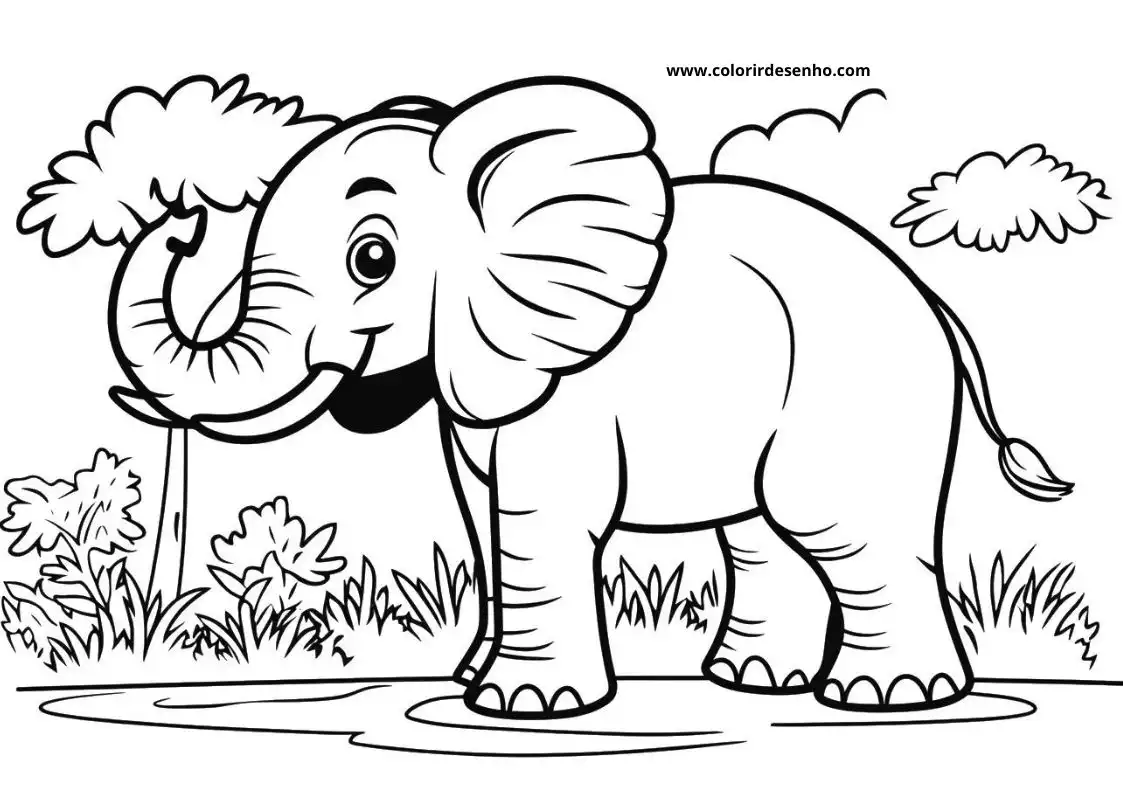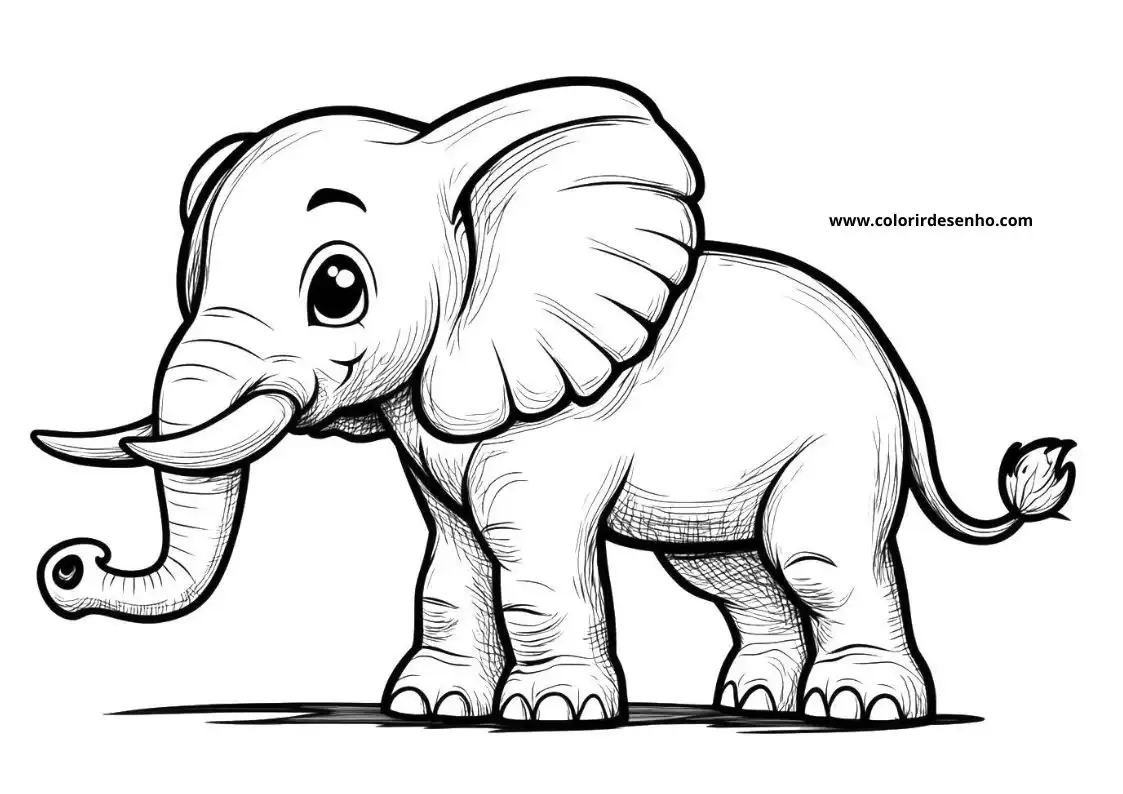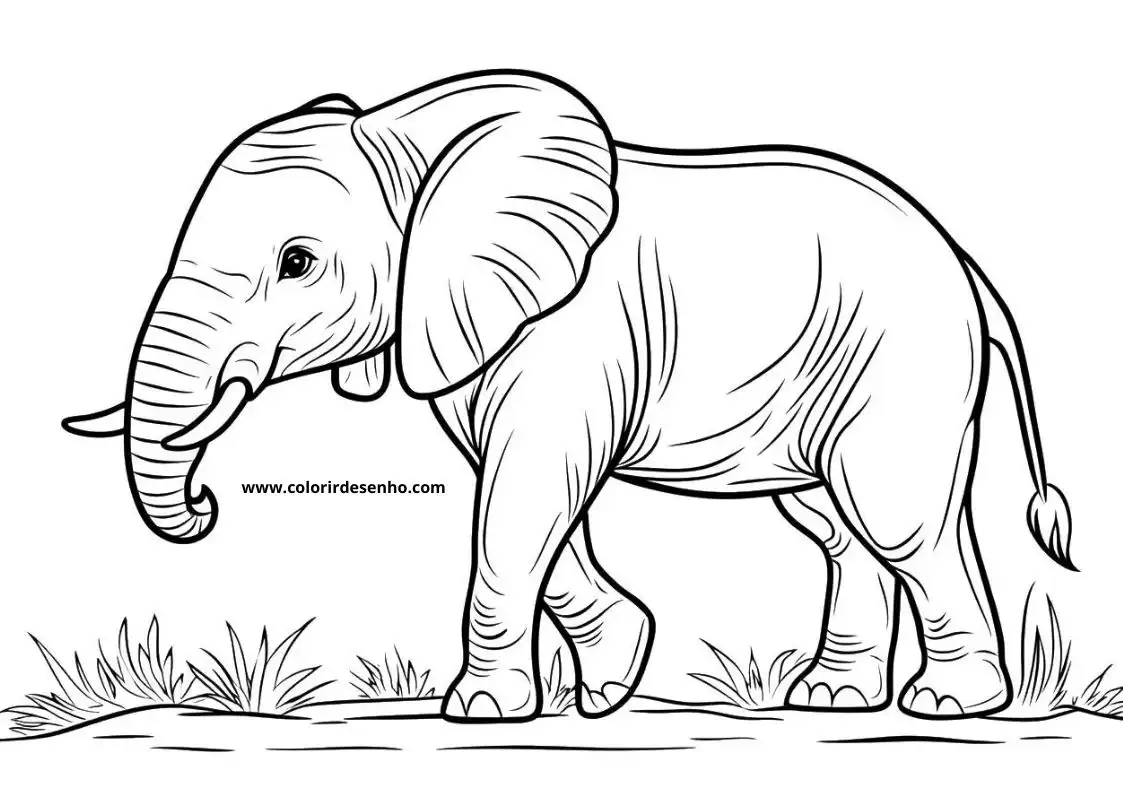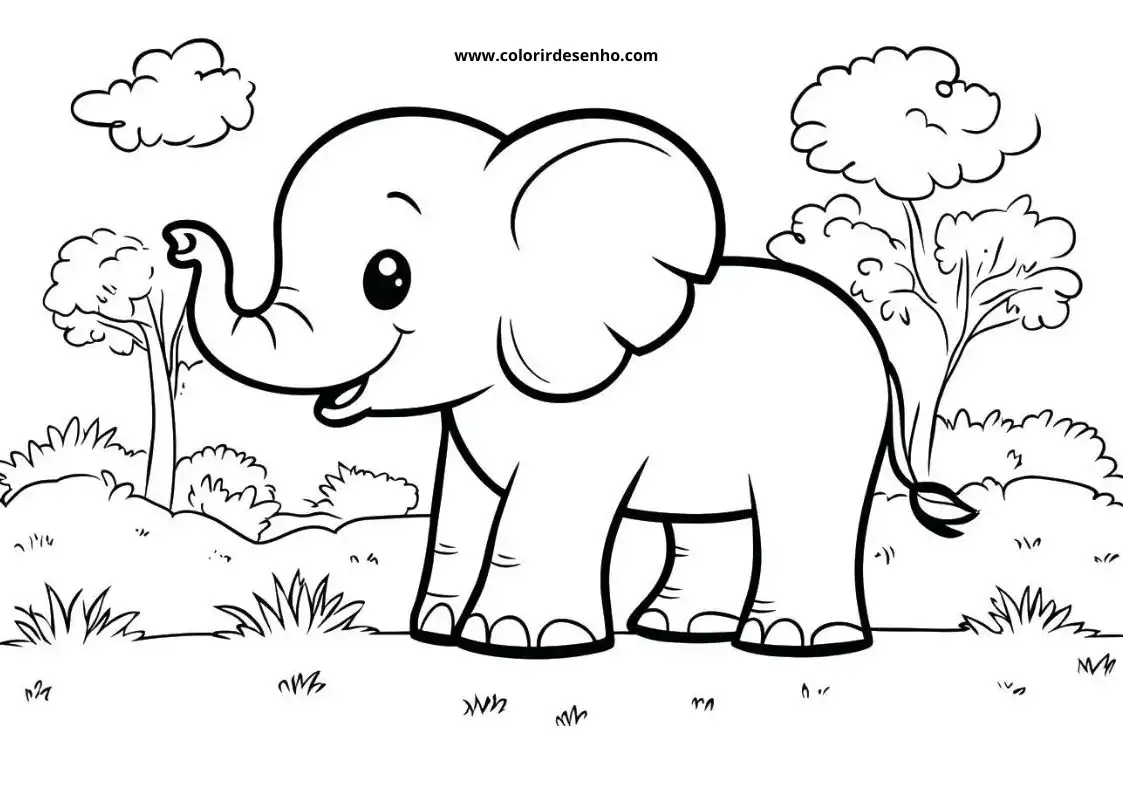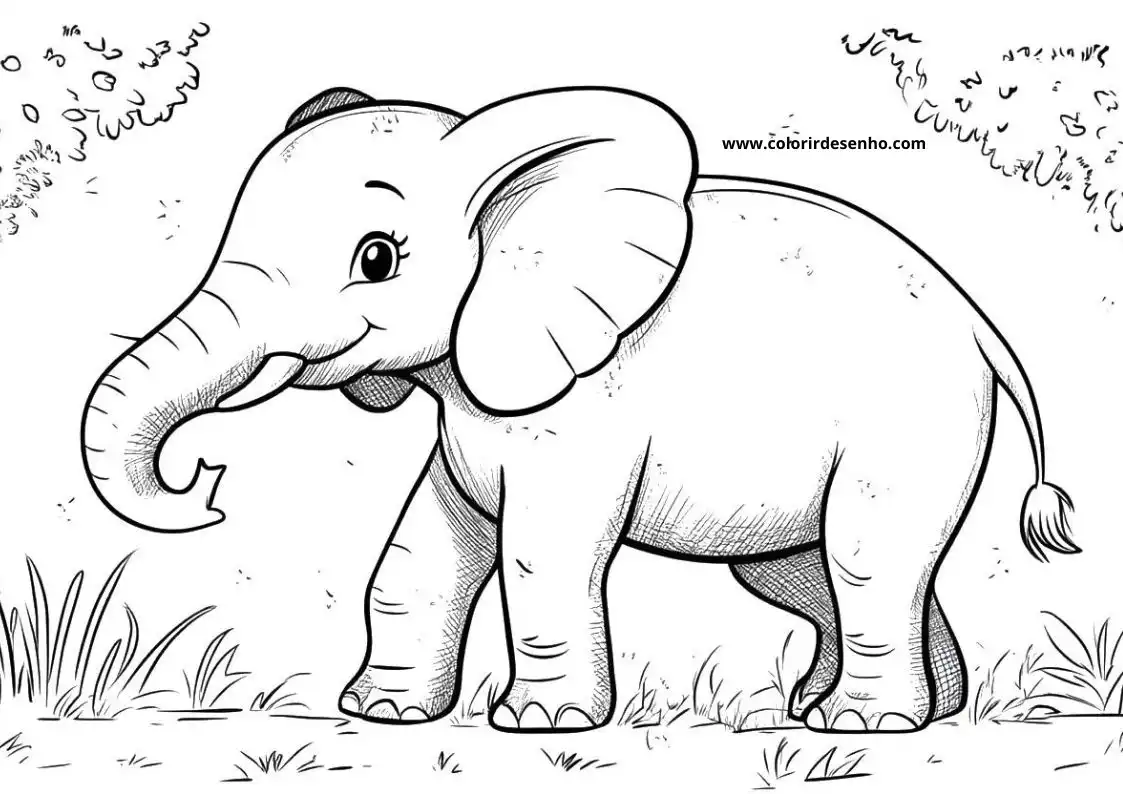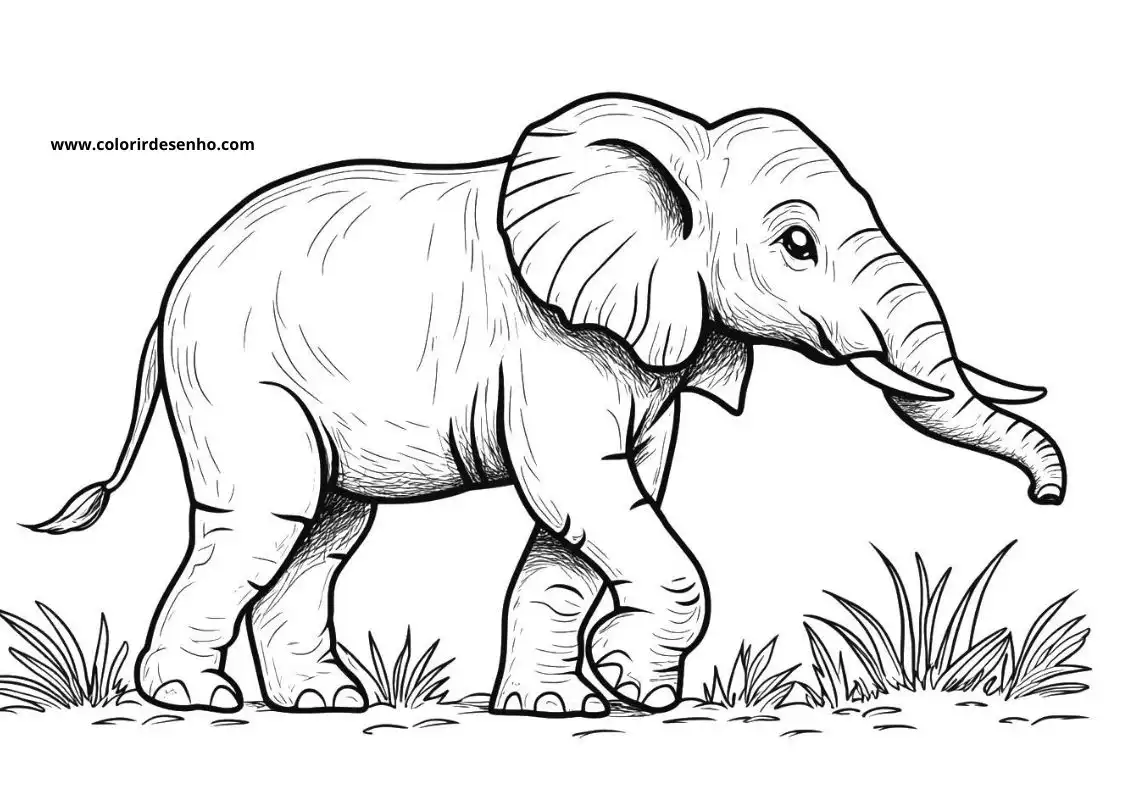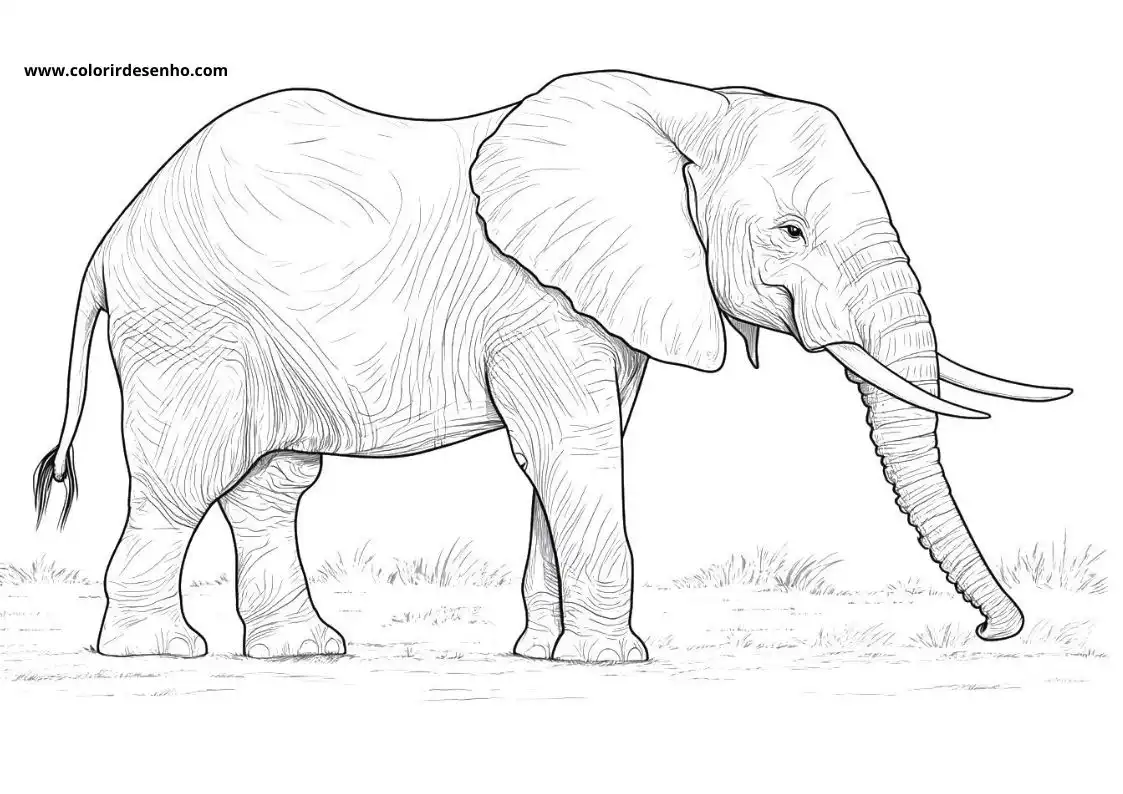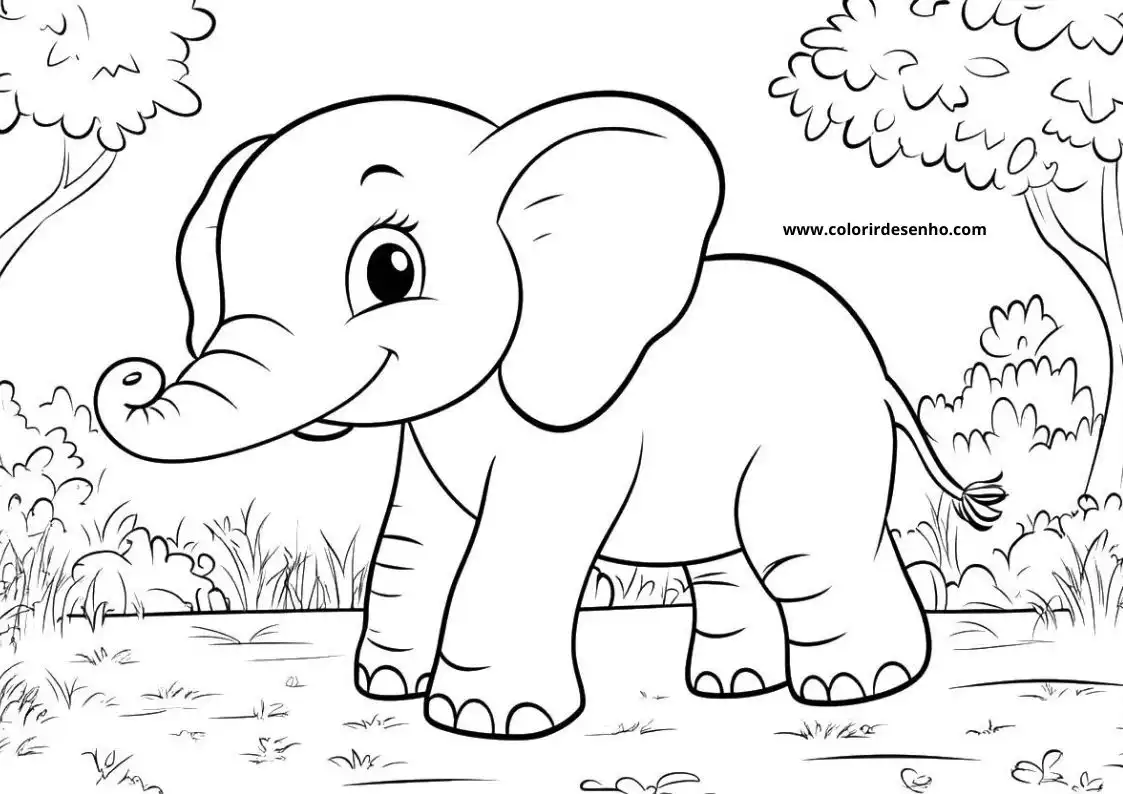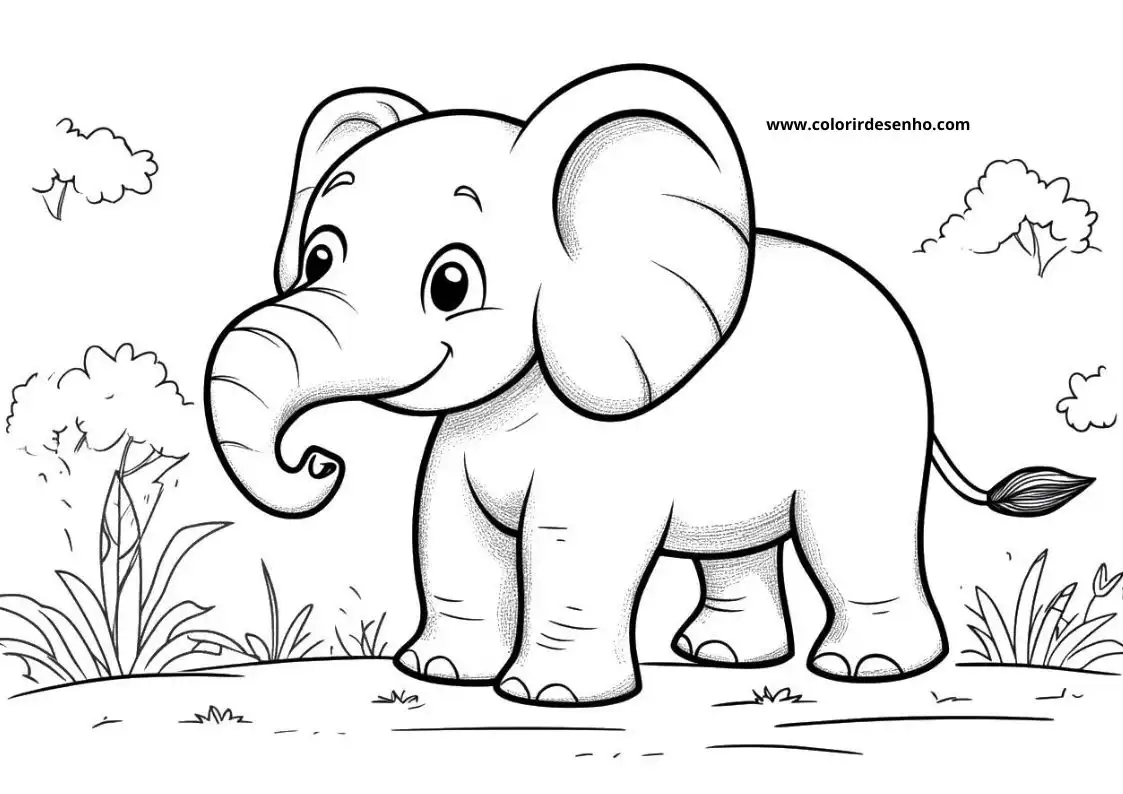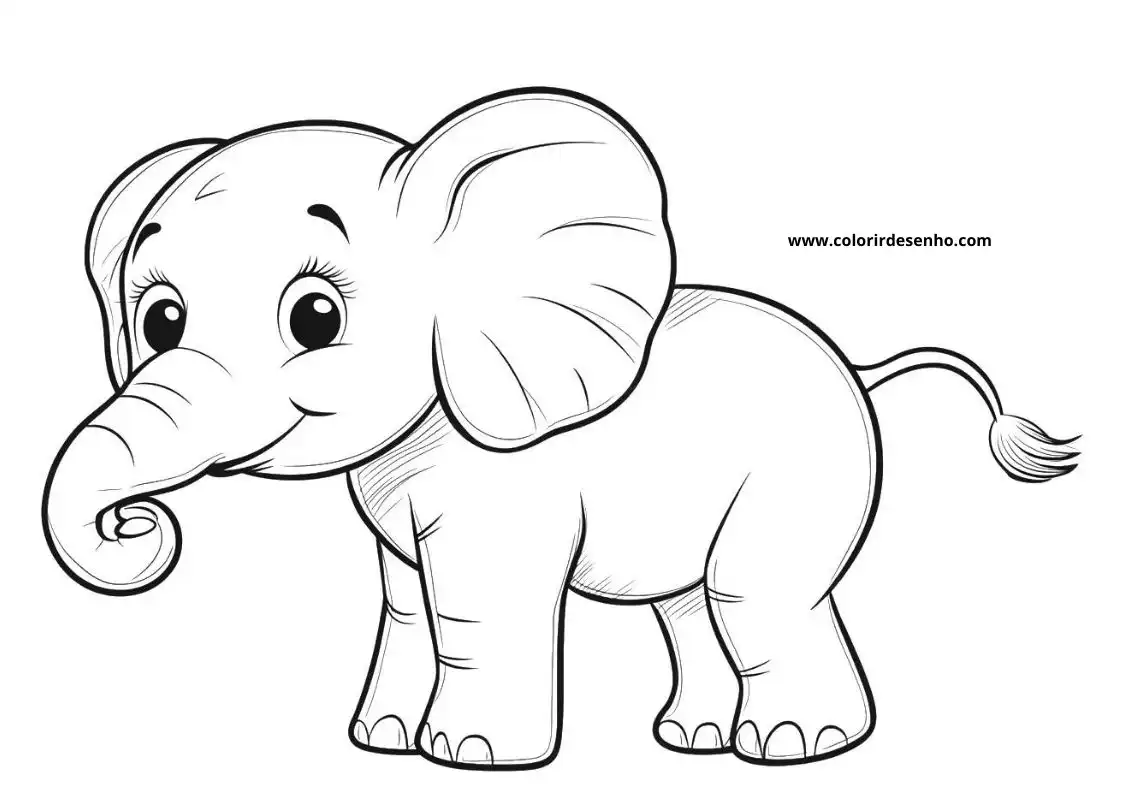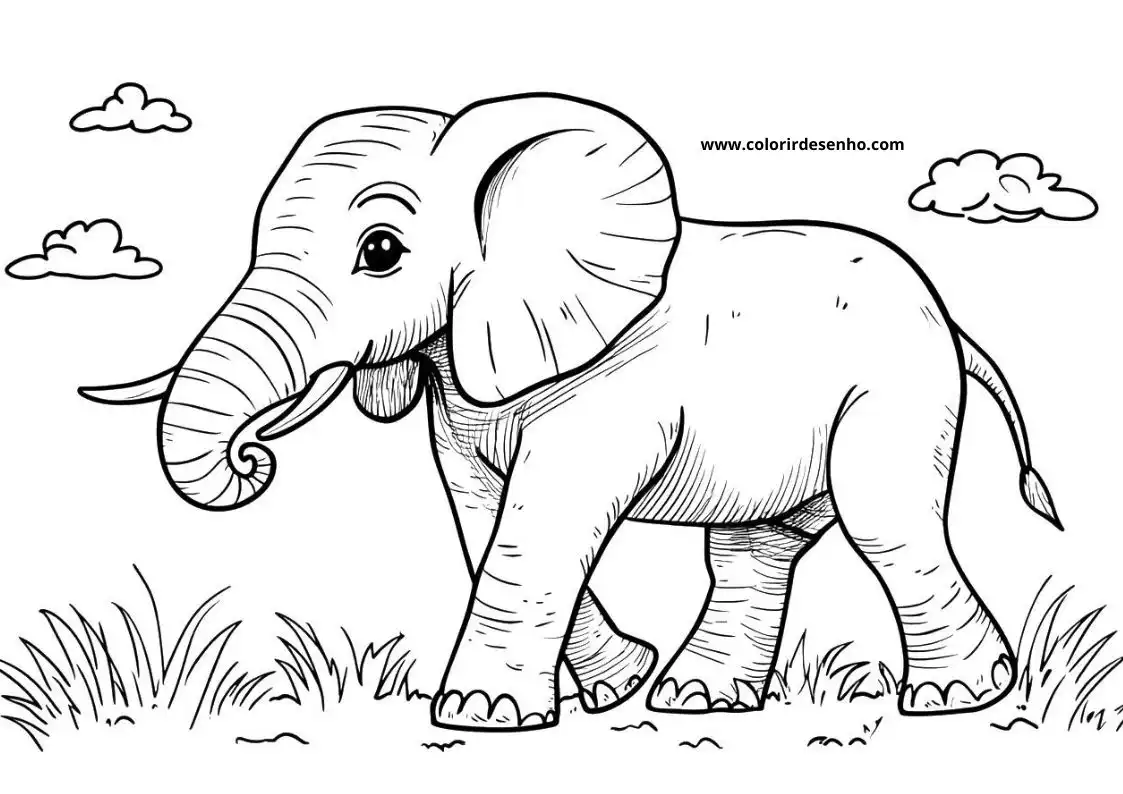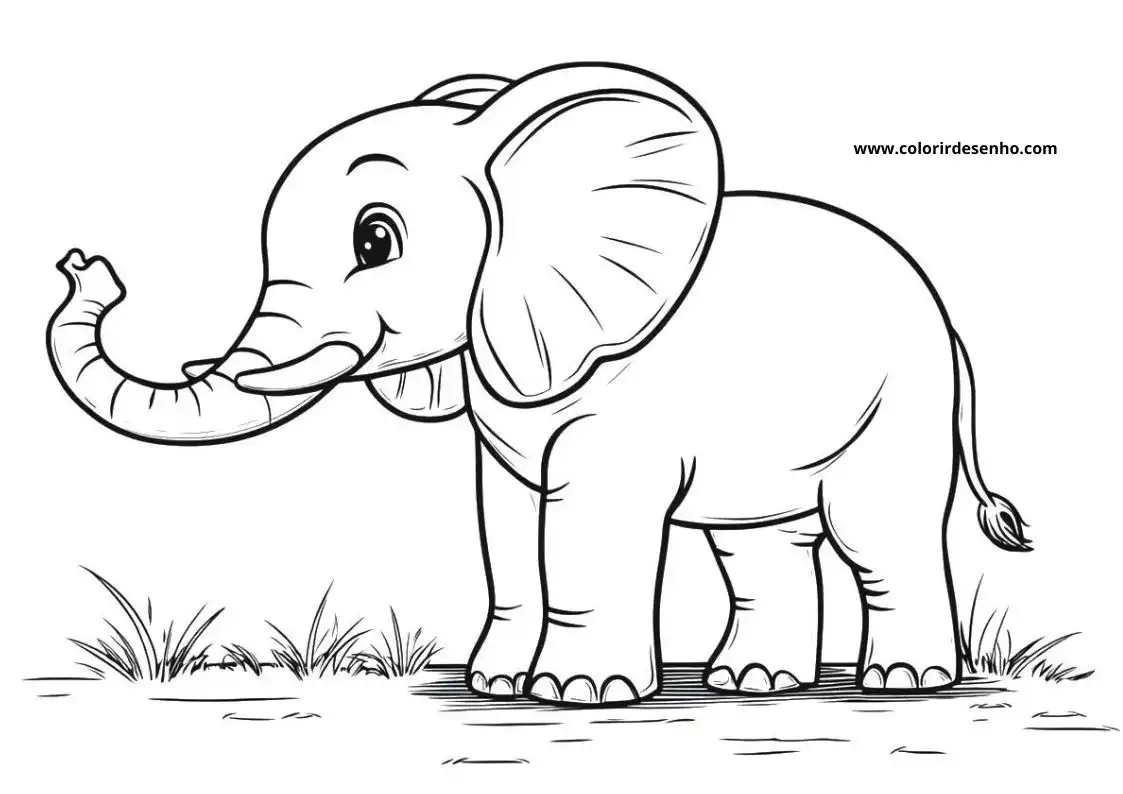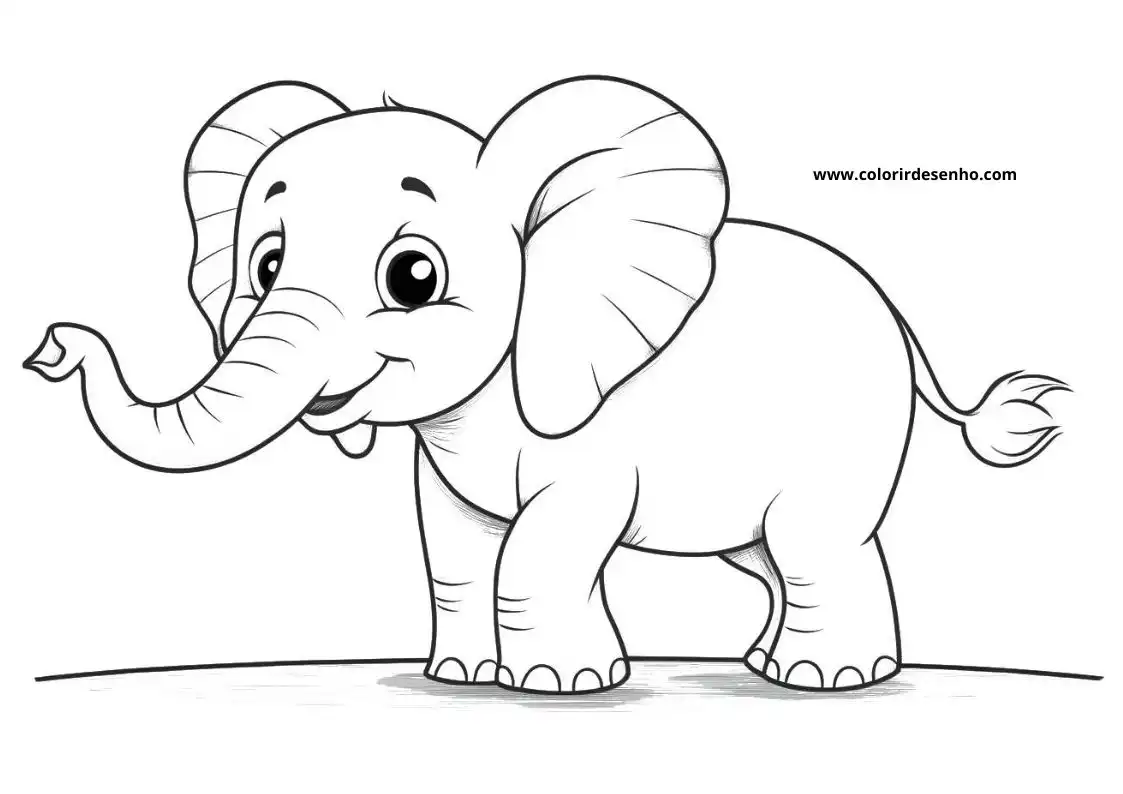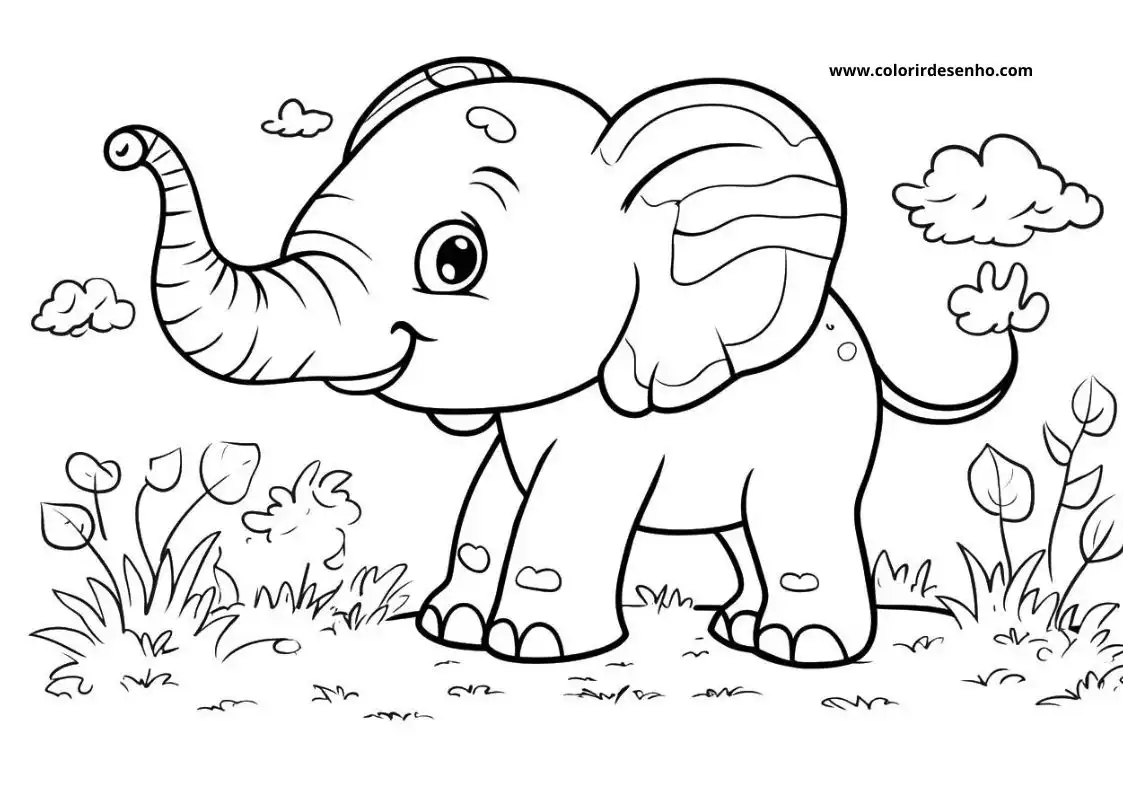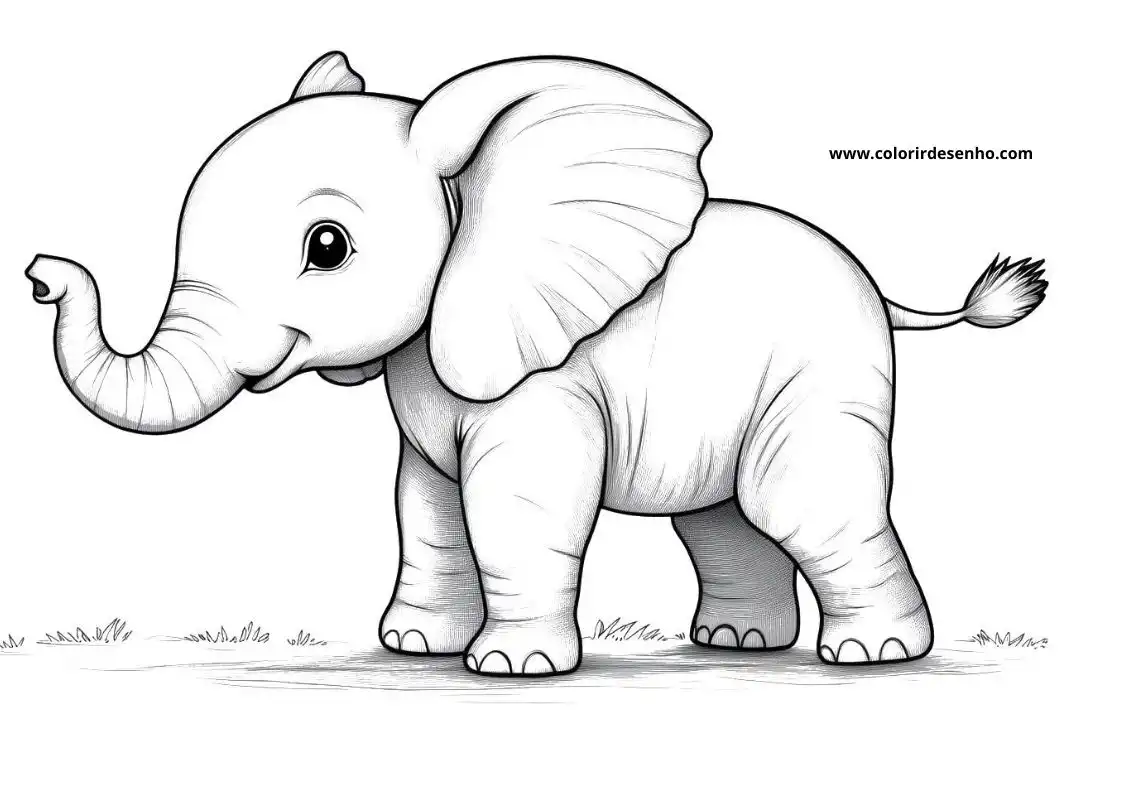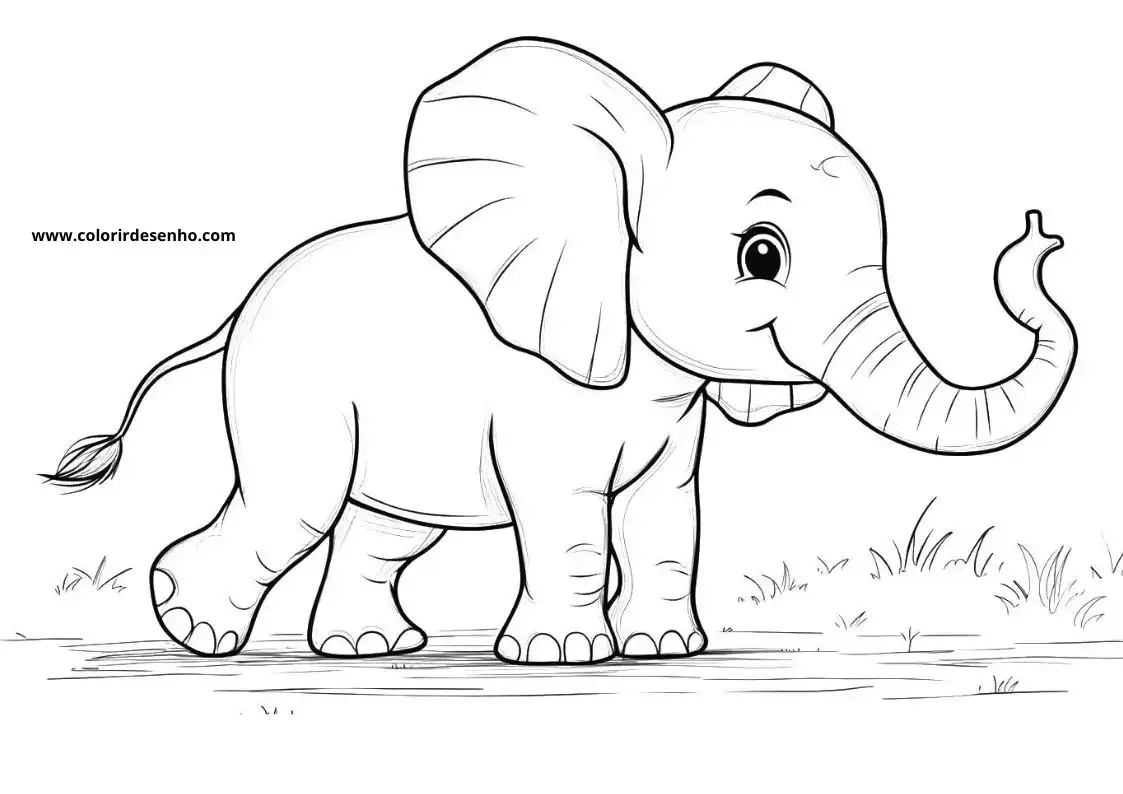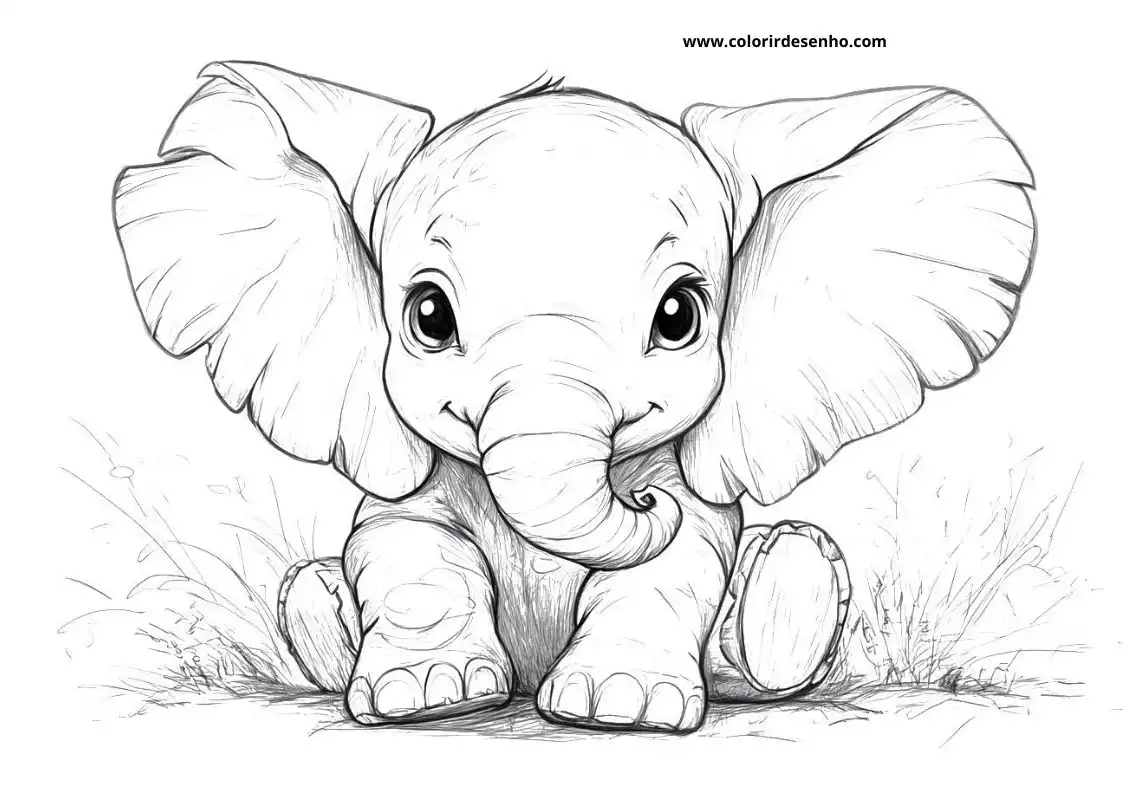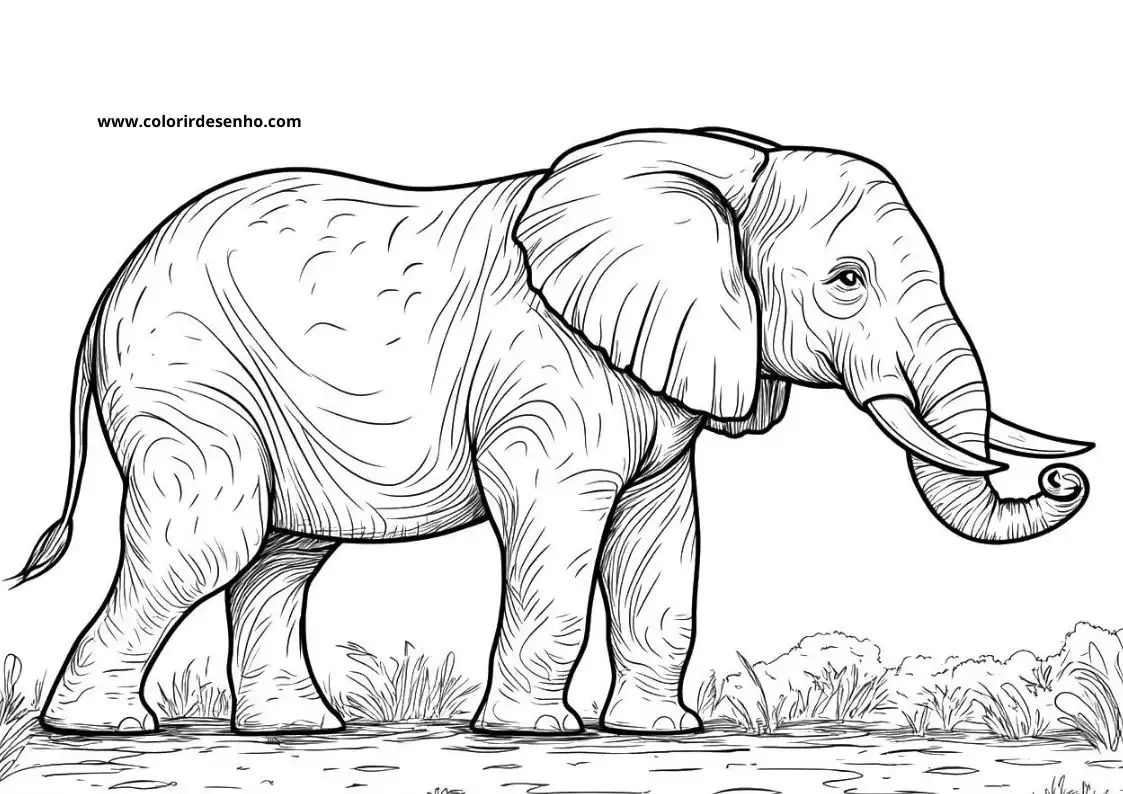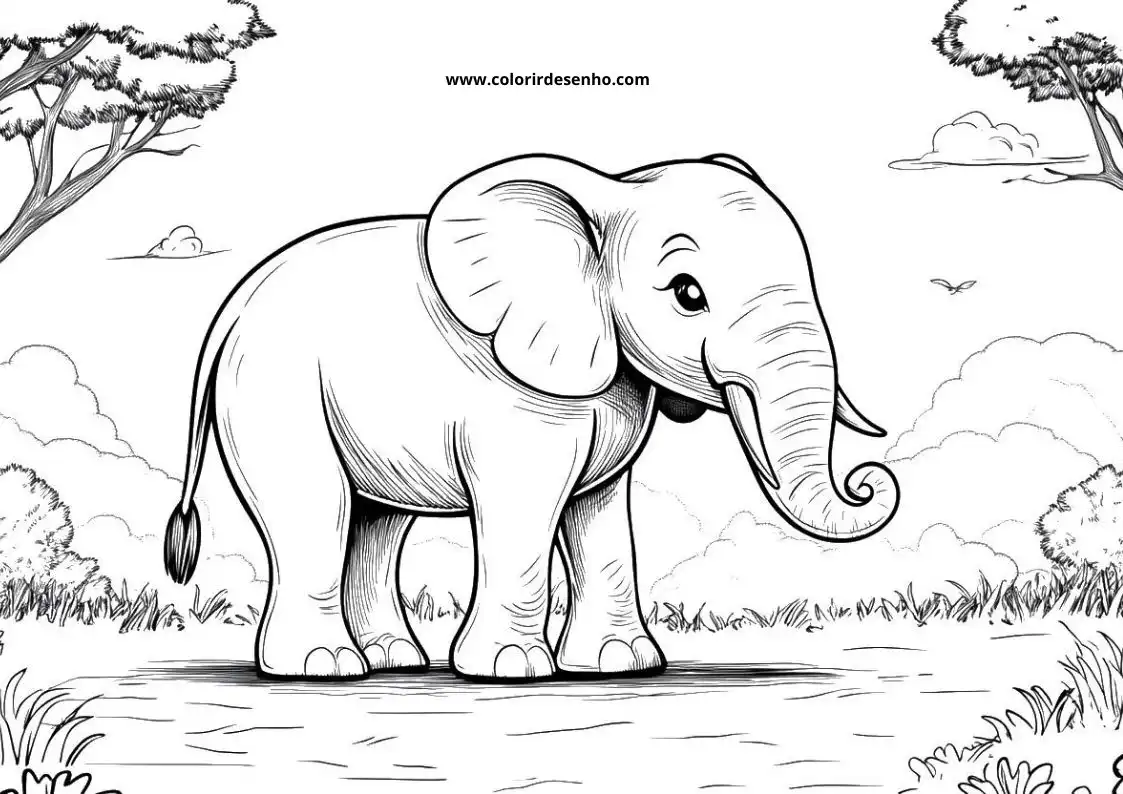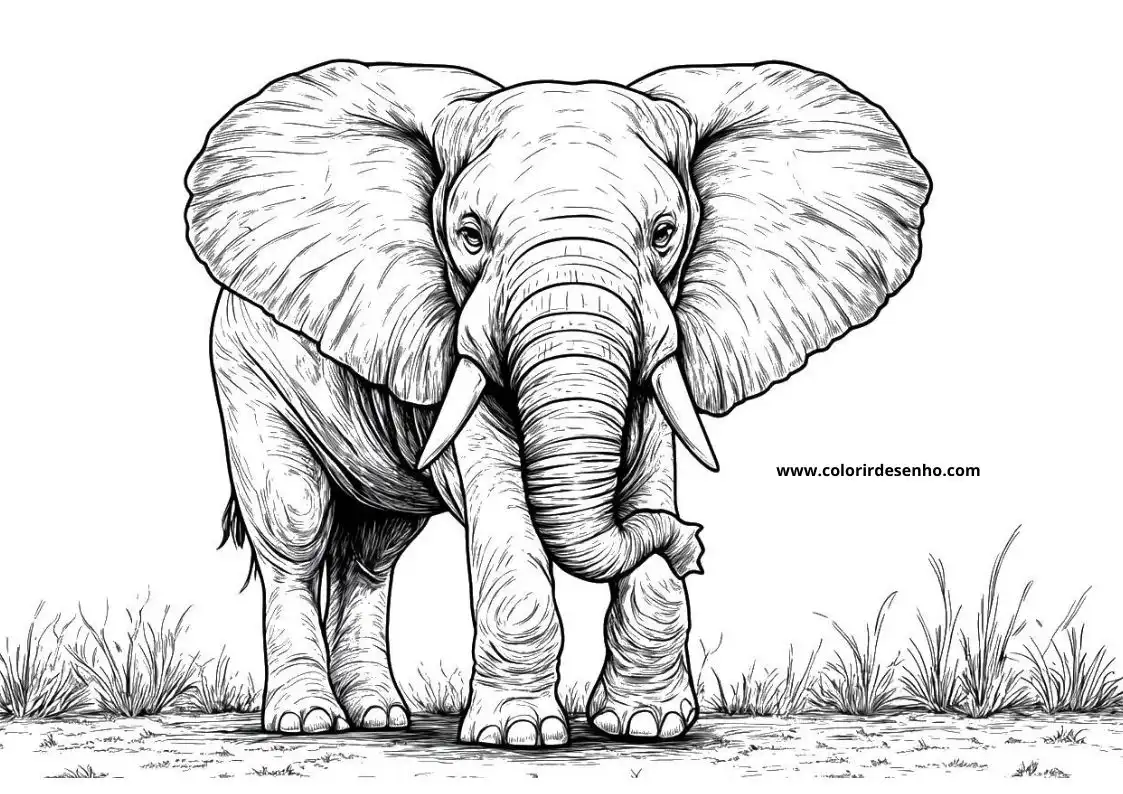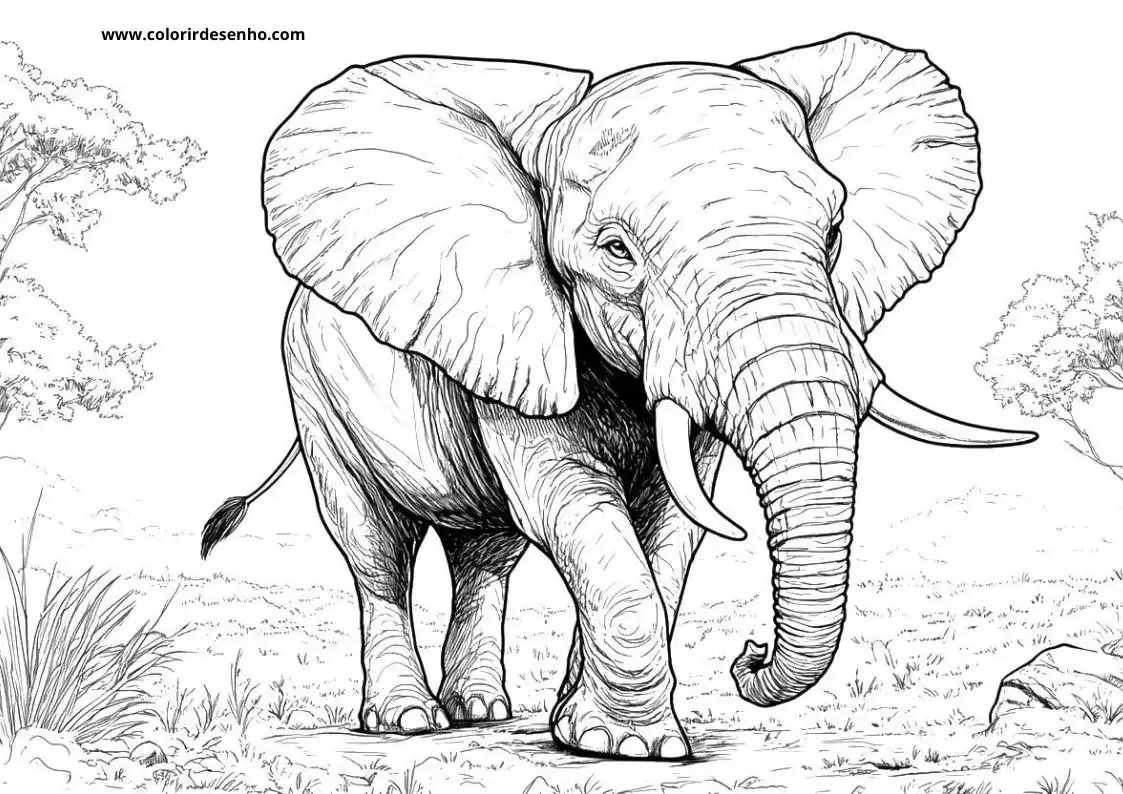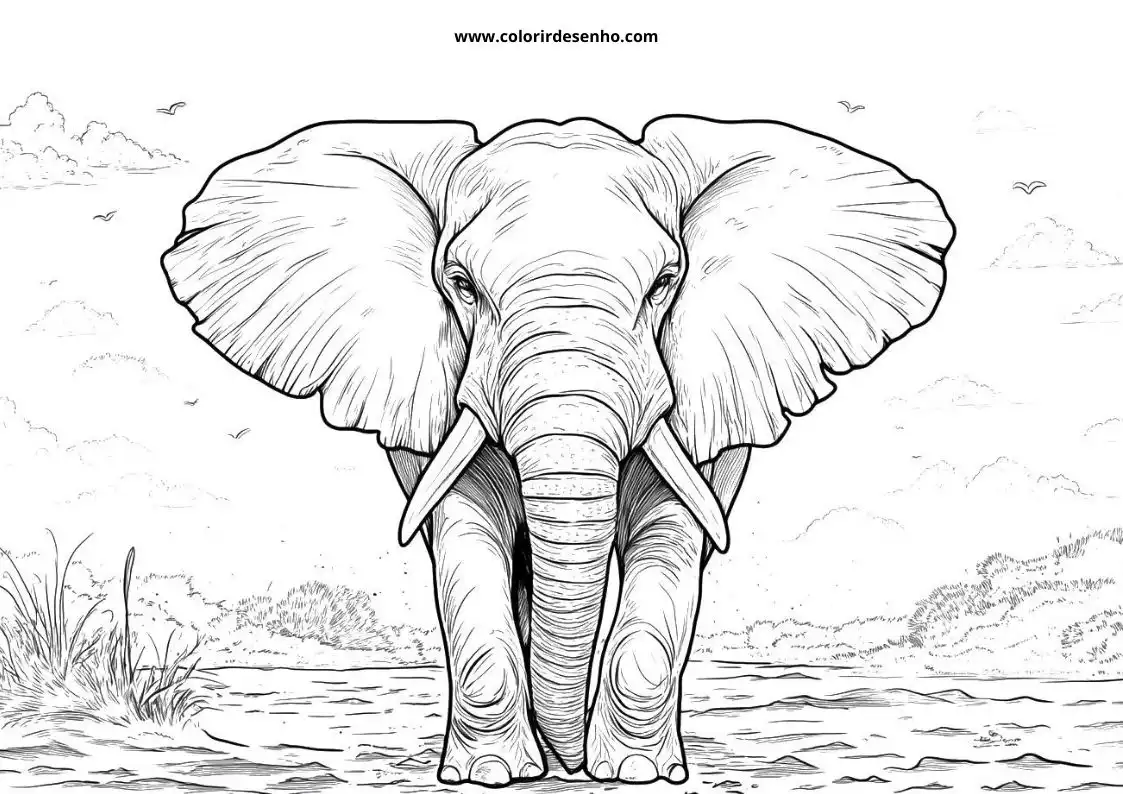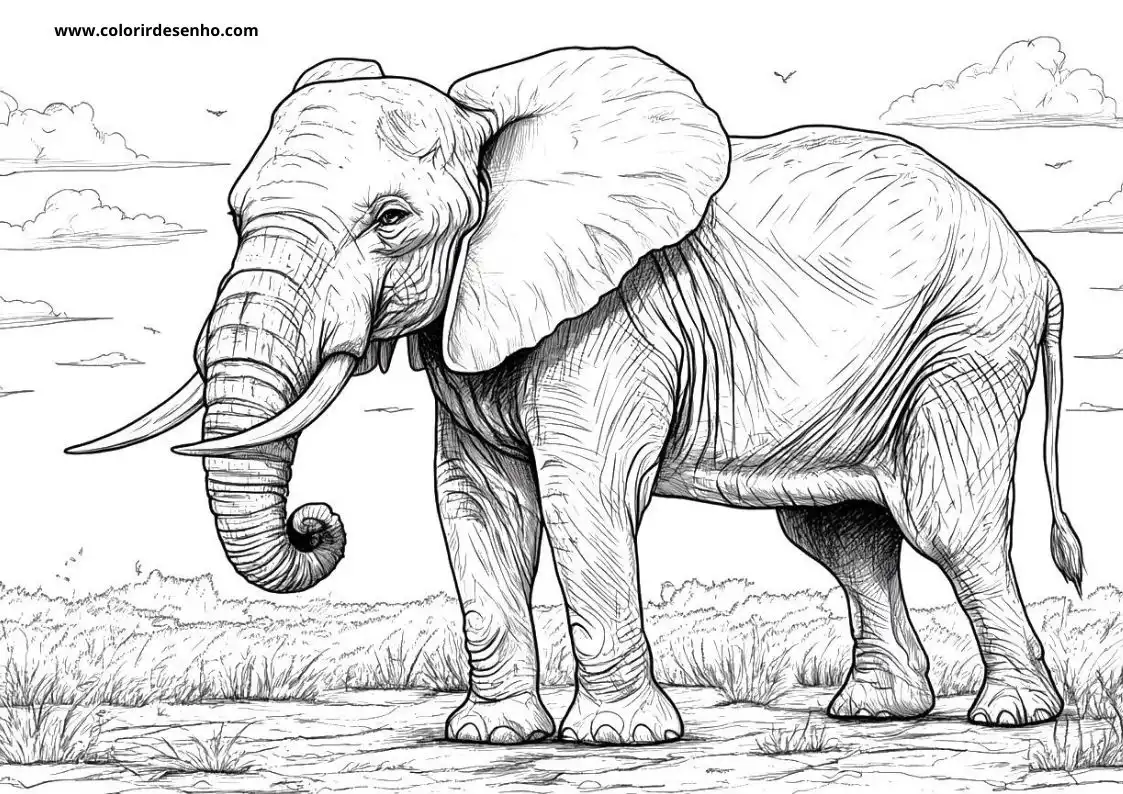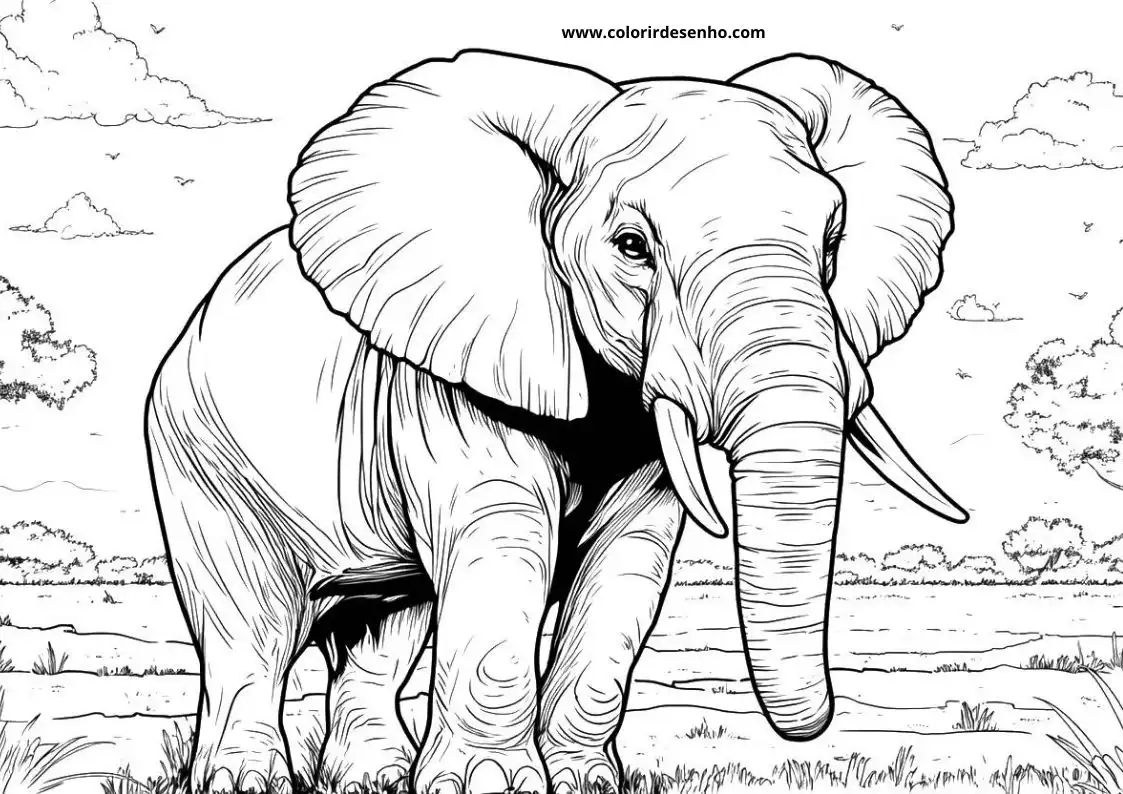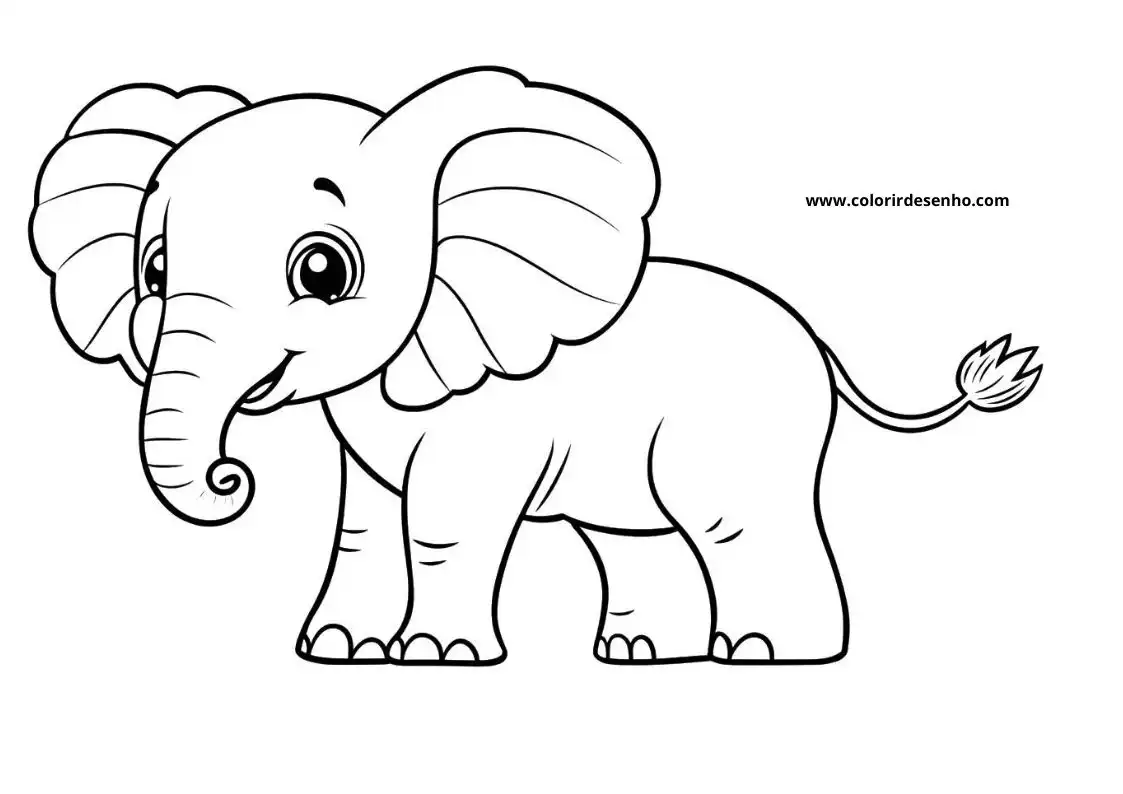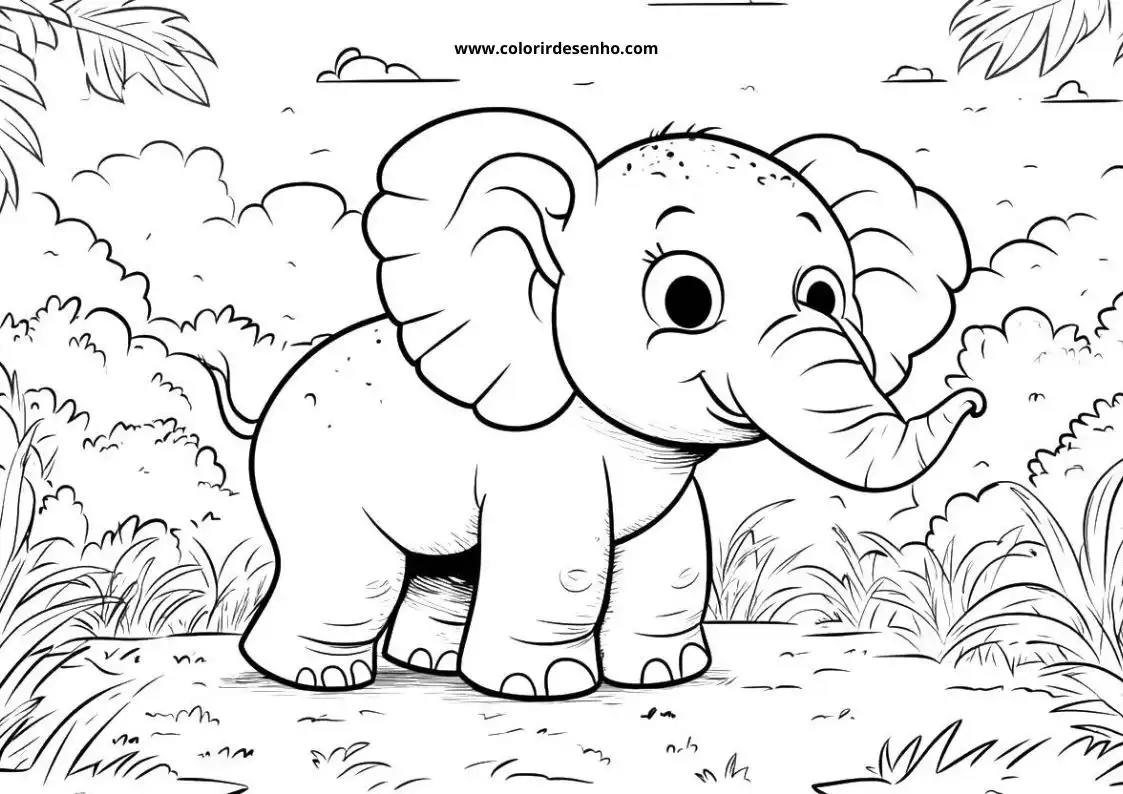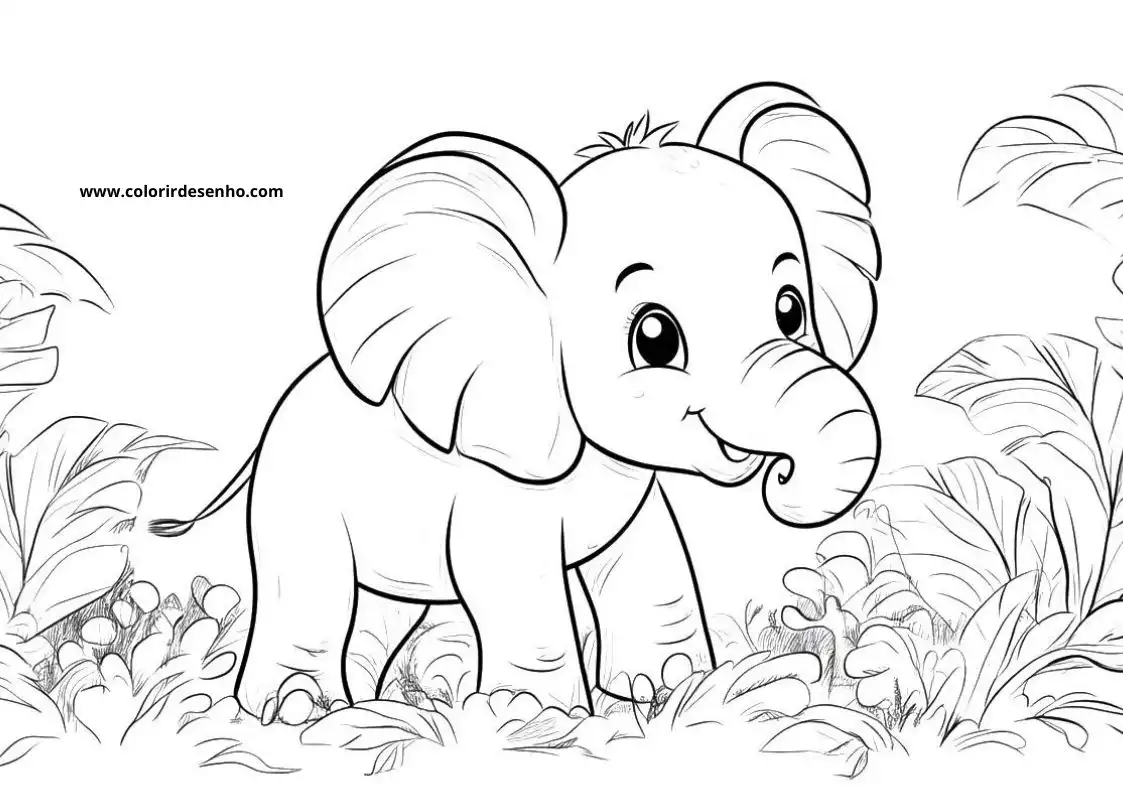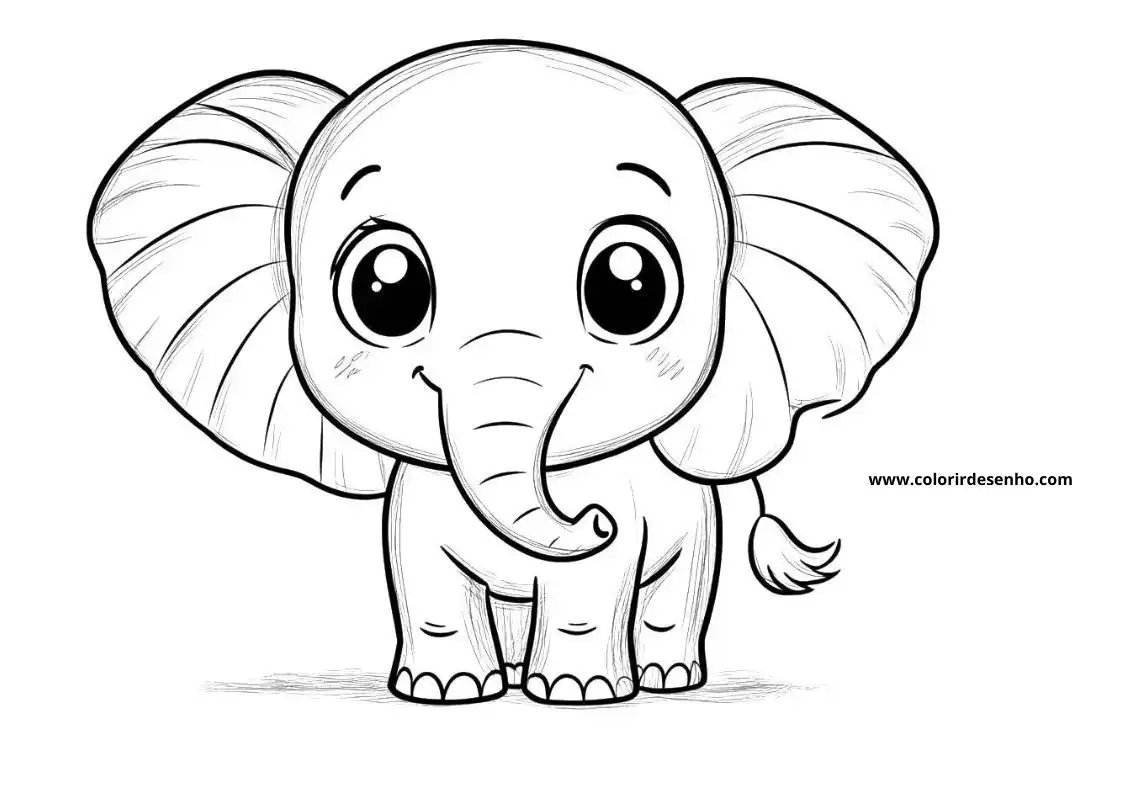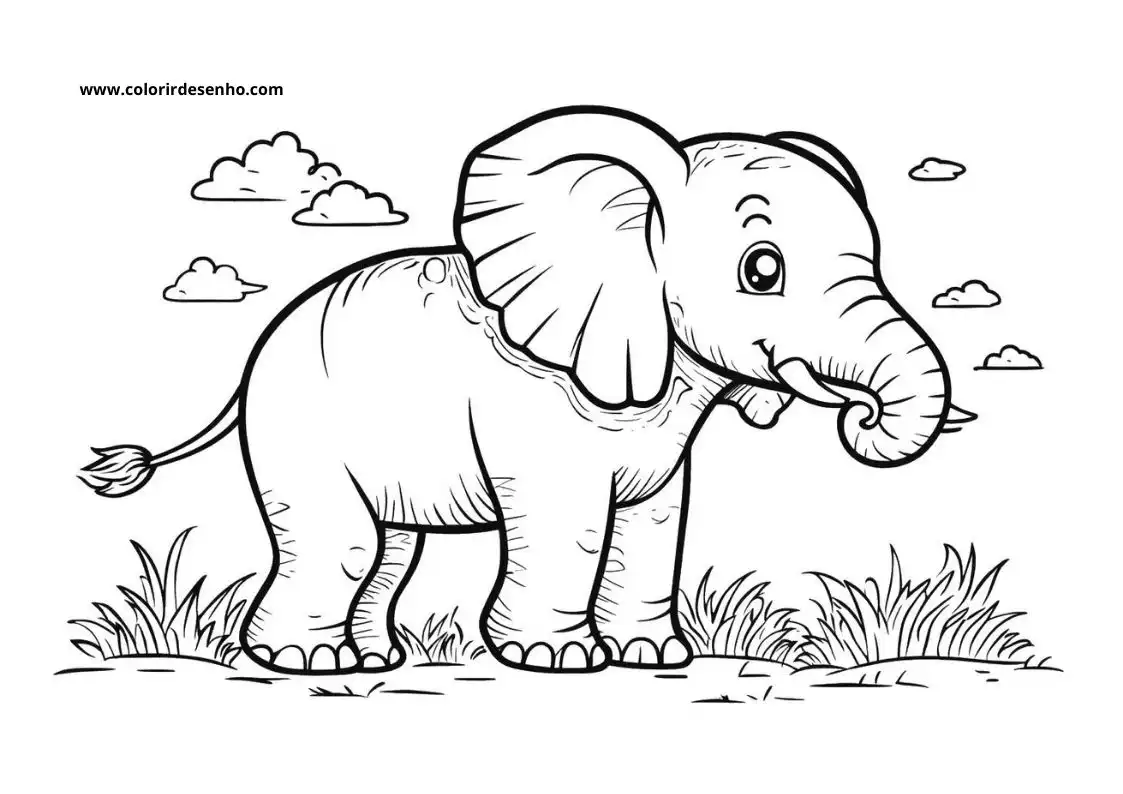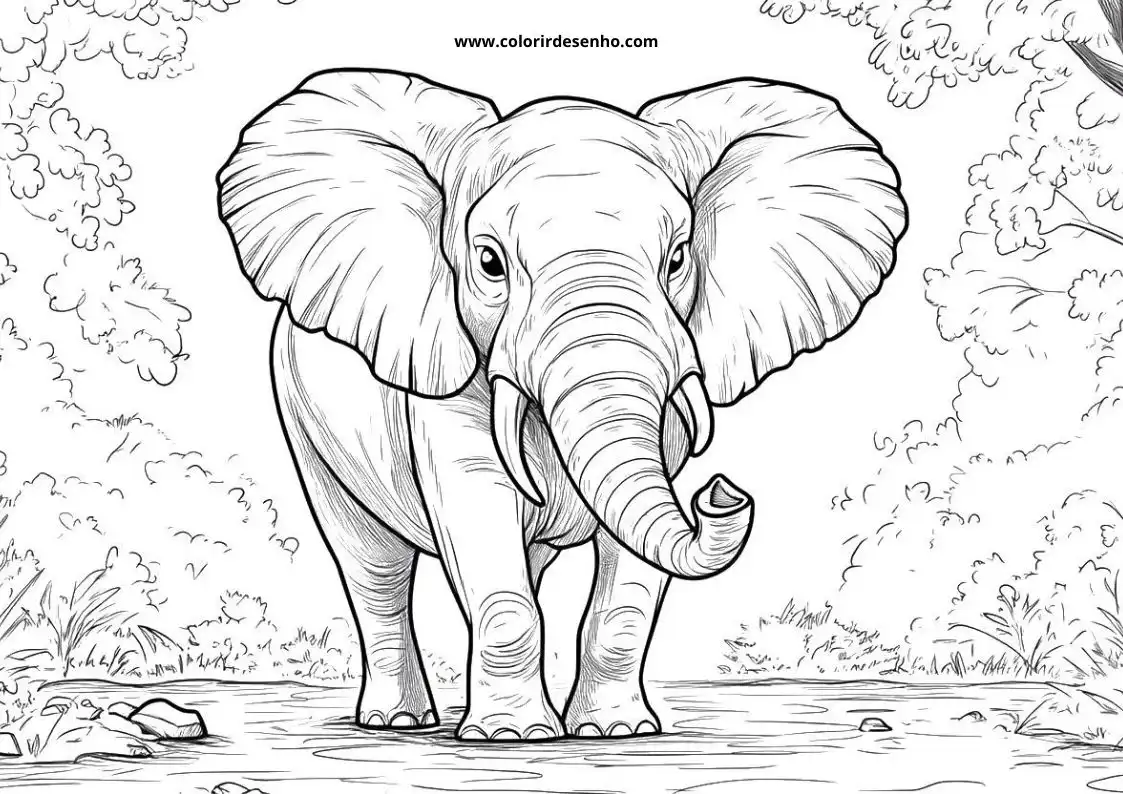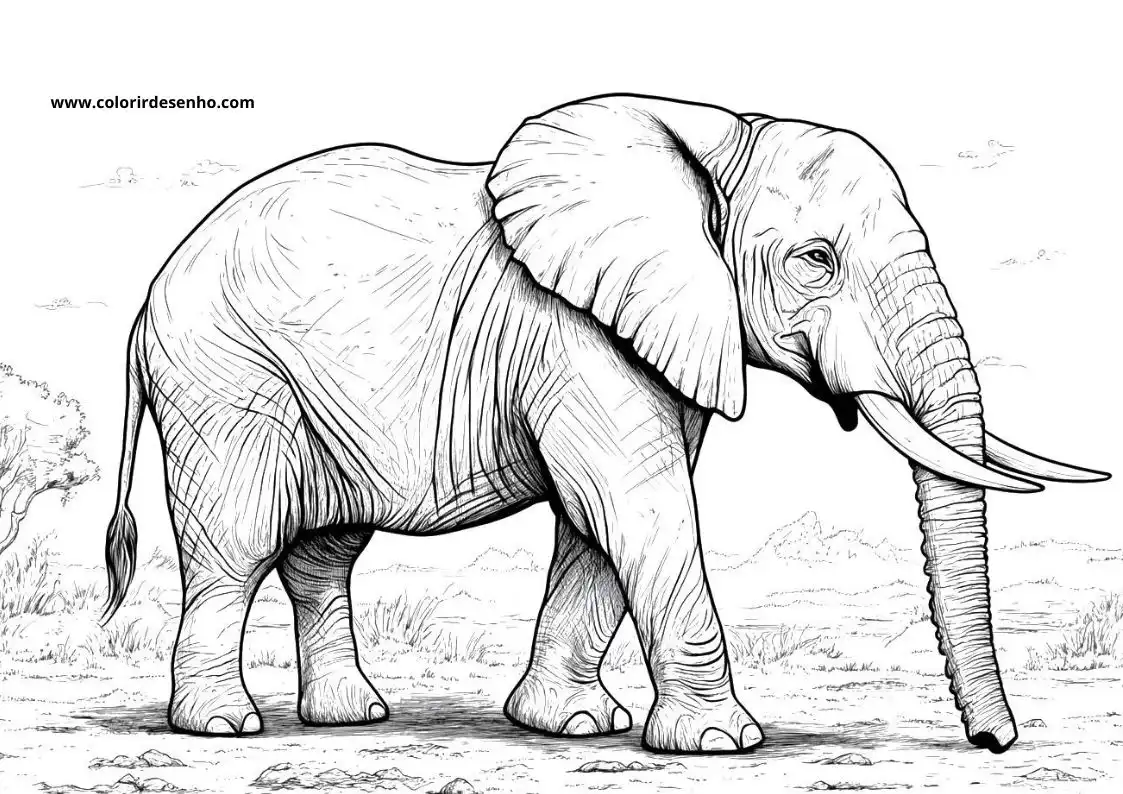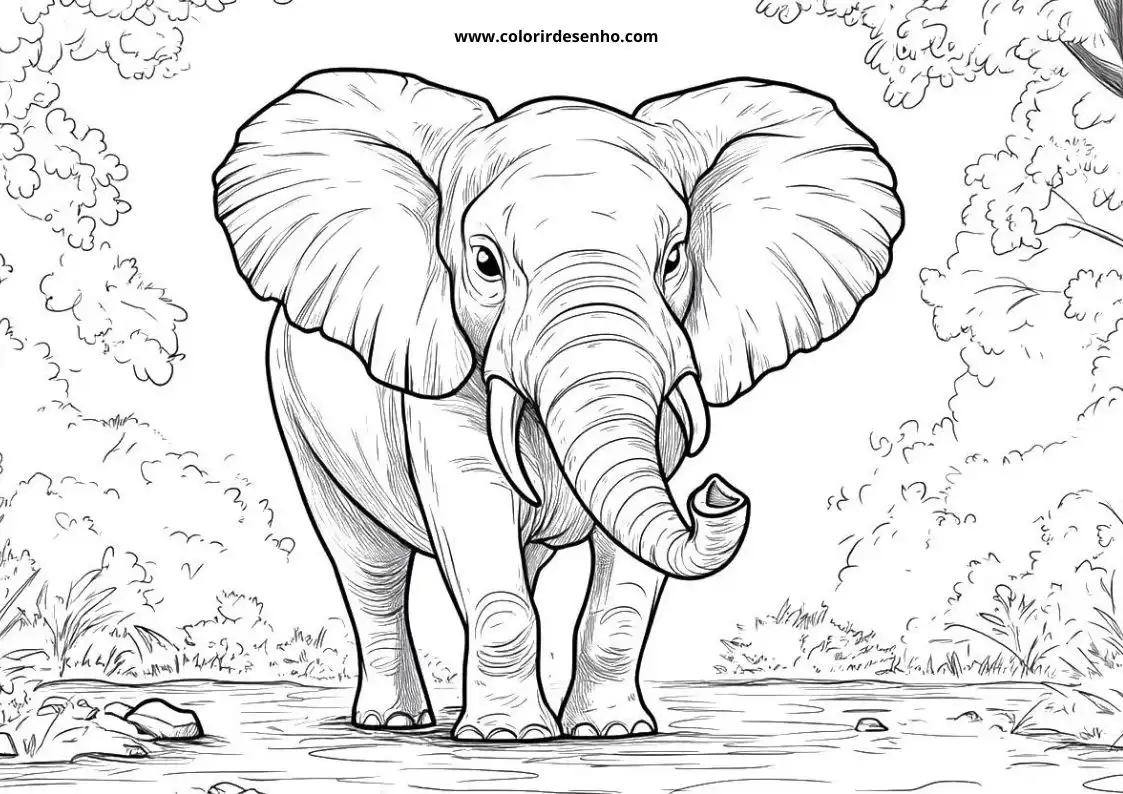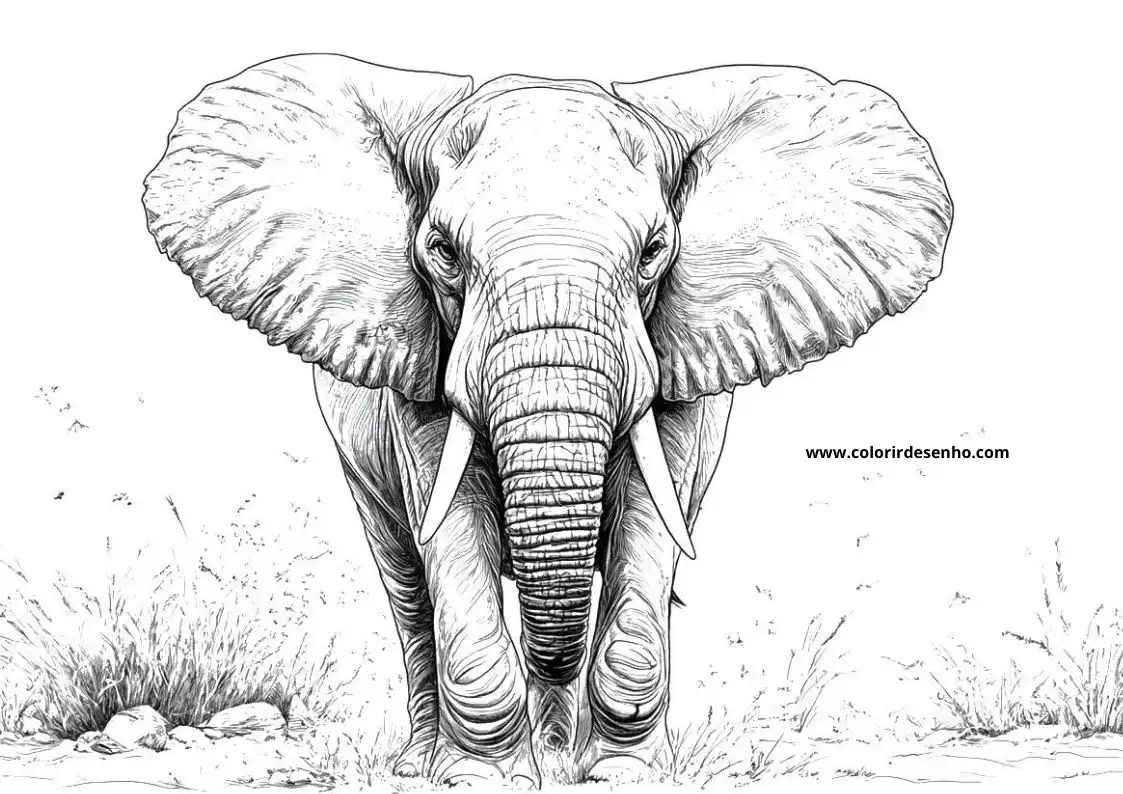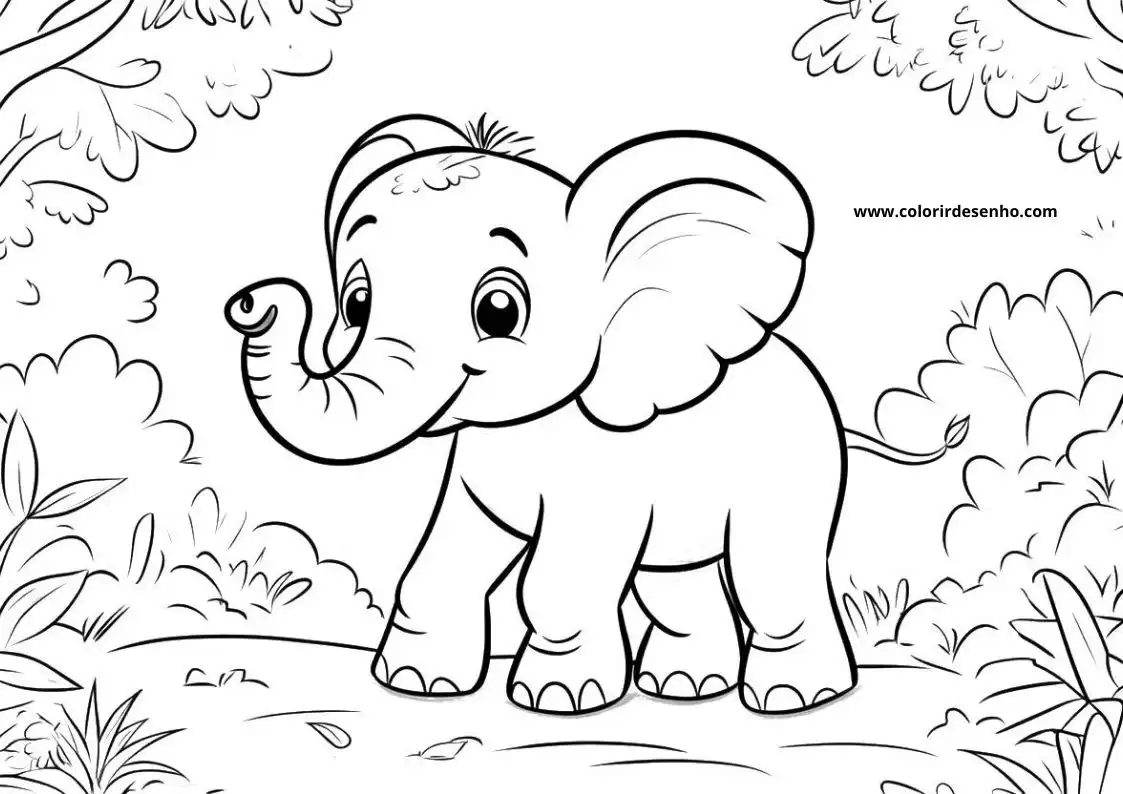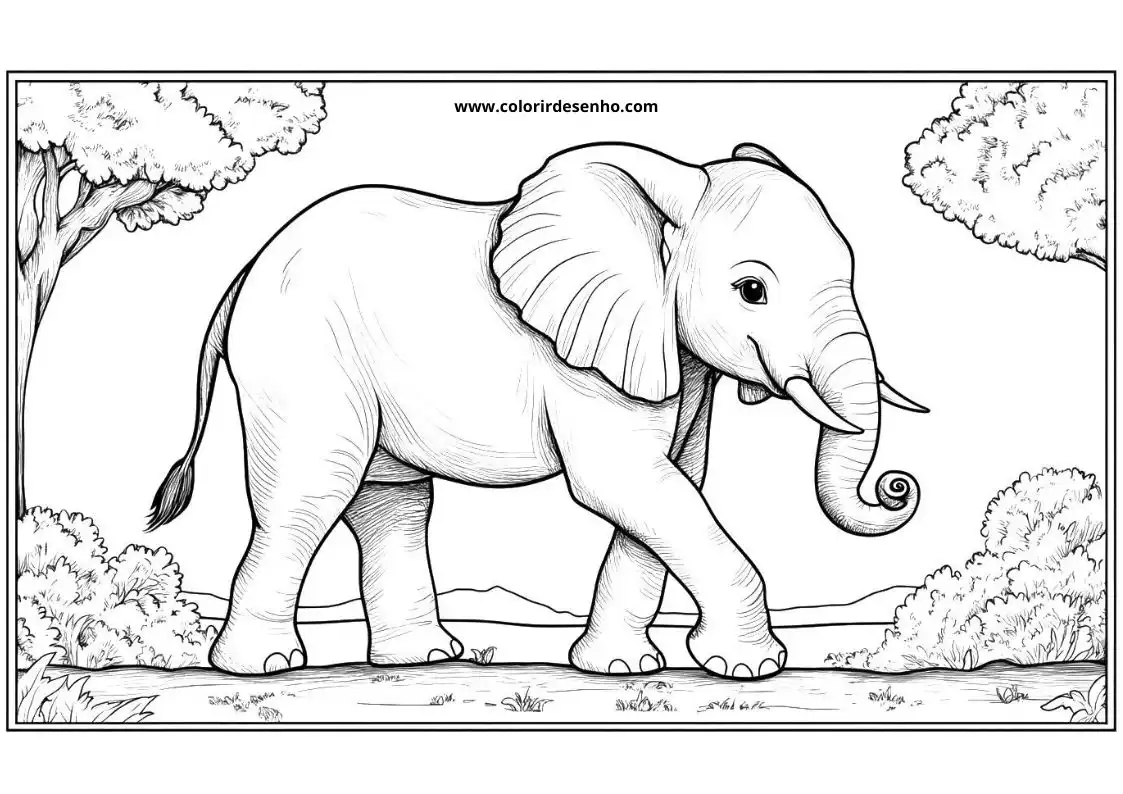Elephant Coloring Pages - 218 Elephants to Color and Learn
Elephant Coloring Pages are a fascinating way to explore your love for these gentle giants. This article presents a collection of 218 elephant coloring pages to print, providing hours of fun and creativity for you and your kids. If you’re looking for activities that combine learning and entertainment, these elephant to color pages are the perfect choice!
Free Printable Elephant to Color: Explore and Learn
Elephant Coloring Pages are not just entertaining; they’re also a great educational tool! If you’re searching for a free printable elephant to color, you’re in the right spot. Below, you’ll find a variety of drawings that are not only fun but also offer an excellent opportunity to learn more about these incredible animals while coloring.
Plus, by choosing an elephant to print, you’re all set to create colorful memories with your little ones. Let’s dive into some cool facts about these magnificent creatures!

THE COLORING PICTURES ARE AT THE BOTTOM OF THE PAGE, WHEN YOU OPEN THE PICTURE, CLICK ON THE SAVE BUTTON ABOVE THE PICTURE.
The Size of Elephants
Elephants are the largest land animals on Earth. An adult elephant can weigh between 6,000 and 13,000 pounds, depending on the species. While the African elephant is the largest, the Asian elephant is slightly smaller but still impressive. These giants play a crucial role in their ecosystems, helping to maintain the natural balance.
Their massive size doesn’t hinder their gracefulness. Surprisingly, they can walk silently despite their weight. Their size also means they need to consume large amounts of food, and they spend up to 16 hours a day eating!
The Memory of Elephants
Elephants are known for their exceptional memory. Studies show they can remember people, places, and events for many years. This memory is vital for their survival, as it helps elephants find water sources and food, and avoid dangers.
Their incredible memory also aids in social bonding. Elephants remember family members and friends even after long separations, which strengthens their social structures.
The Role of Elephants in Nature
Elephants play an essential role in maintaining ecological balance. They’re known as “ecosystem engineers” due to their ability to alter their environment. Here are some ways elephants influence the environment.
Creating Pathways
Elephants have an incredible ability to create paths through dense vegetation. This allows other animal species to access areas that would otherwise be unreachable. These paths also help in seed dispersal, which is vital for plant regeneration.
By breaking down thick brush and small trees, elephants open up areas, allowing sunlight to reach the ground and new plants to grow. This process promotes biodiversity in their habitats.
Impact on Flora
Besides opening paths, elephants also help control vegetation growth. By feeding on trees and shrubs, they maintain the balance between different types of plants, preventing some species from dominating the area and compromising biodiversity.
Their feeding habits help shape the landscape, creating a mosaic of different habitats that support a wide range of wildlife.
The Social Behavior of Elephants
Elephants are highly social animals with complex social structures. They live in family groups called herds, led by an experienced matriarch. The social behavior of elephants is remarkable and includes several interesting practices.
Elephant Communication
Elephants use a variety of methods to communicate, including sounds, gestures, and even vibrations. They can emit low-frequency sounds that travel long distances, allowing them to communicate with other elephants far away. These sounds are important for keeping the herd together and coordinating activities.
They also use body language, such as ear flapping and trunk movements, to express emotions and intentions.
Caring for the Young
Elephants are known for their strong maternal instincts and care for the young. Mother elephants spend a lot of time nurturing and protecting their calves, and other females in the herd also help raise the youngsters. This social behavior is fundamental for the survival and development of the calves.
The communal care ensures that the calves learn essential survival skills and strengthens the bonds within the herd.
The Importance of Elephant Conservation
Unfortunately, elephants face several threats due to human activity, including habitat loss and illegal hunting. The conservation of elephants is crucial to ensure that these majestic creatures continue to thrive in their natural habitats. Here are some important initiatives and efforts for elephant preservation.
Protecting Habitats
Conservation organizations work to protect elephant habitats by establishing reserves and national parks. These efforts are fundamental to ensure elephants have access to safe and adequate areas to live and feed.
By preserving large areas of wilderness, we help maintain the natural ecosystems that elephants and countless other species depend on.
Fighting Illegal Hunting
Illegal hunting of elephants for their tusks, such as ivory, is a significant threat. The international community is committed to combating illegal trade and promoting laws that prohibit hunting and the trade of elephant products. Awareness and education also play an important role in protecting these animals.
Supporting legislation and enforcement efforts helps reduce poaching and the demand for ivory products.
How Elephants Are Portrayed in Art
Elephants are often represented in art and popular culture. They symbolize wisdom, strength, and majesty in many cultures around the world. Below are some examples of how elephants appear in art and culture.
Elephants in Eastern Culture
In Eastern culture, the elephant is a symbol of good luck and prosperity. In many Asian countries, the elephant is represented in sculptures, paintings, and decorations. The four-armed elephant, known as “Ganesha,” is especially revered as the god of wisdom and remover of obstacles.
Elephants are also featured in traditional ceremonies and festivals, highlighting their cultural significance.
Elephants in Cinema
Elephants also have a significant presence in cinema and media. Movies and documentaries often feature elephants in their stories, highlighting their intelligence and fascinating behavior. From children’s films to wildlife documentaries, elephants are frequently celebrated as impressive protagonists.
Their appearances in media help raise awareness about their plight and the importance of conservation.
The Life of Elephants in Different Ecosystems
Elephants inhabit a variety of ecosystems, from open savannas to dense forests. Each environment presents unique challenges and opportunities for these majestic animals. Let’s take a look at how elephants adapt to different types of habitats.
Elephants in Savannas
In the African savannas, elephants are often found in large herds, enjoying the abundance of vegetation and water. They play a crucial role in maintaining the ecological balance by controlling the growth of trees and shrubs, creating open areas that benefit other animal species.
Their movements across the savanna also aid in seed dispersal, promoting plant diversity.
Elephants in Tropical Forests
Asian elephants, on the other hand, are more common in tropical and subtropical forests. In these environments, they help disperse seeds through their dung, contributing to vegetation regeneration. Forests offer elephants a constant source of food and shelter, as well as a cooler and more humid environment.
Their presence in forests is essential for the health of these ecosystems.
Elephants' Life Cycle
The life cycle of elephants is quite fascinating and involves a series of complex processes. Here’s an overview of how elephants grow and develop throughout their lives.
Elephant Gestation
Elephants have one of the longest gestation periods among mammals, lasting about 22 months. This long period is necessary to ensure the calf is born fully developed and ready to face the world. After birth, calves are extremely dependent on their mothers and the herd for protection and nourishment.
The extended family unit provides a supportive environment for the calf’s growth.
Life Expectancy
Elephants have an impressive life expectancy, which can reach up to 60-70 years in the wild. However, the lives of elephants in captivity can be even longer, depending on the conditions and care they receive. Throughout their lives, elephants accumulate vast experience and knowledge, which contributes to their ability to live in harmony with the environment.
Elder elephants play a key role in the herd, guiding and passing on knowledge to younger members.
Elephants and the Impact of Climate Change
Climate change is affecting all aspects of life on Earth, and elephants are no exception. Changes in the climate have a significant impact on elephant habitats and the availability of vital resources like water and food.
Drought and Water Scarcity
With climate change, many regions are experiencing more severe and prolonged droughts. This directly affects the availability of water for elephants, who need large amounts to stay hydrated. Water scarcity can lead to conflicts between elephants and humans, as animals seek water sources near inhabited areas.
Efforts to create sustainable water sources are essential to mitigate these challenges.
Habitat Alteration
Climate change is also altering elephants’ natural habitats. Forests may become less dense, and savannas may change in composition, affecting elephants’ diet and behavior. These factors can force elephants to migrate to new areas in search of resources, which can lead to conflicts with human activities and other species.
Conservation planning must consider these changes to protect elephant populations.
Elephants in Popular Culture
Elephants have a strong presence in popular culture and often appear in books, movies, and other media. Their image is used to convey a variety of messages and feelings.
Elephants in Children's Literature
Many children’s books feature elephants as central characters due to their friendly and charismatic image. Books like “Babar the Elephant” and “Elmer the Patchwork Elephant” are examples of how elephants can be used to teach important values and provide entertainment for children of all ages.
These stories often highlight themes of friendship, diversity, and courage.
Elephants in Media and Advertising
In media and advertising, elephants are often used to attract attention and create an emotional connection with the audience. From logos and mascots to ad campaigns and commercials, elephants are used to symbolize characteristics like strength, intelligence, and kindness.
Their recognizable image helps brands convey trust and reliability.
The Future of Elephants: Challenges and Hopes
The future of elephants depends on our actions and efforts to address the challenges they face. Conservation initiatives are vital to ensure these majestic animals continue to thrive. Here are some of the main challenges and hopes for elephant protection:
The Threat of Habitat Fragmentation
Urban expansion and agriculture have caused fragmentation of elephant habitats, creating islands of vegetation where there was once continuous habitat. This can limit elephants’ access to vital resources and increase the likelihood of conflicts with humans. Creating ecological corridors and protected areas is a promising solution to help elephants move freely between fragmented habitats.
Supporting land-use planning that considers wildlife corridors is essential.
Education and Awareness Initiatives
Education and awareness are powerful tools in protecting elephants. Educational programs that teach about the importance of elephants and the challenges they face can help build public support for conservation. Additionally, awareness campaigns can reduce the demand for elephant products, like ivory, and promote more sustainable practices.
Engaging communities in conservation efforts leads to more effective and lasting solutions.
Projects and Organizations Dedicated to Conservation
Several organizations and projects around the world are working hard to protect elephants and their habitats. Here are some notable examples.
The African Wildlife Foundation
The African Wildlife Foundation (AWF) is an organization dedicated to the conservation of African elephants. They work on various fronts, including habitat protection, anti-poaching efforts, and promoting sustainable management practices. Their efforts help ensure elephants can continue to live and thrive in their natural environments.
By supporting AWF, individuals can contribute to the preservation of wildlife.
The Elephant Family
The Elephant Family is an organization dedicated to protecting Asian elephants and preserving their habitats. They focus on conservation initiatives aimed at protecting elephants from threats like habitat loss and ivory trafficking. The Elephant Family also promotes projects that involve local communities in elephant conservation.
Their community-based approach helps balance human and elephant needs.
The Role of Elephants in Culture and Science
Elephants are not only important from an ecological standpoint but also play a significant role in culture and science. Here are some examples of how elephants influence these fields.
Elephants in Scientific Research
Elephants have been the subject of significant scientific research due to their complexity and intelligence. Studies on their social behavior, communication, and memory have contributed to our understanding of animal intelligence and evolution. These studies help improve conservation strategies and promote greater understanding and respect for elephants.
Research into elephant cognition can also inform efforts to enhance their welfare in captivity.
Elephants as Cultural Symbols
Beyond their presence in books and films, elephants are important symbols in many cultures. They represent wisdom, strength, and longevity, and many traditions and festivals around the world celebrate these animals. For example, the Elephant Festival in Jaipur, India, is an annual celebration that honors elephants and their cultural importance.
Such festivals highlight the deep connections between humans and elephants.
The Power of Imagery: How Elephant Representations Influence Public Perception
Visual representations of elephants, whether in art, media, or advertising, play a crucial role in shaping public perception about these animals. Here are some examples of how the image of elephants can impact public opinion.
Elephants in Art and Design
The image of elephants is often used in art and design to convey messages of strength and beauty. Sculptures, paintings, and even fashion accessories featuring elephants can raise awareness about conservation and inspire admiration for these majestic animals.
Artists worldwide use elephant imagery to promote environmental messages.
Elephants in Protection Campaigns
Visual campaigns that highlight the beauty and vulnerability of elephants can mobilize support for conservation efforts. Impactful images of elephants in danger can sensitize the public and encourage actions to protect these animals and their habitats.
Using powerful visuals helps convey the urgency of conservation needs.
Elephant Coloring Pages are more than just a fun activity; they’re a gateway to learning and appreciating these incredible creatures. By engaging with elephant to color pages and sharing knowledge about elephants, we can inspire a new generation to value and protect these majestic animals. So grab your coloring pencils, choose an elephant to print, and let’s color our way to a brighter future for elephants!
When saving the image, choose the option (Landscape Mode – Lying Image)

